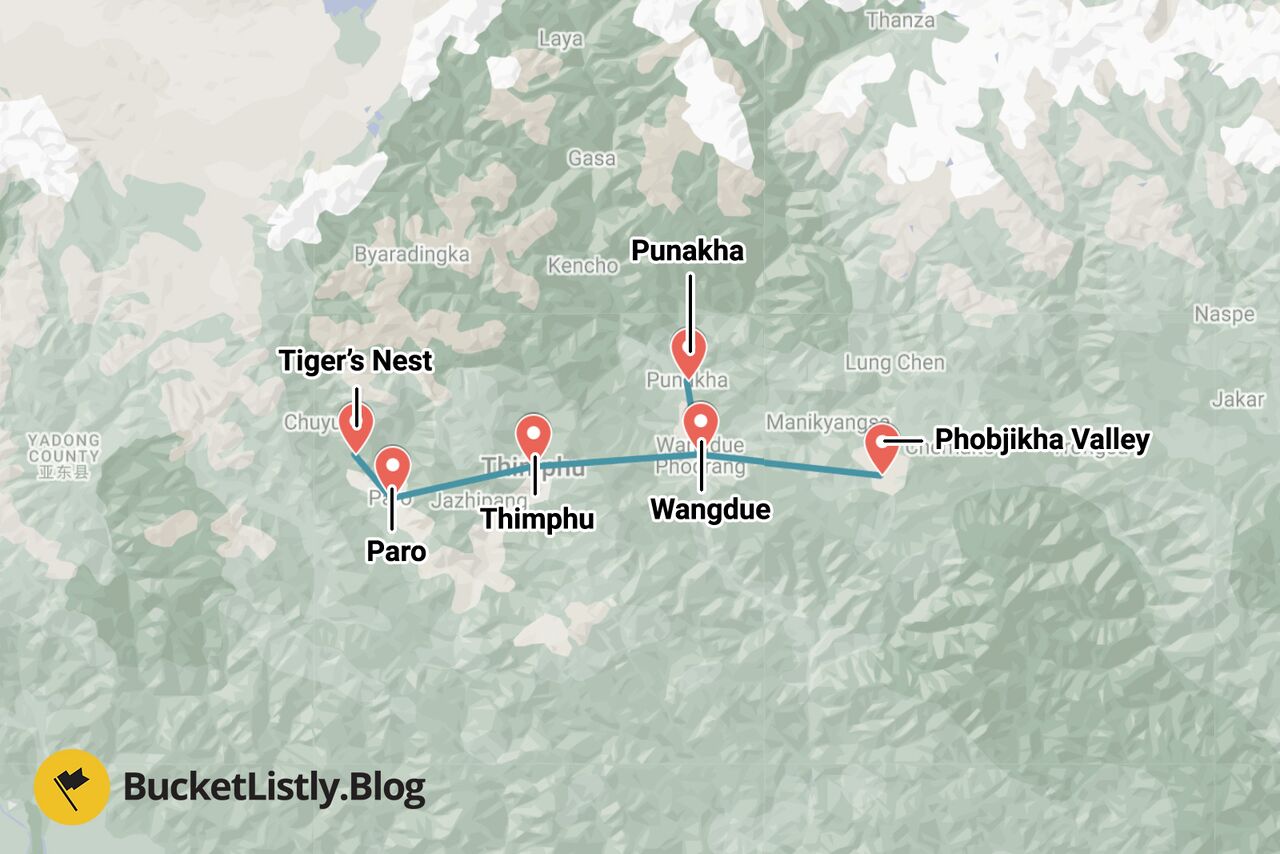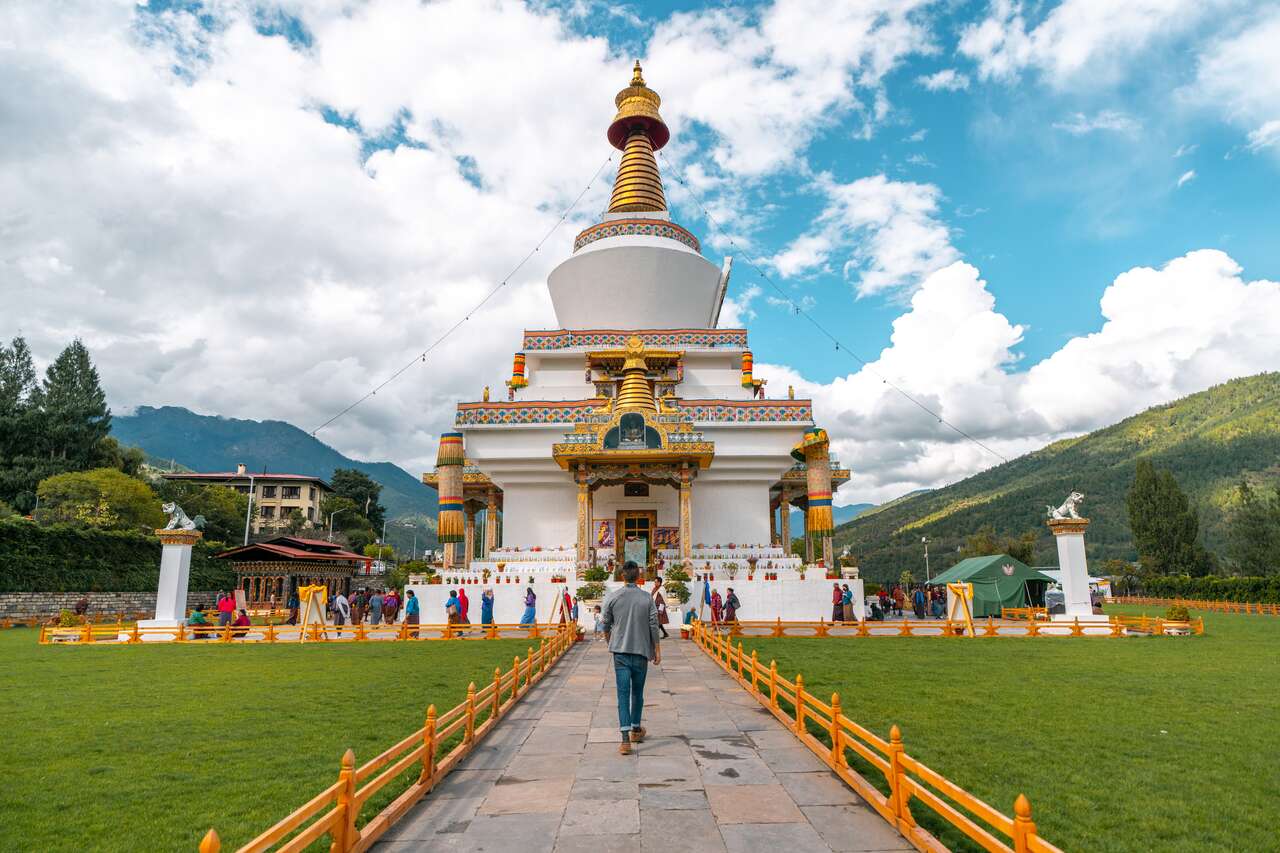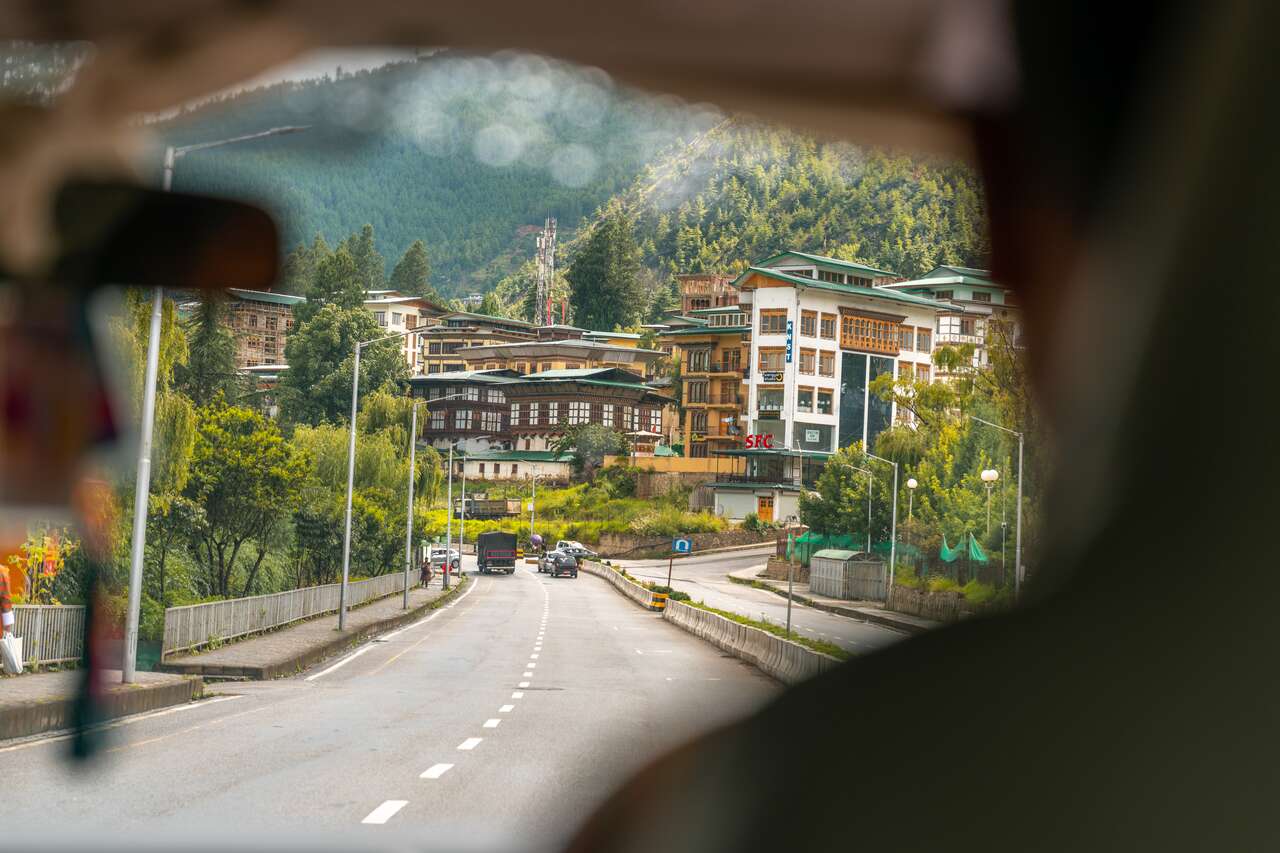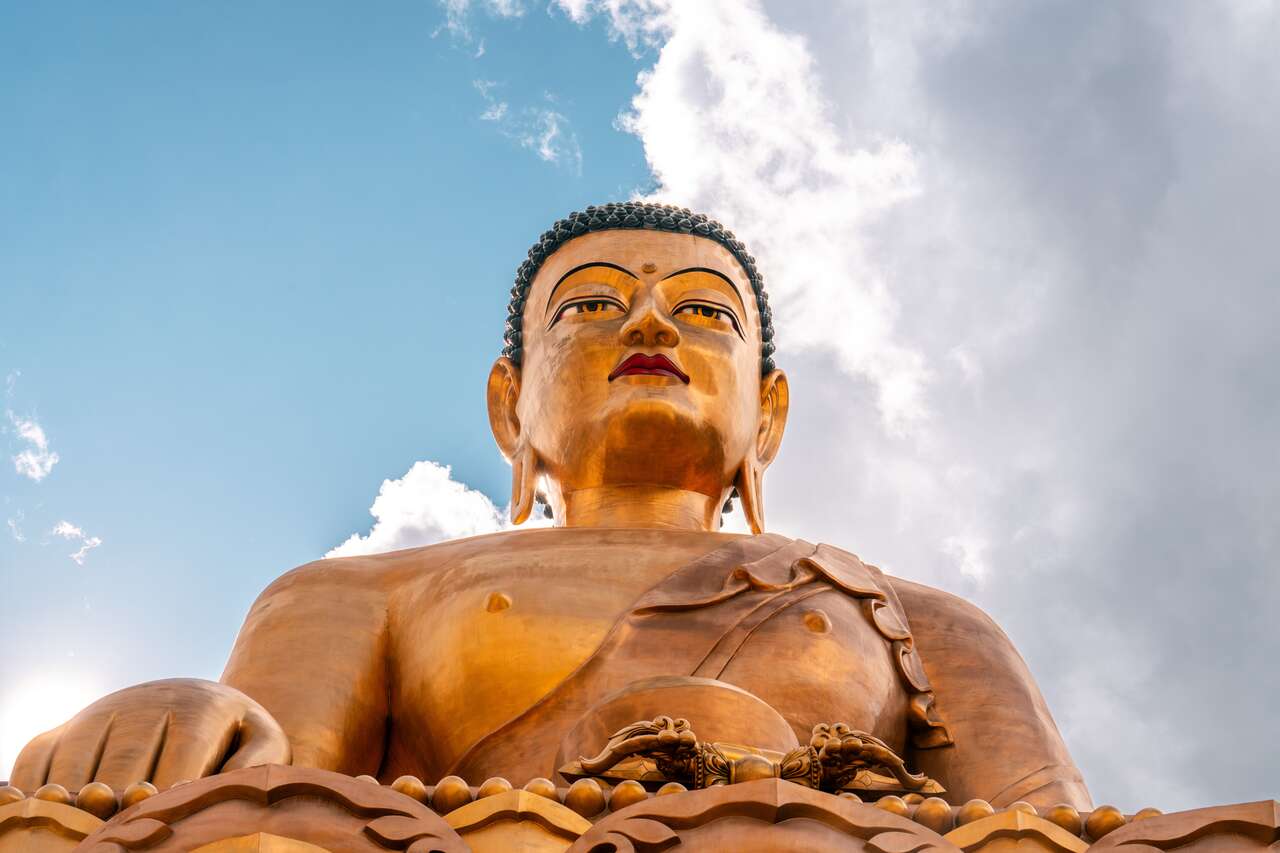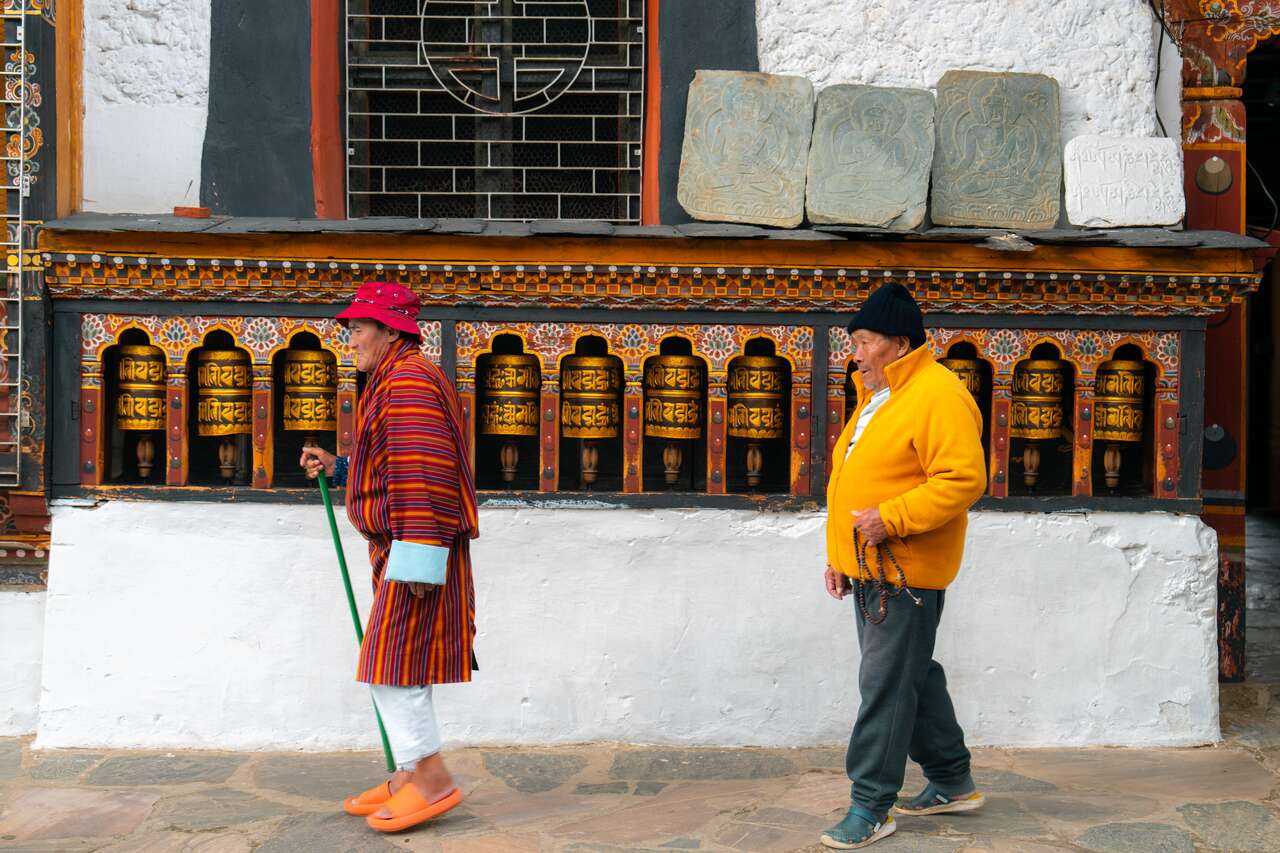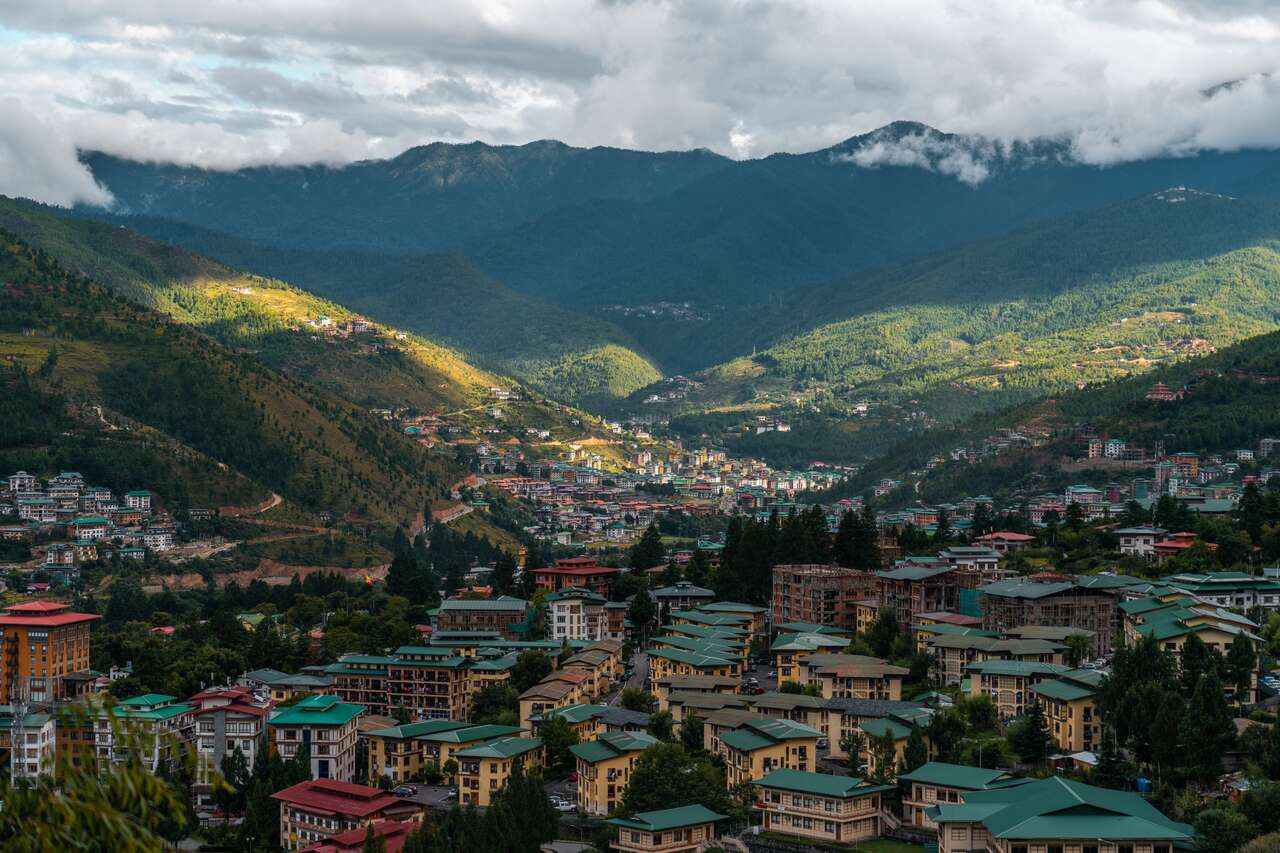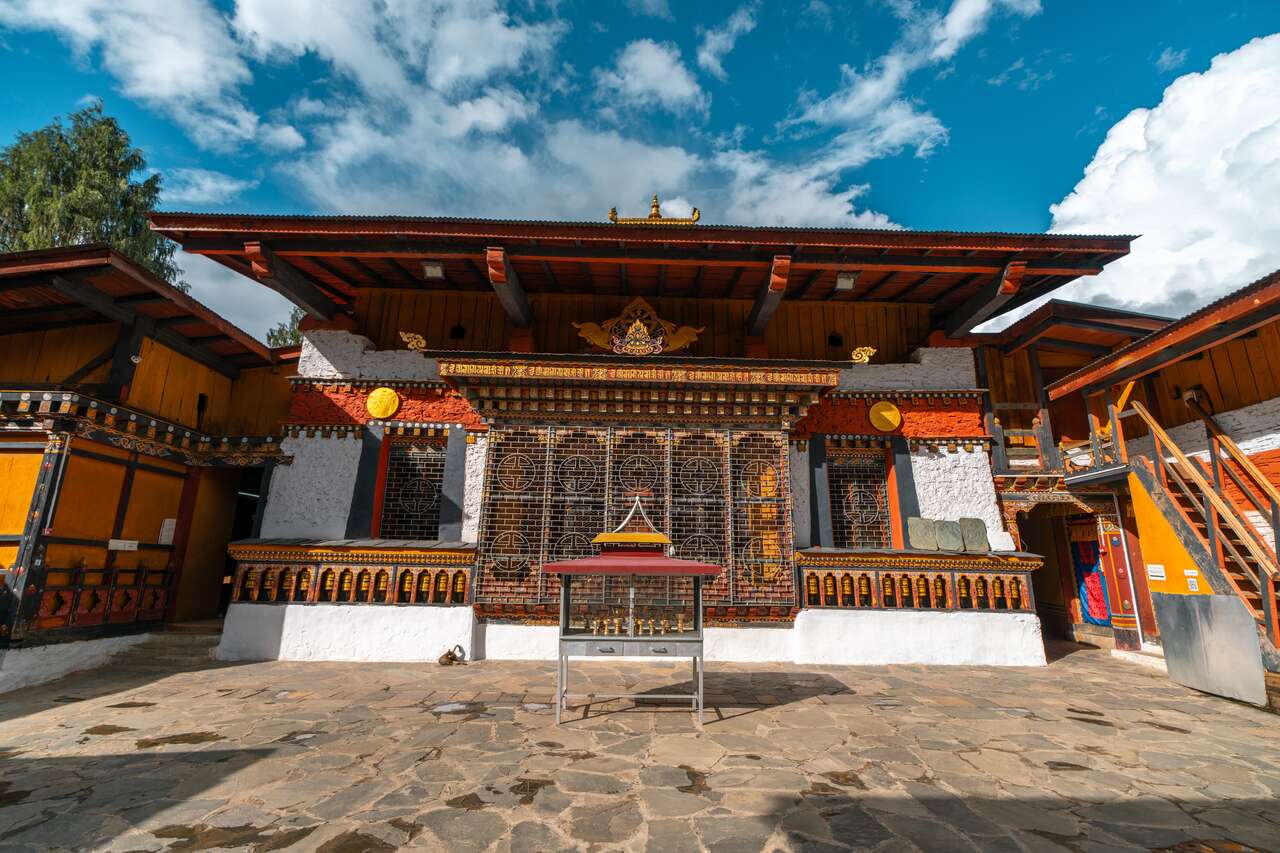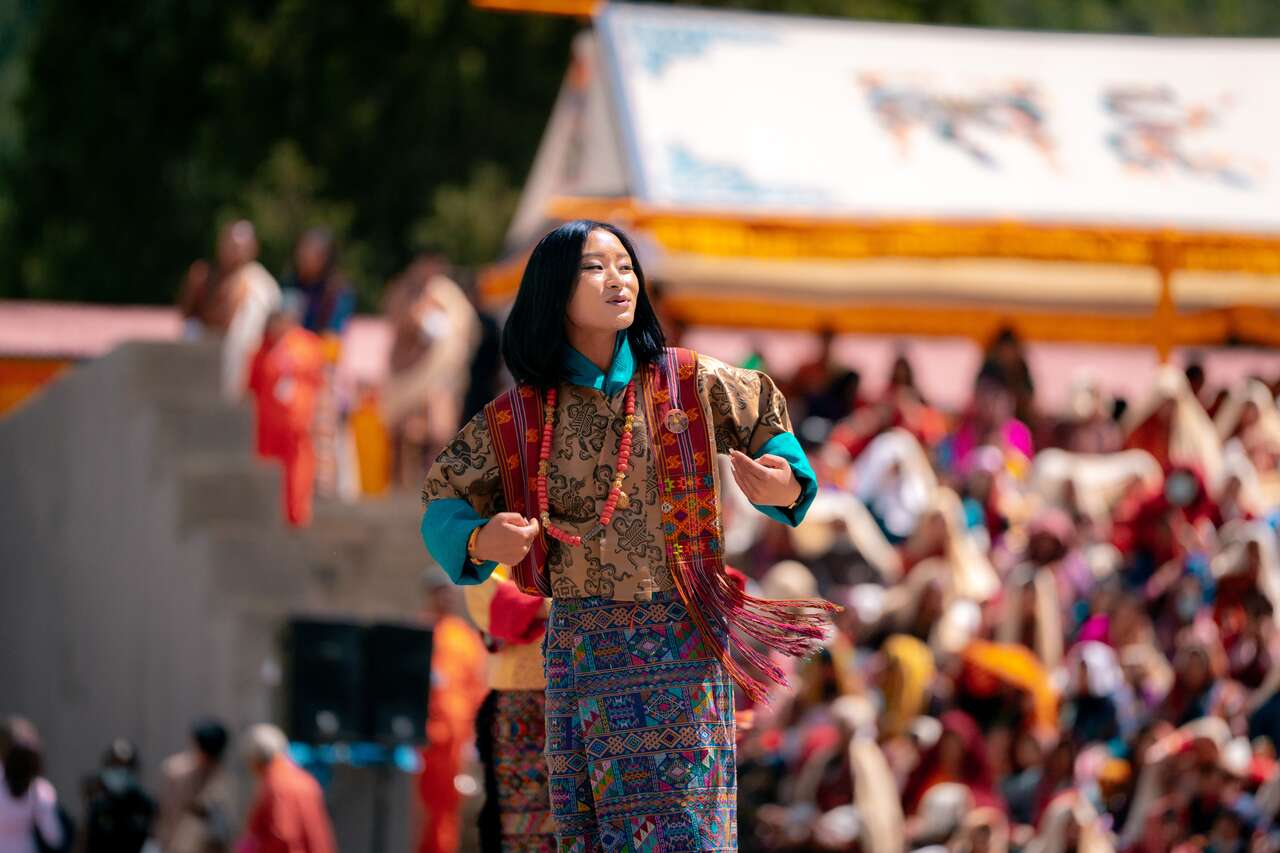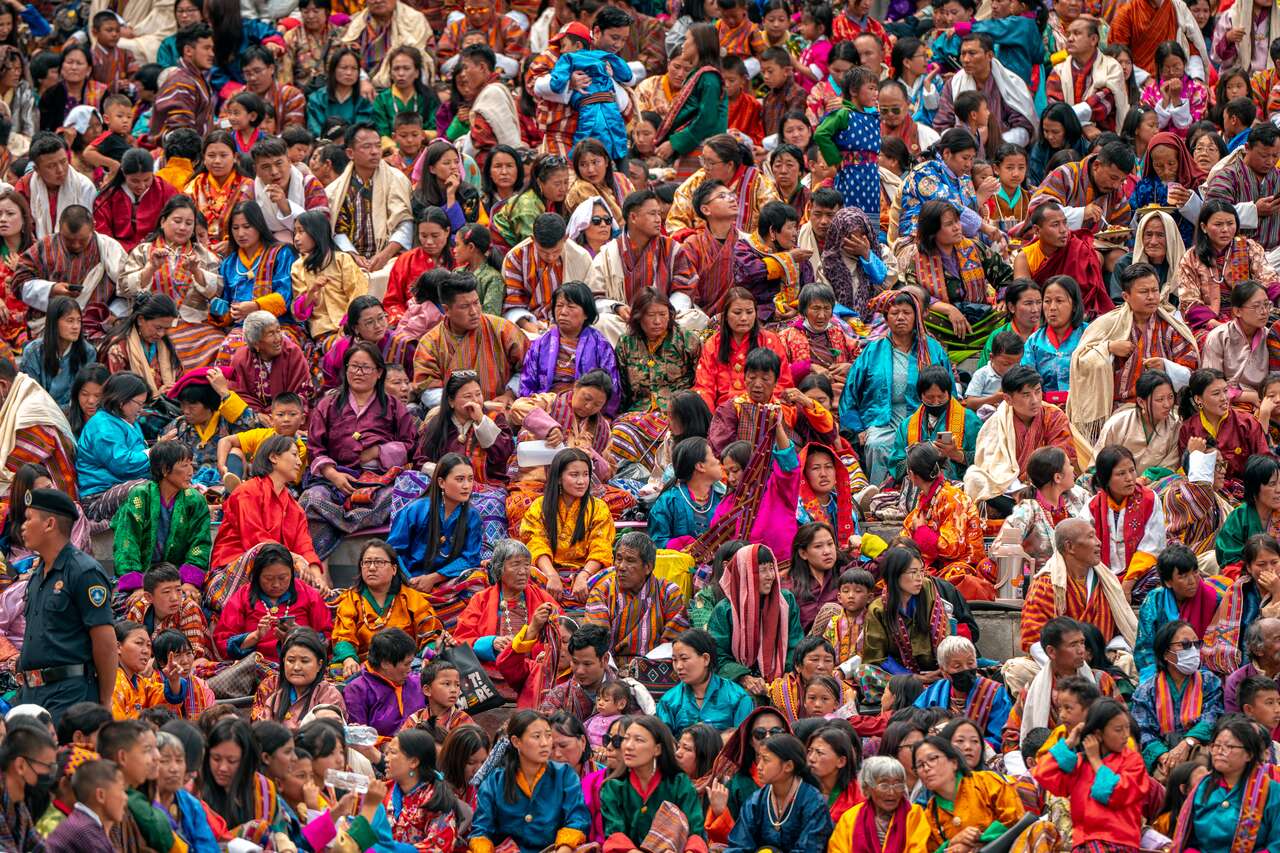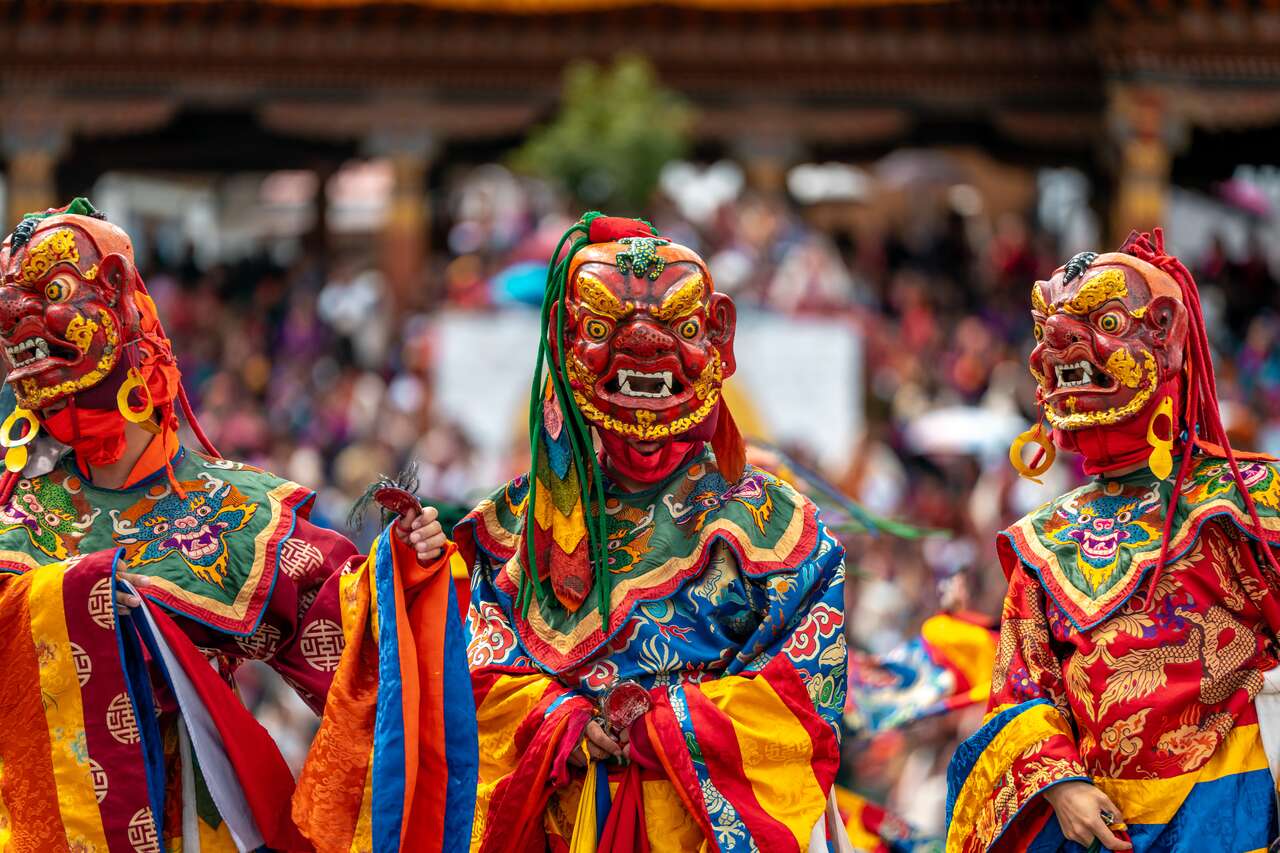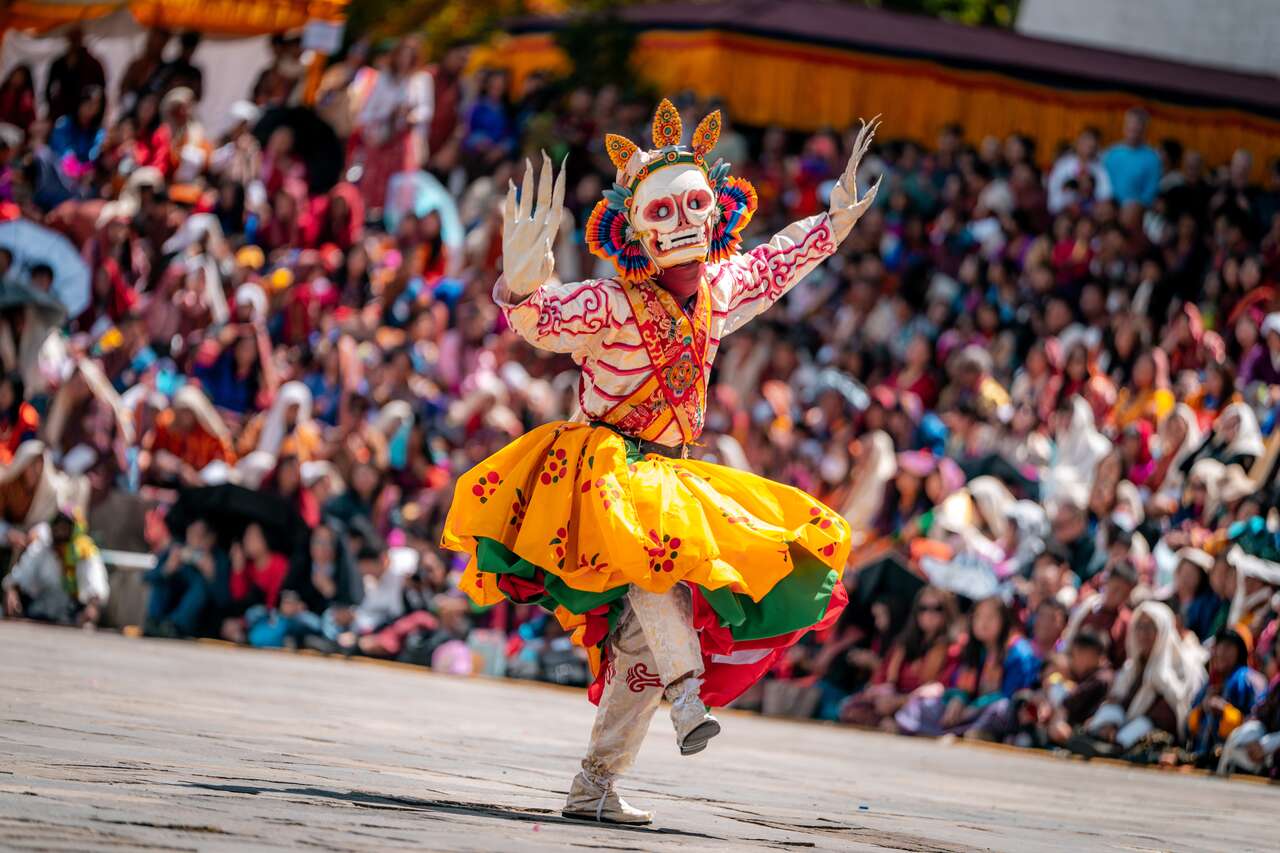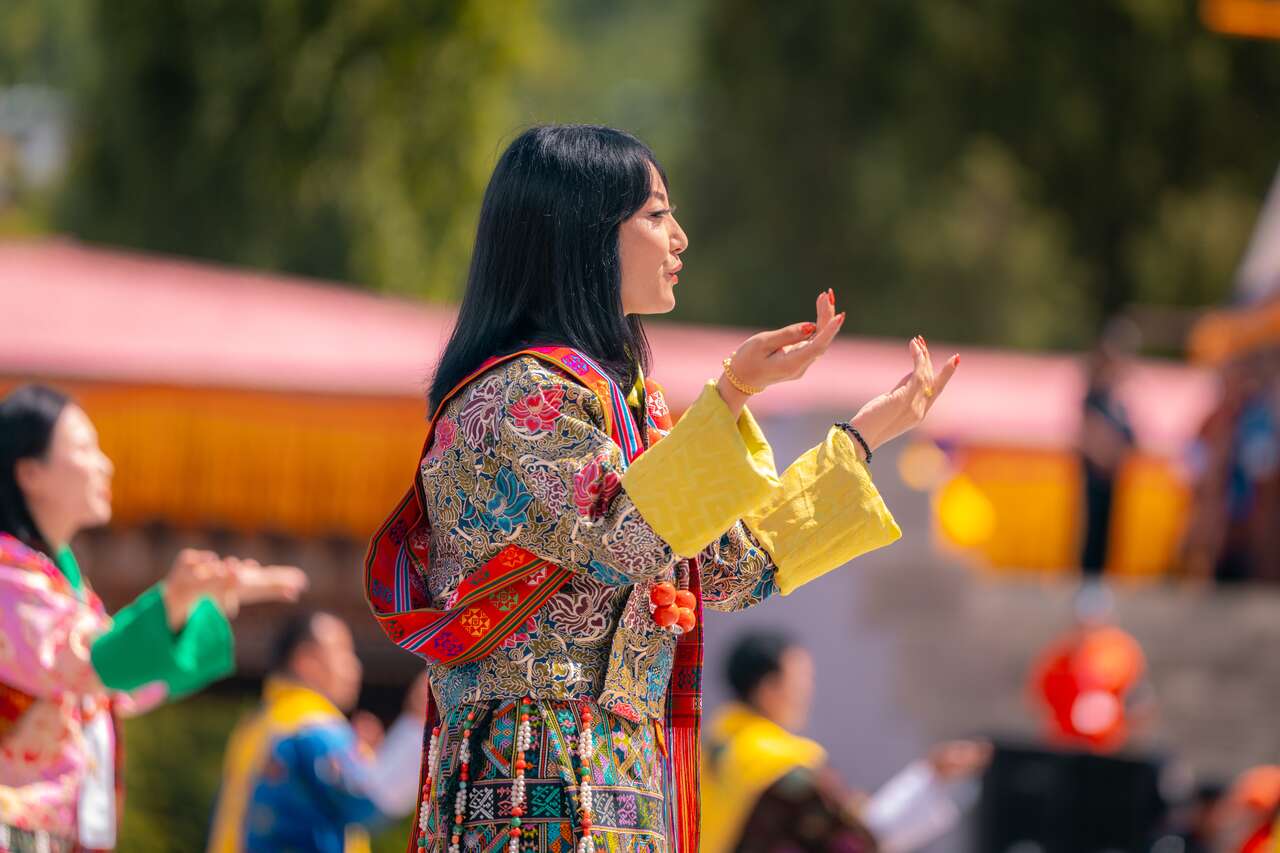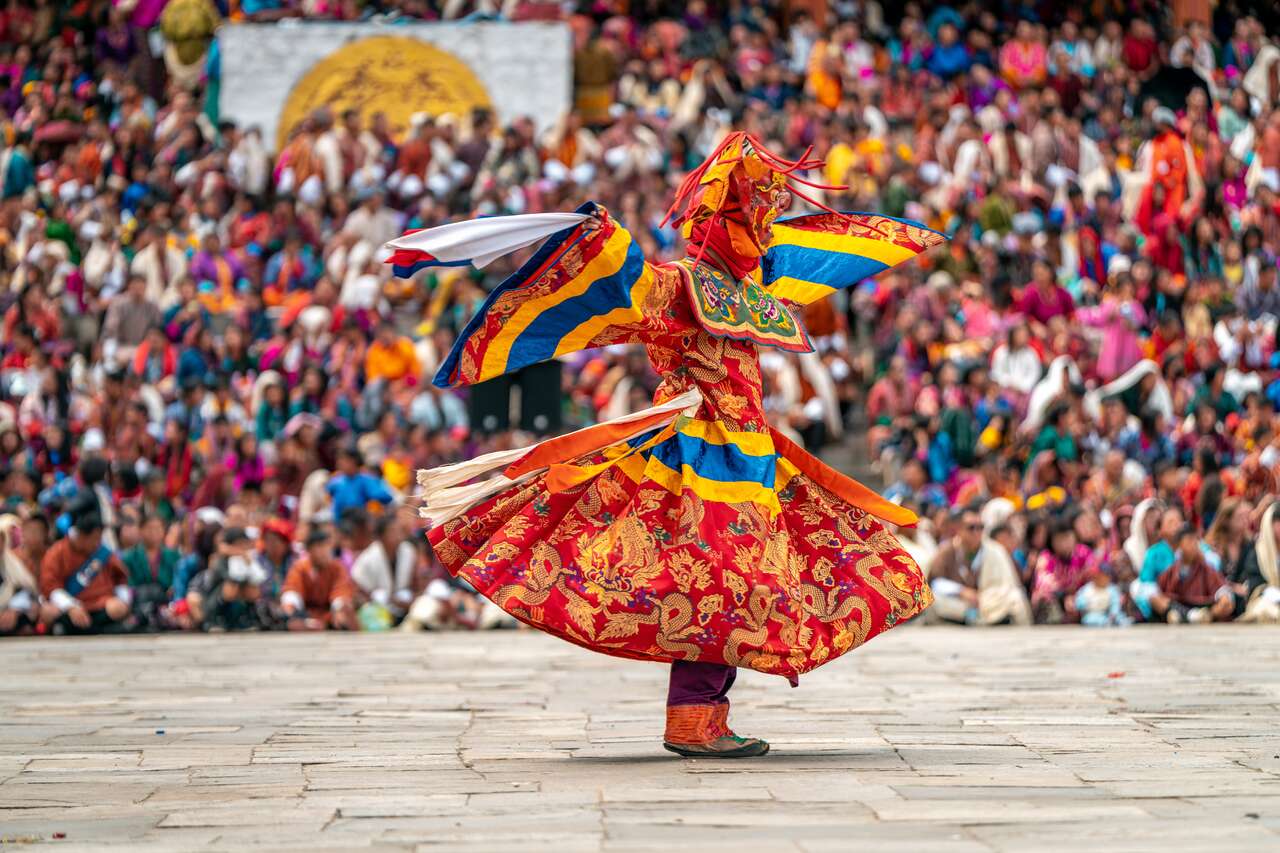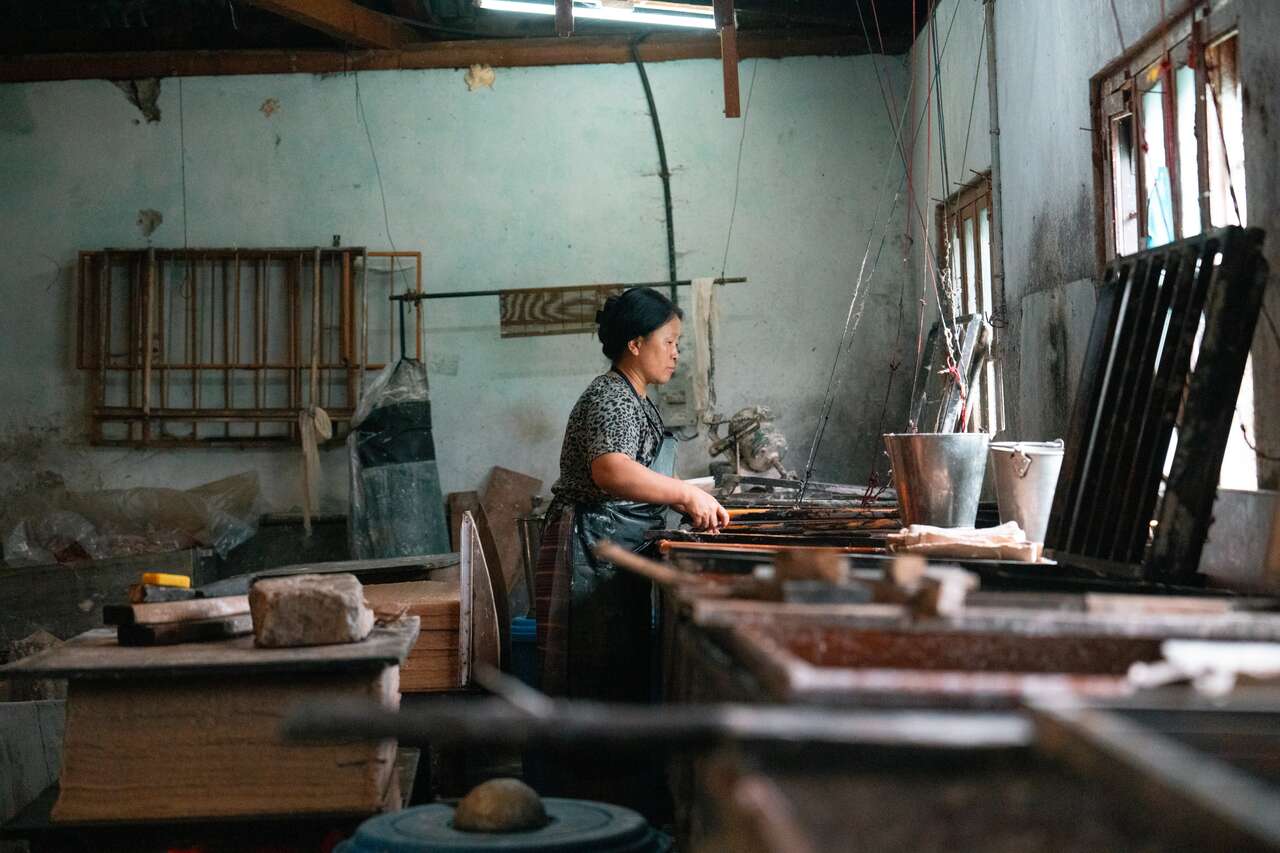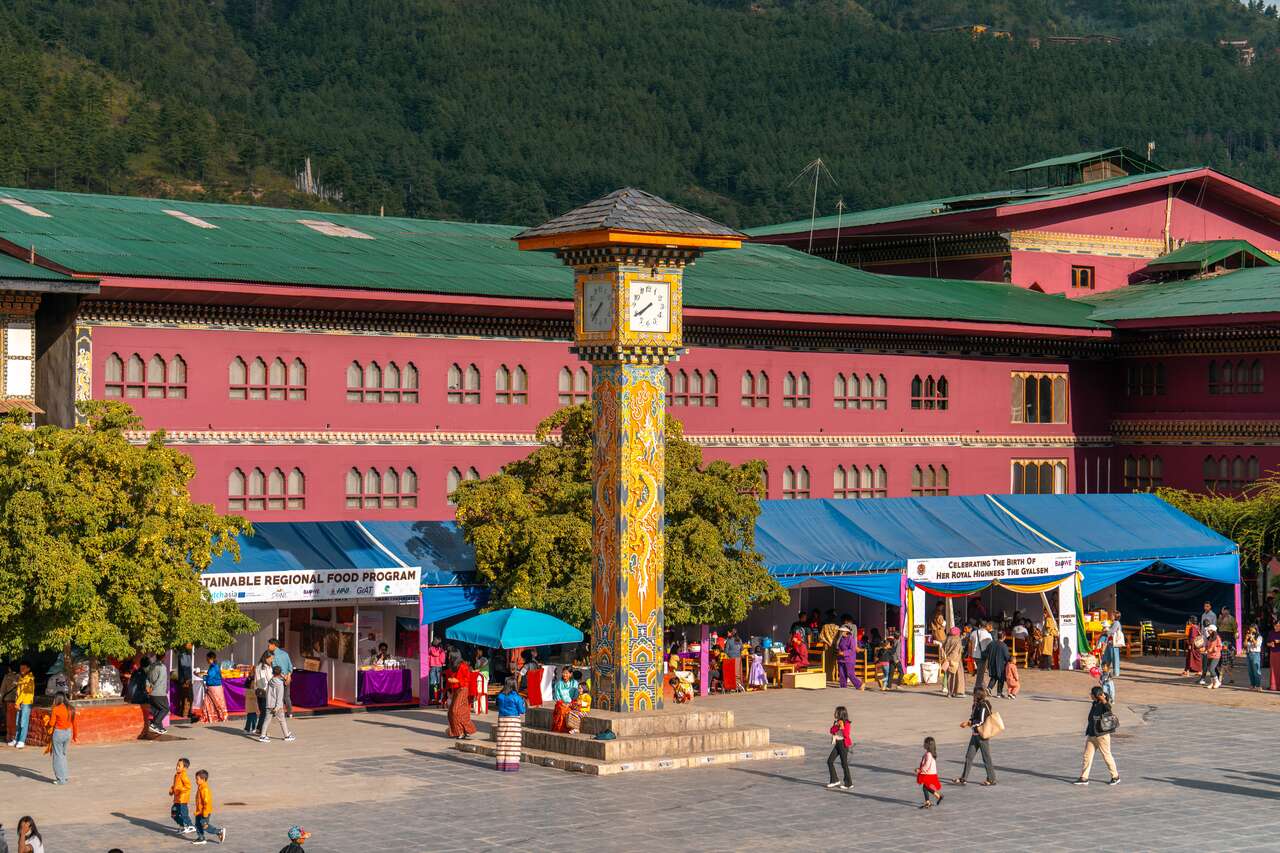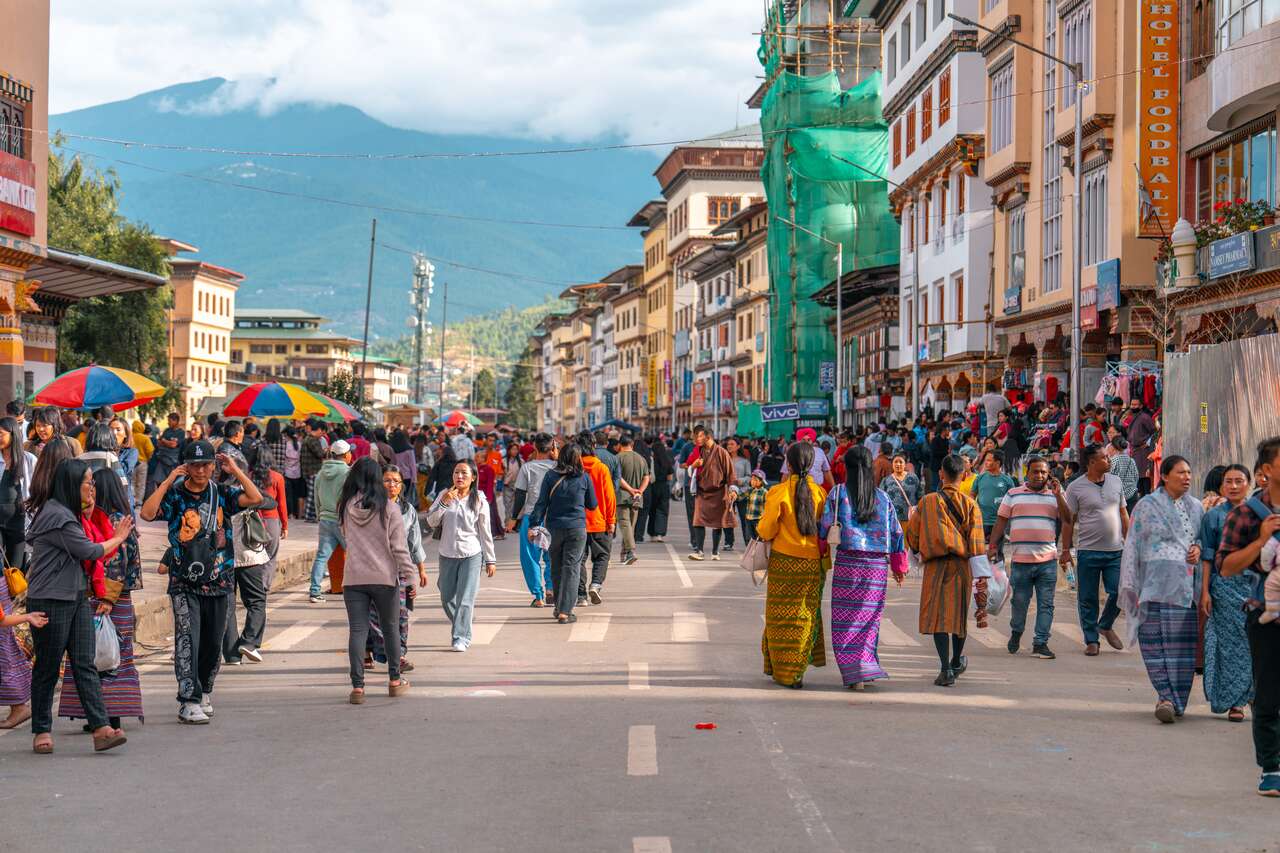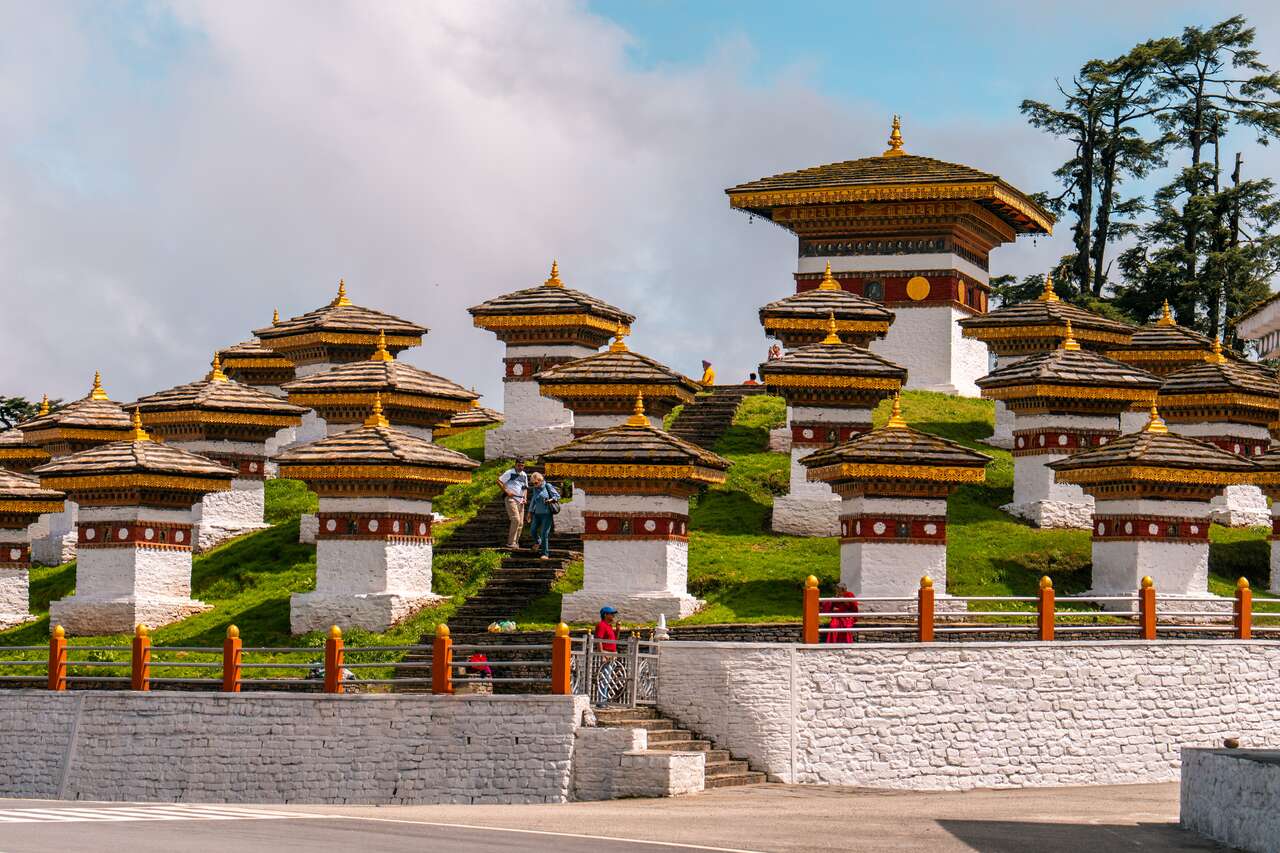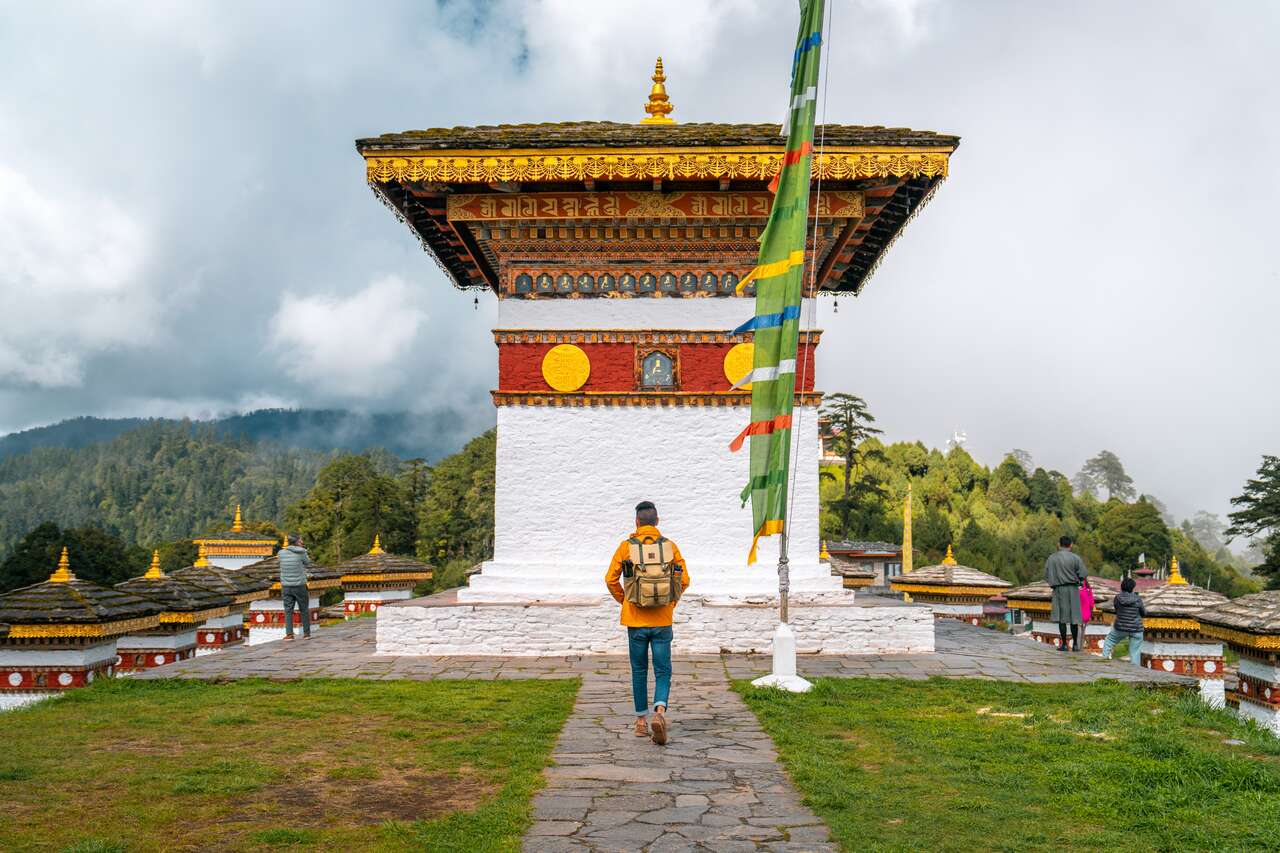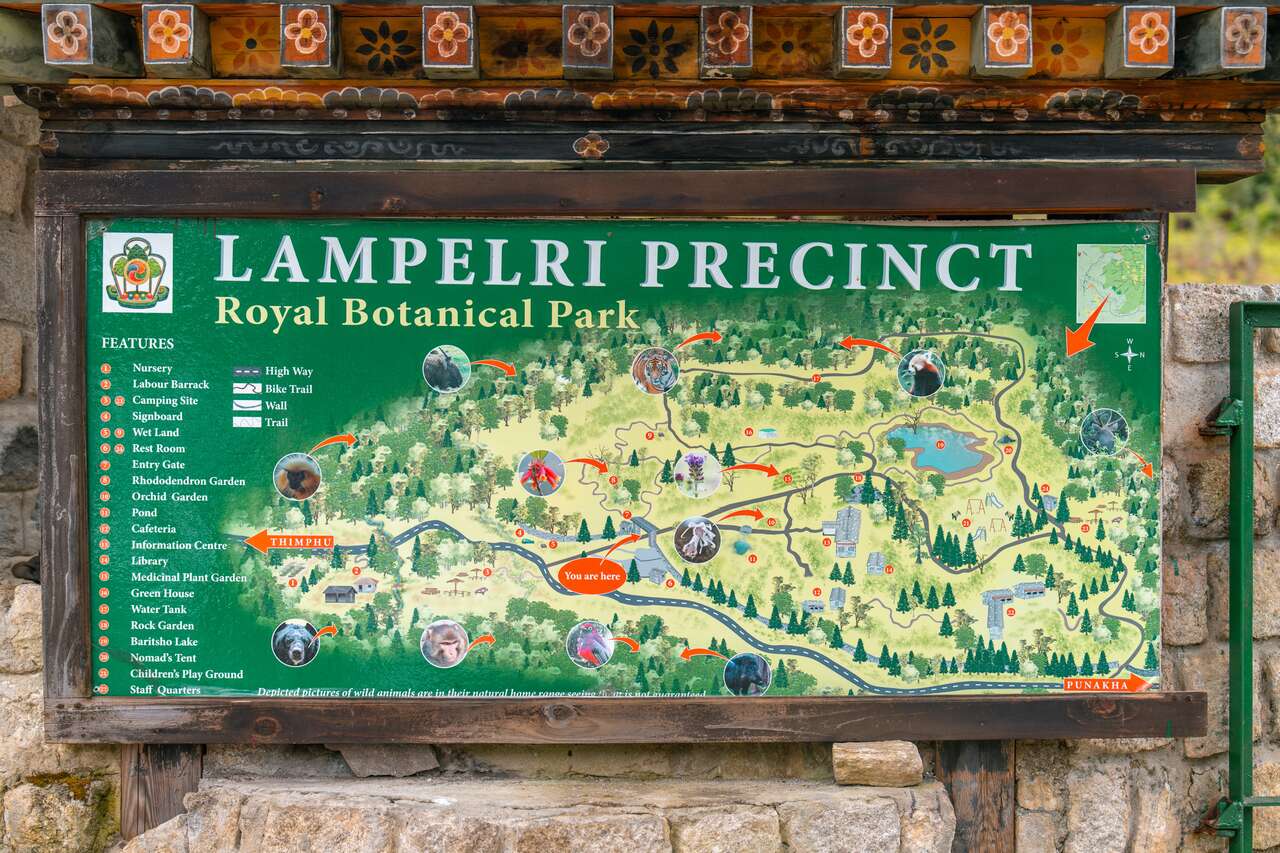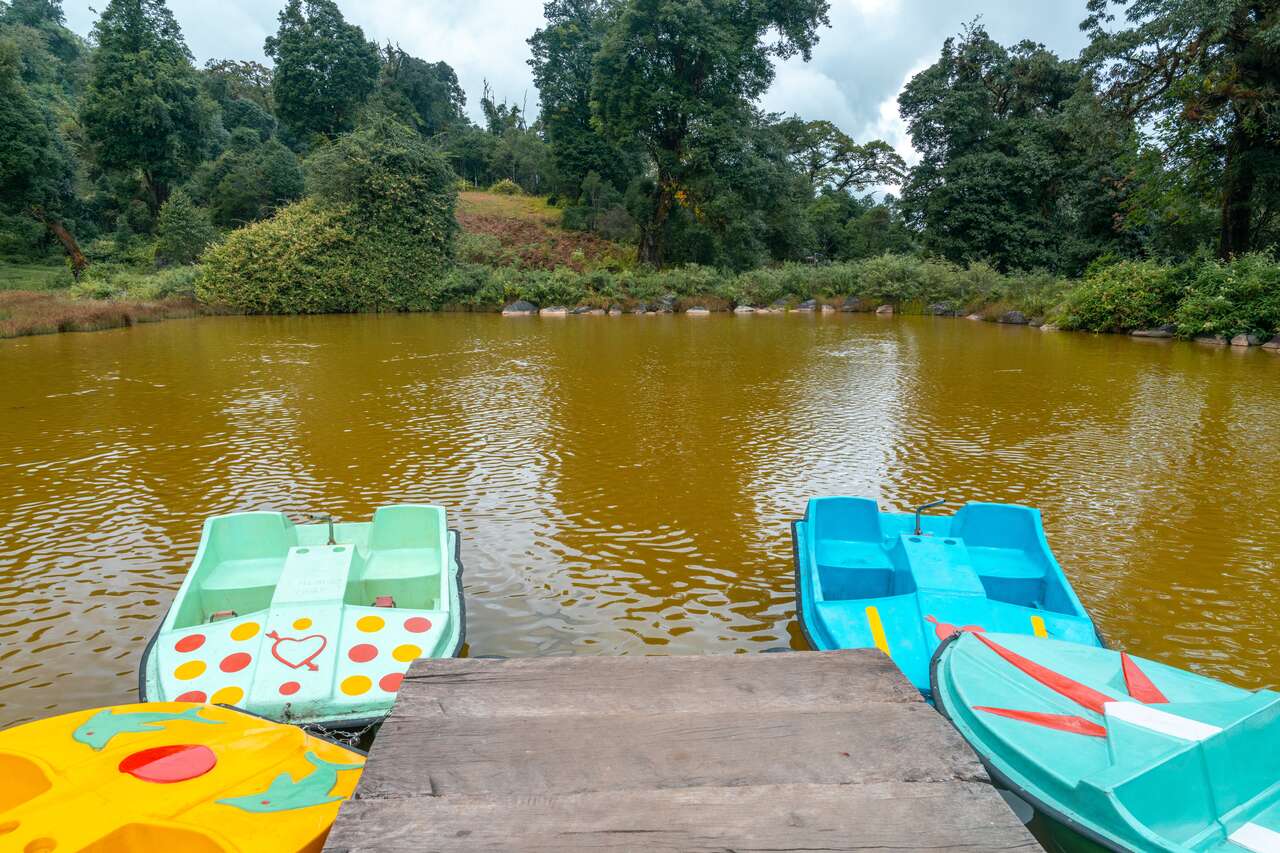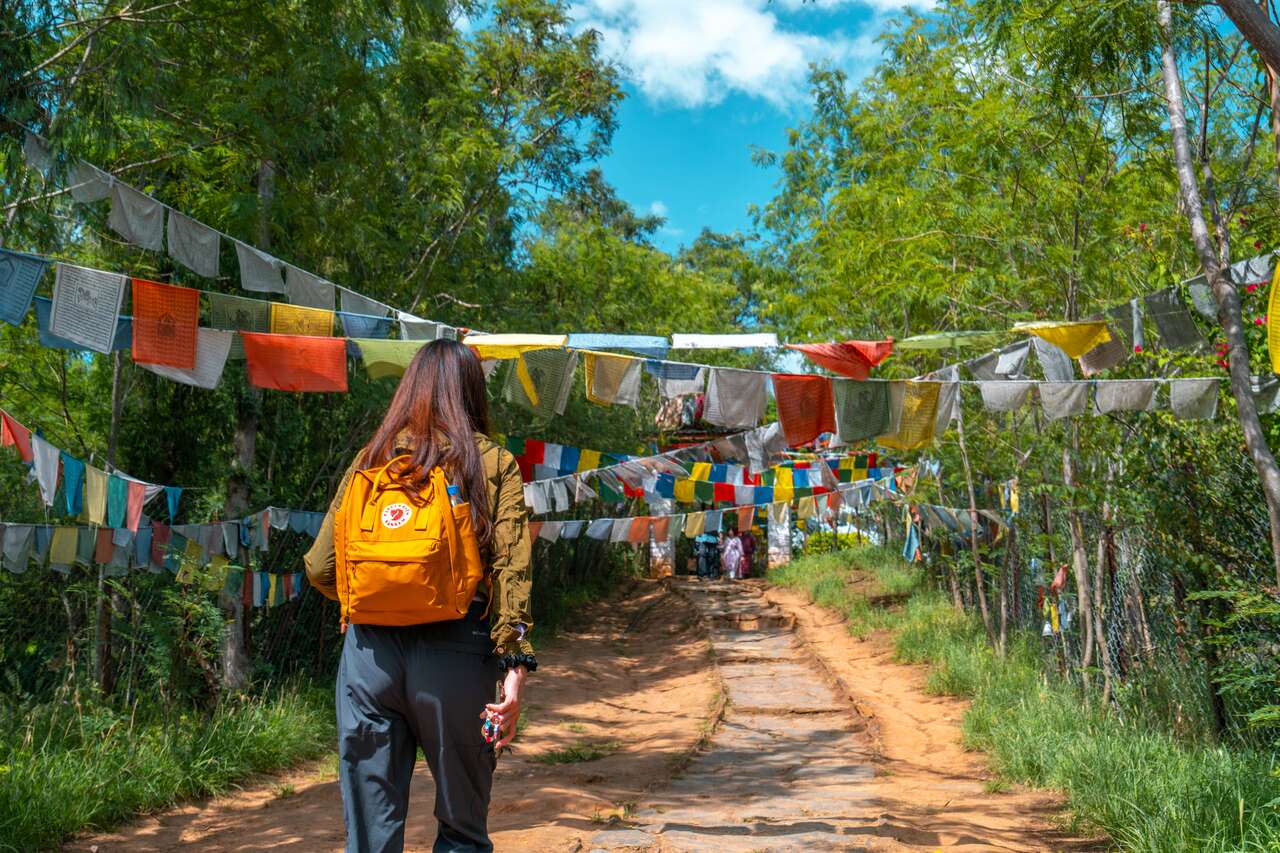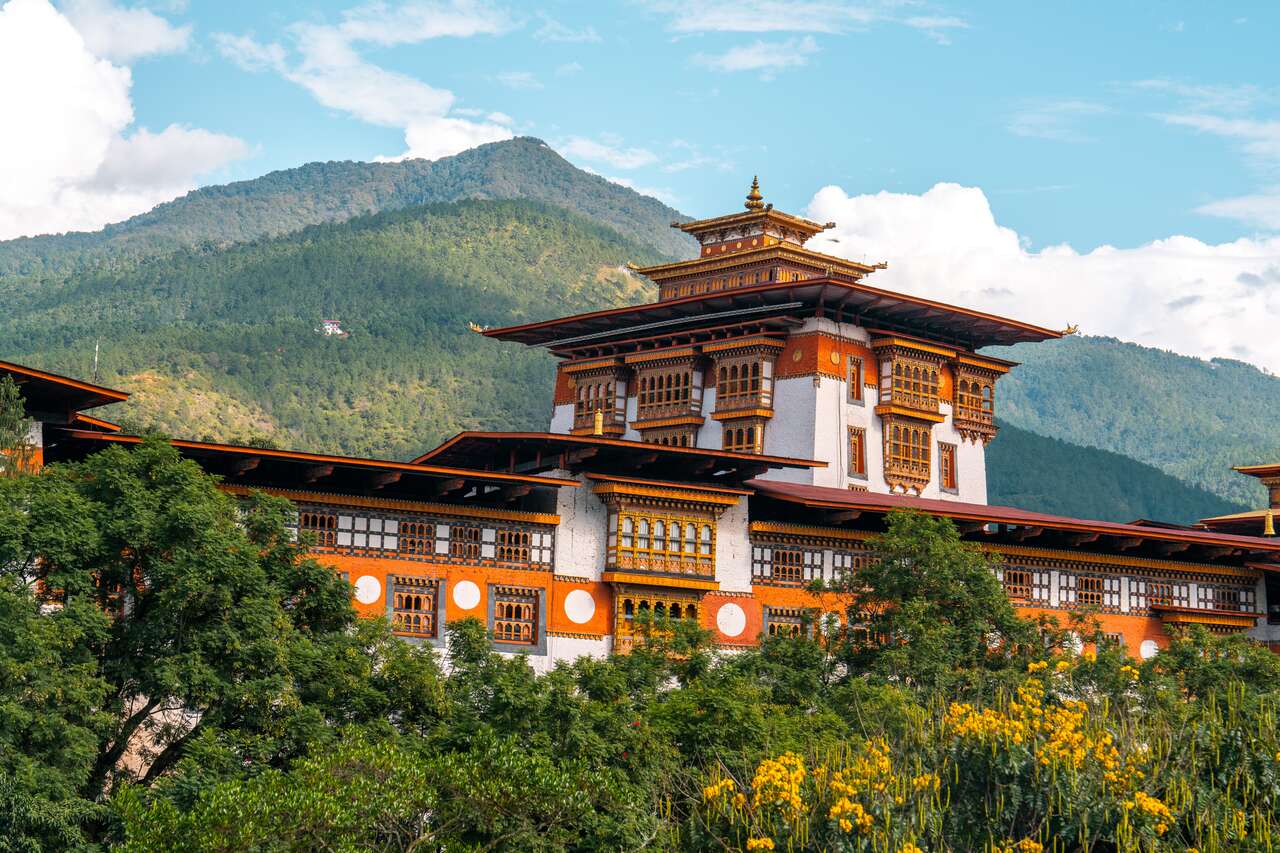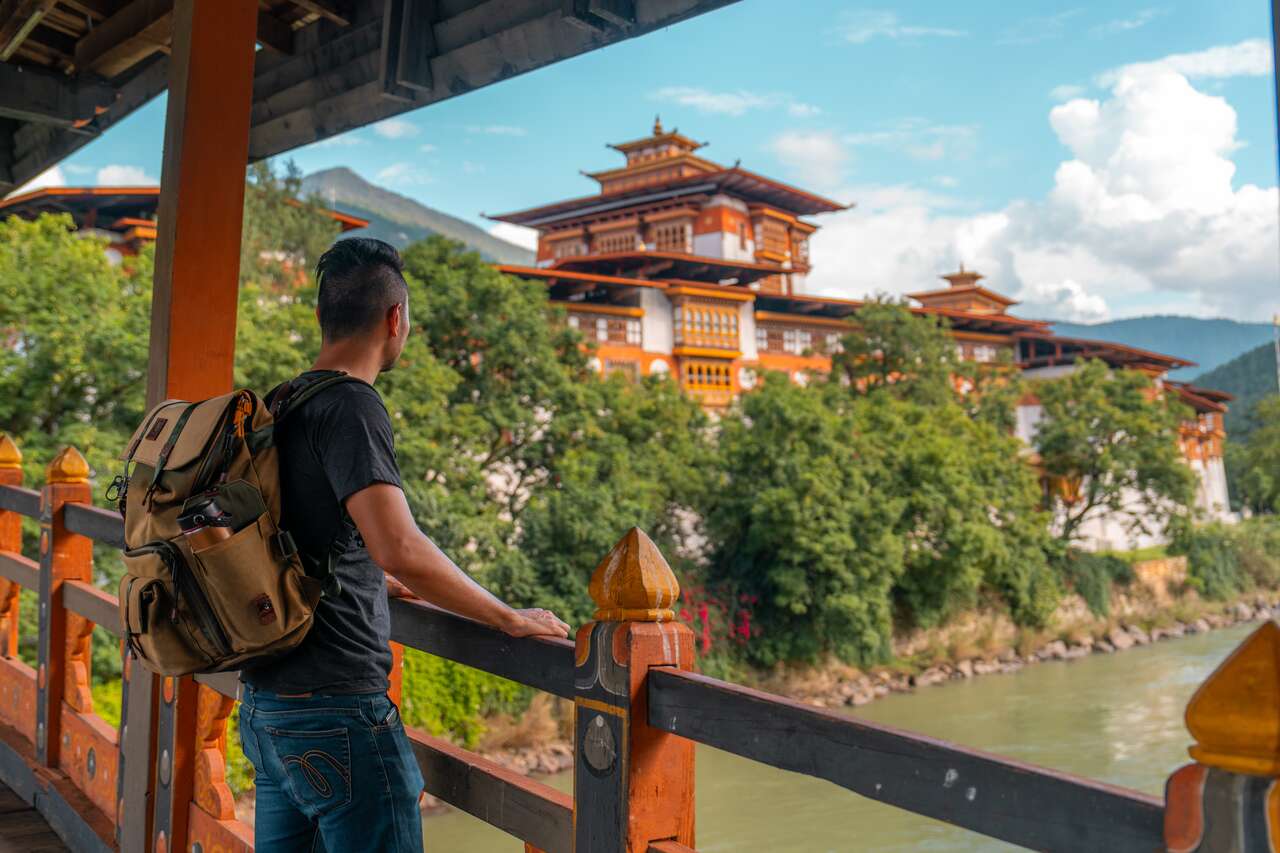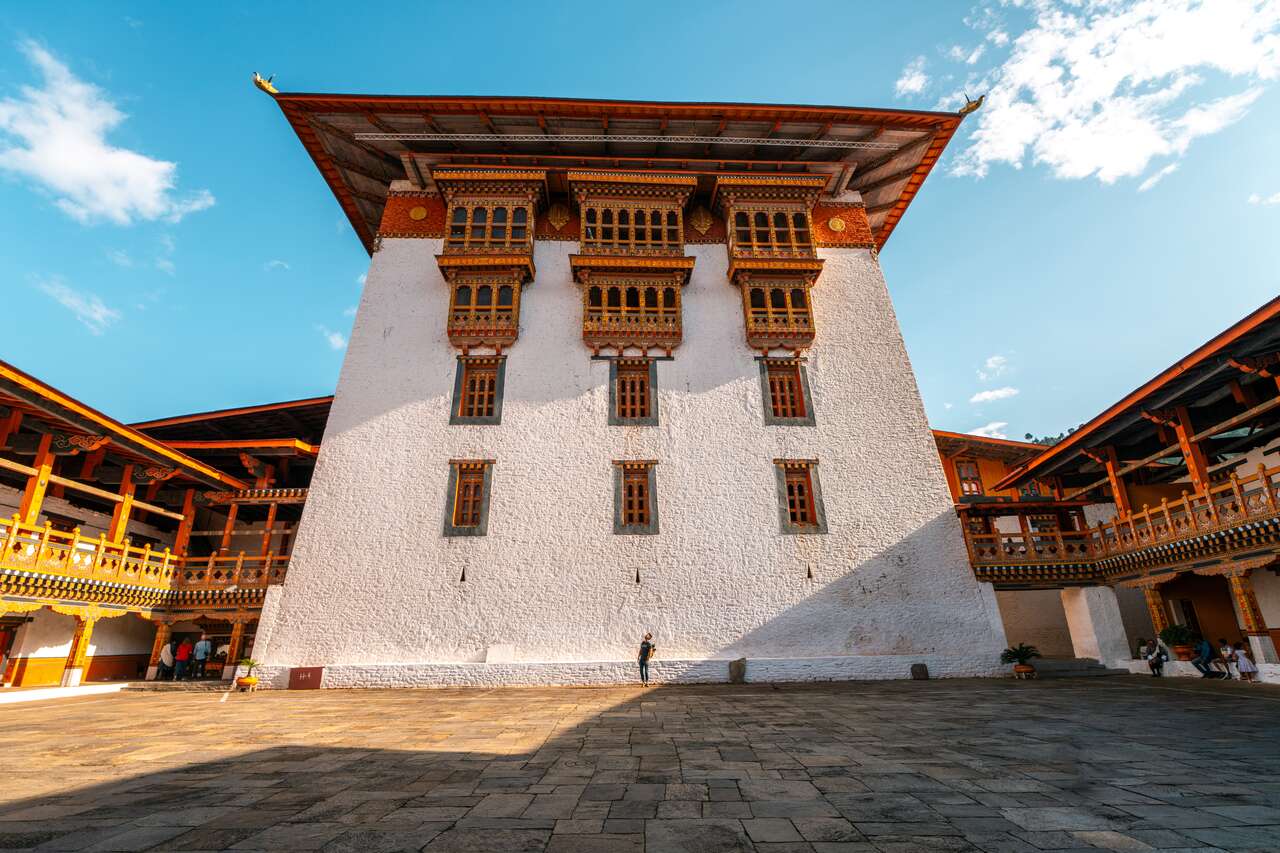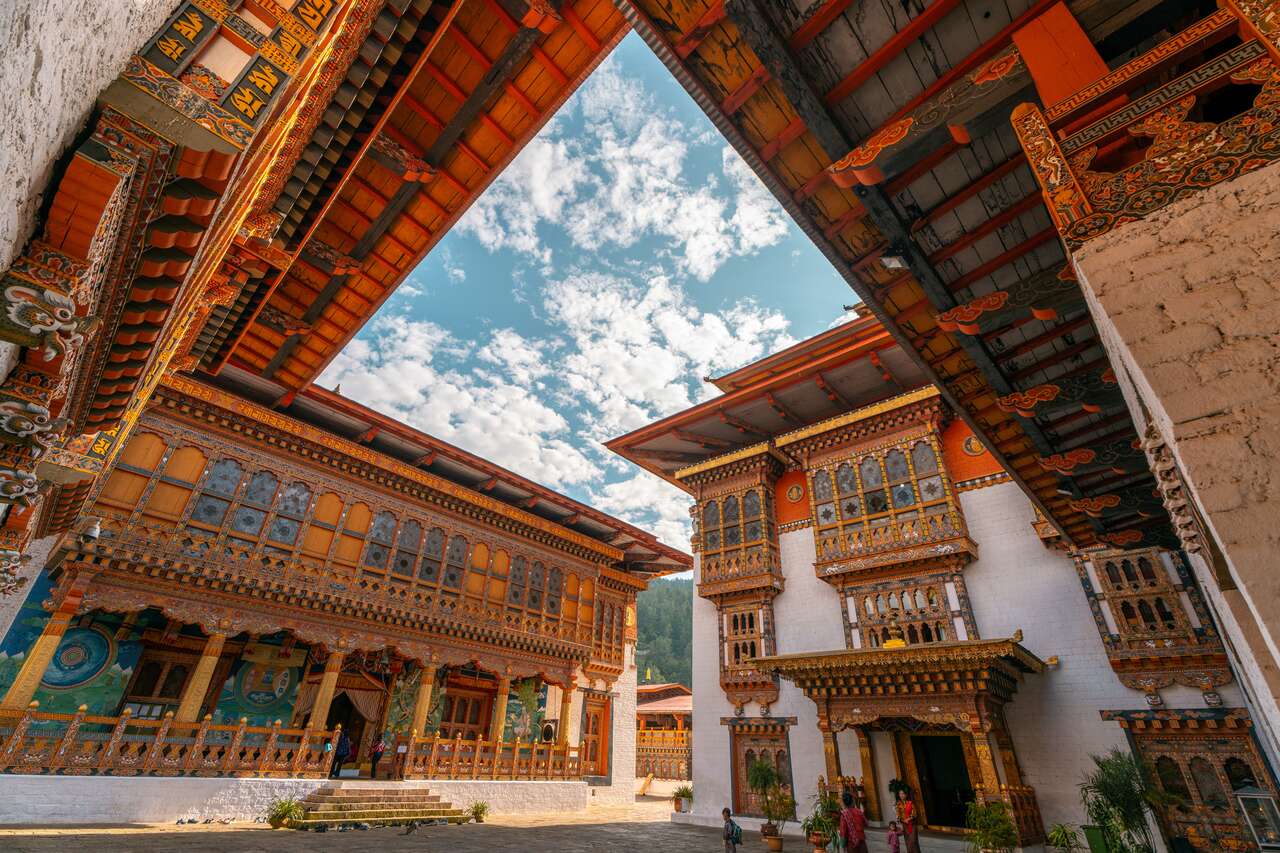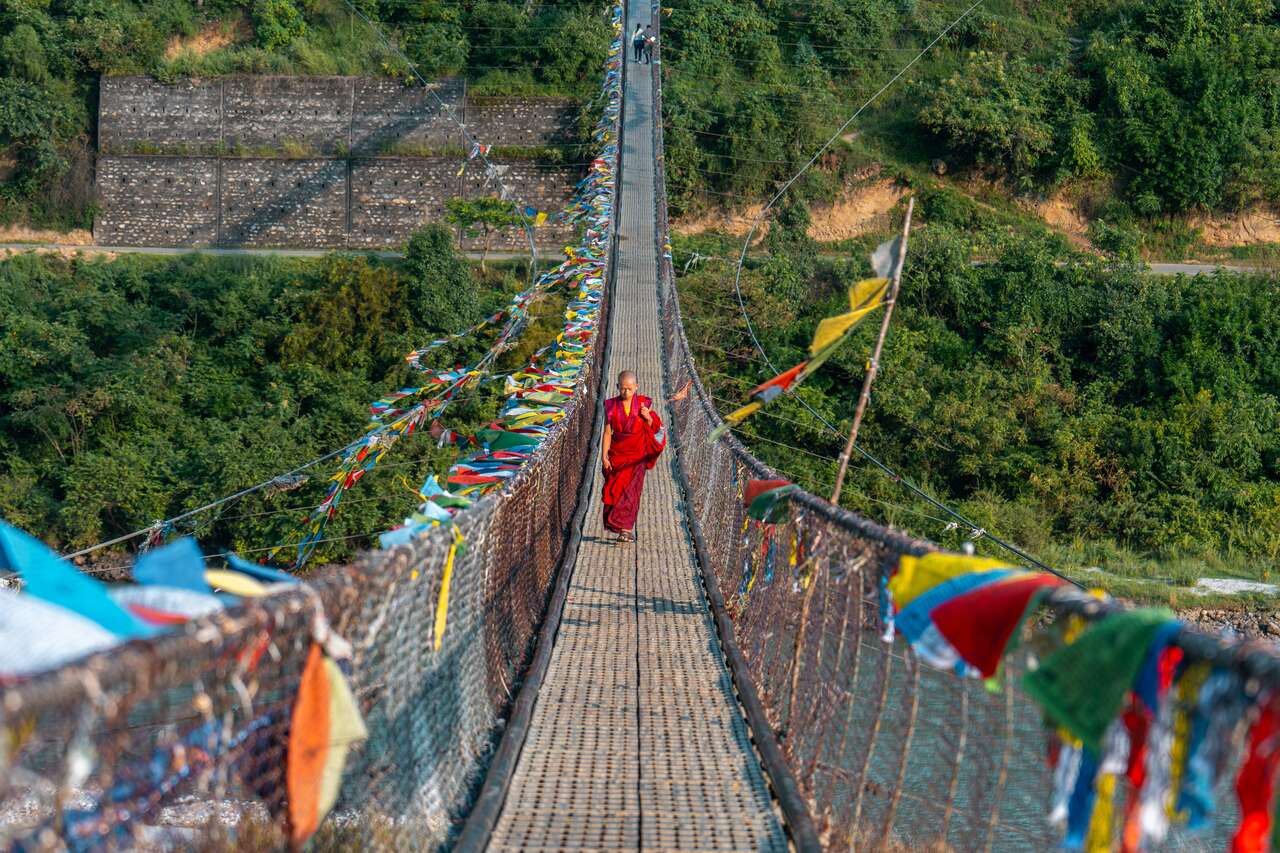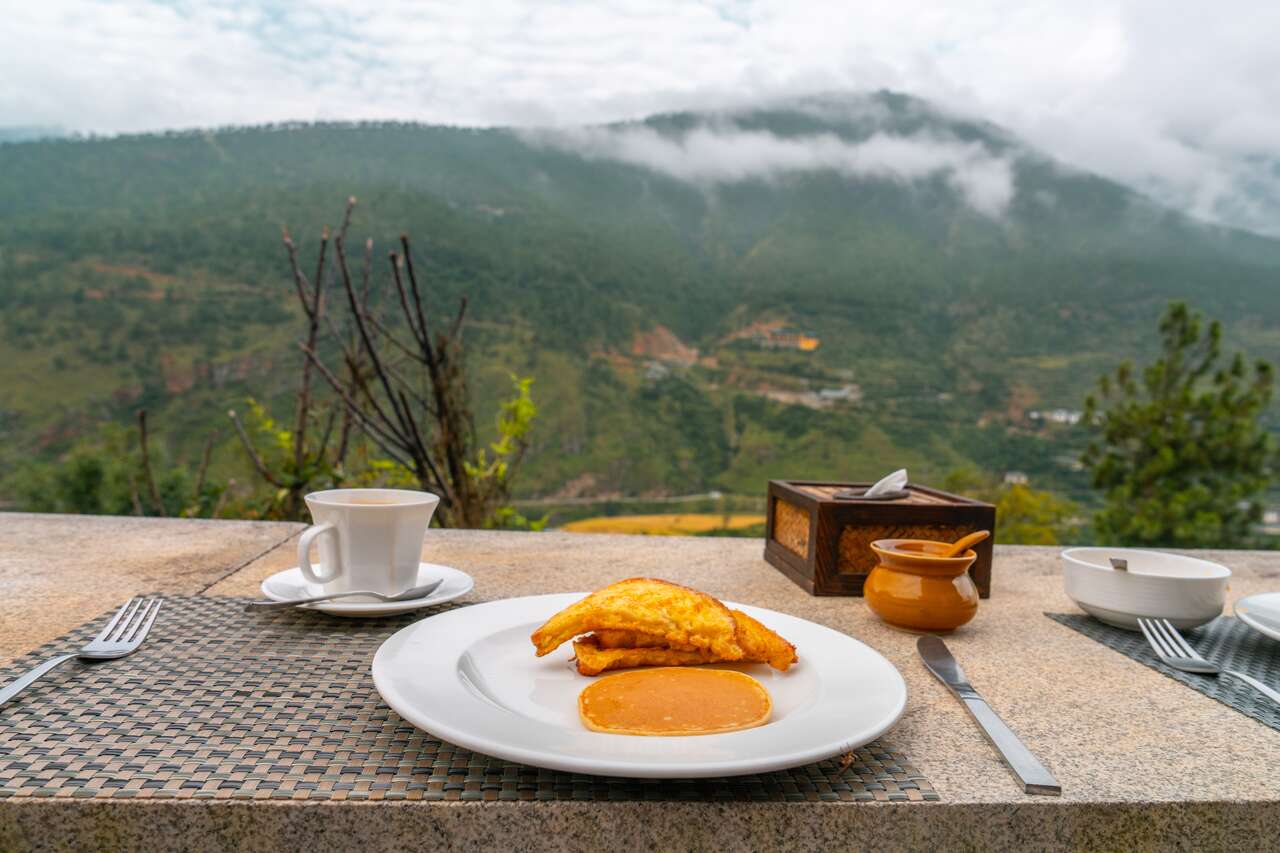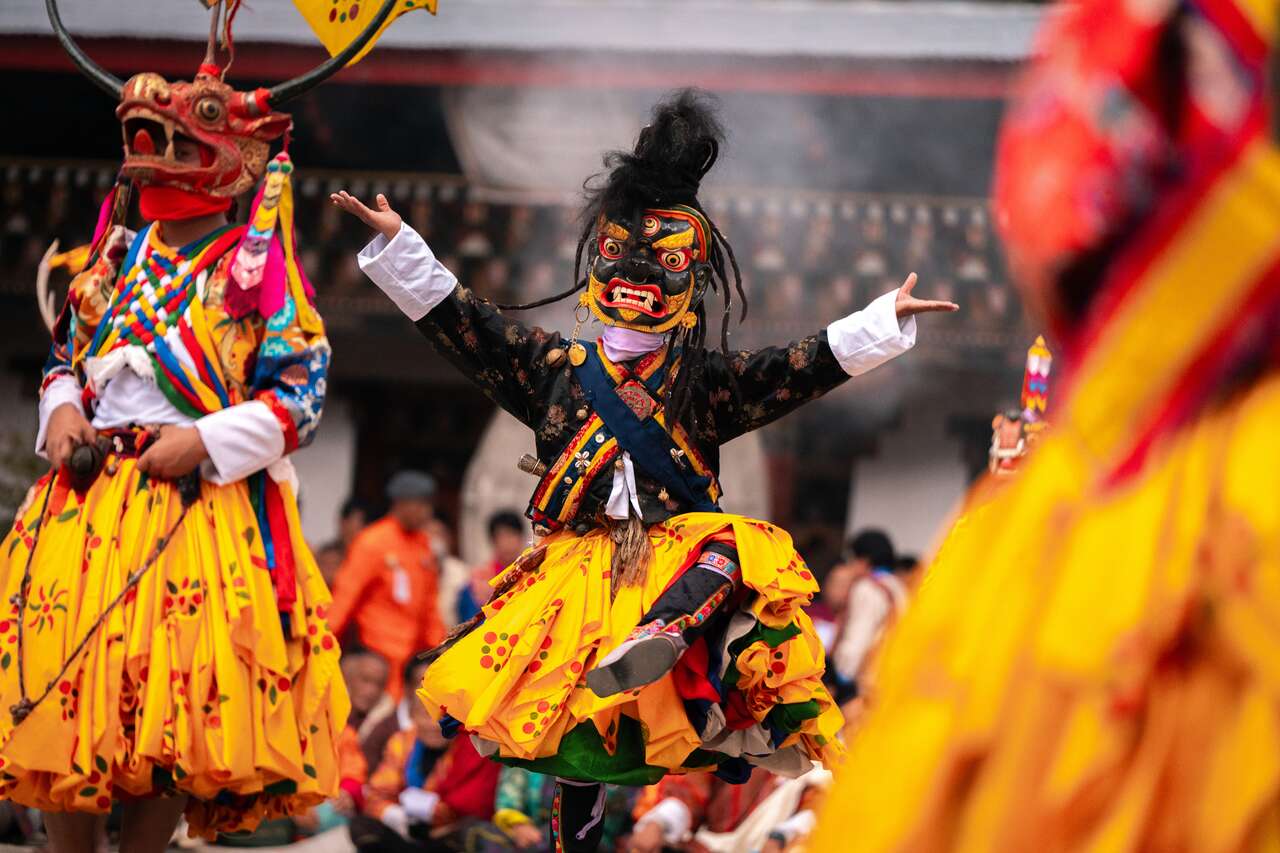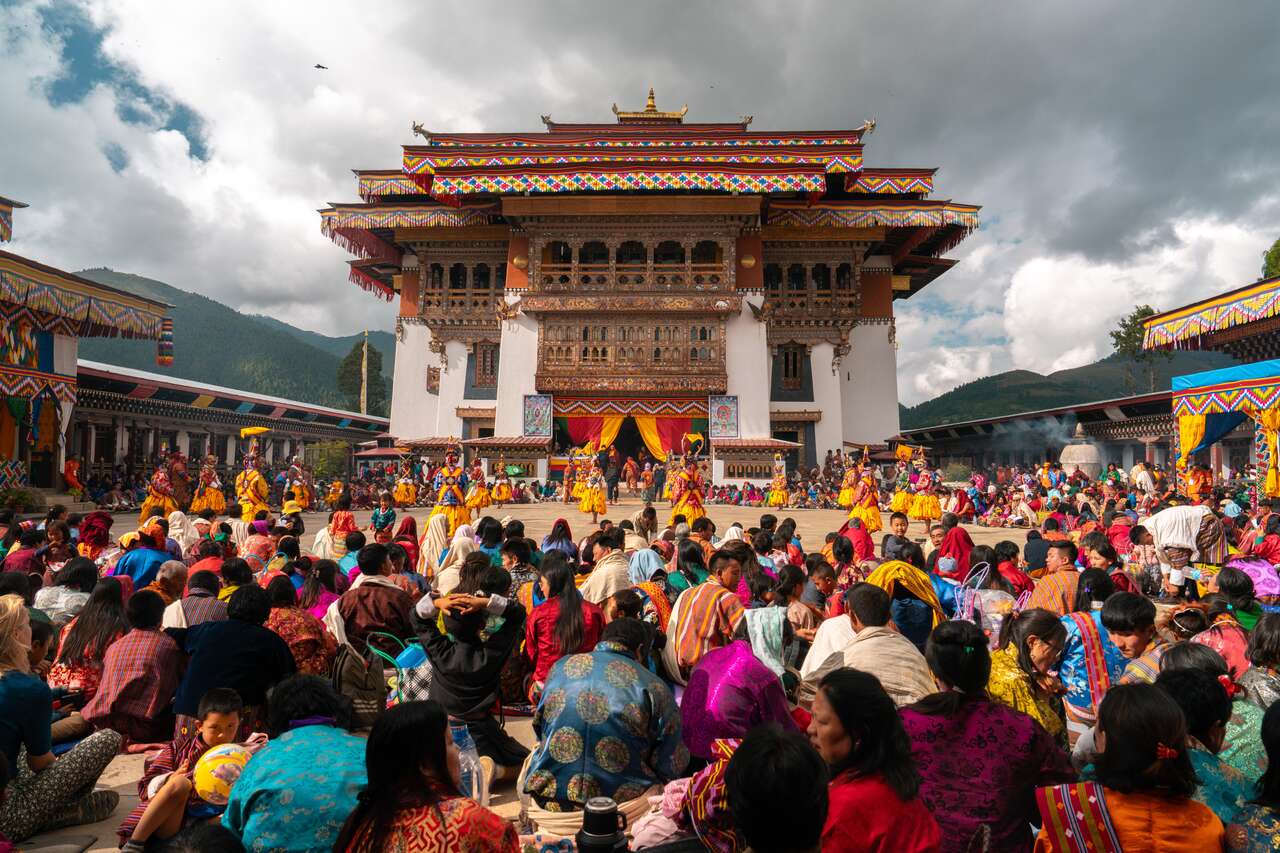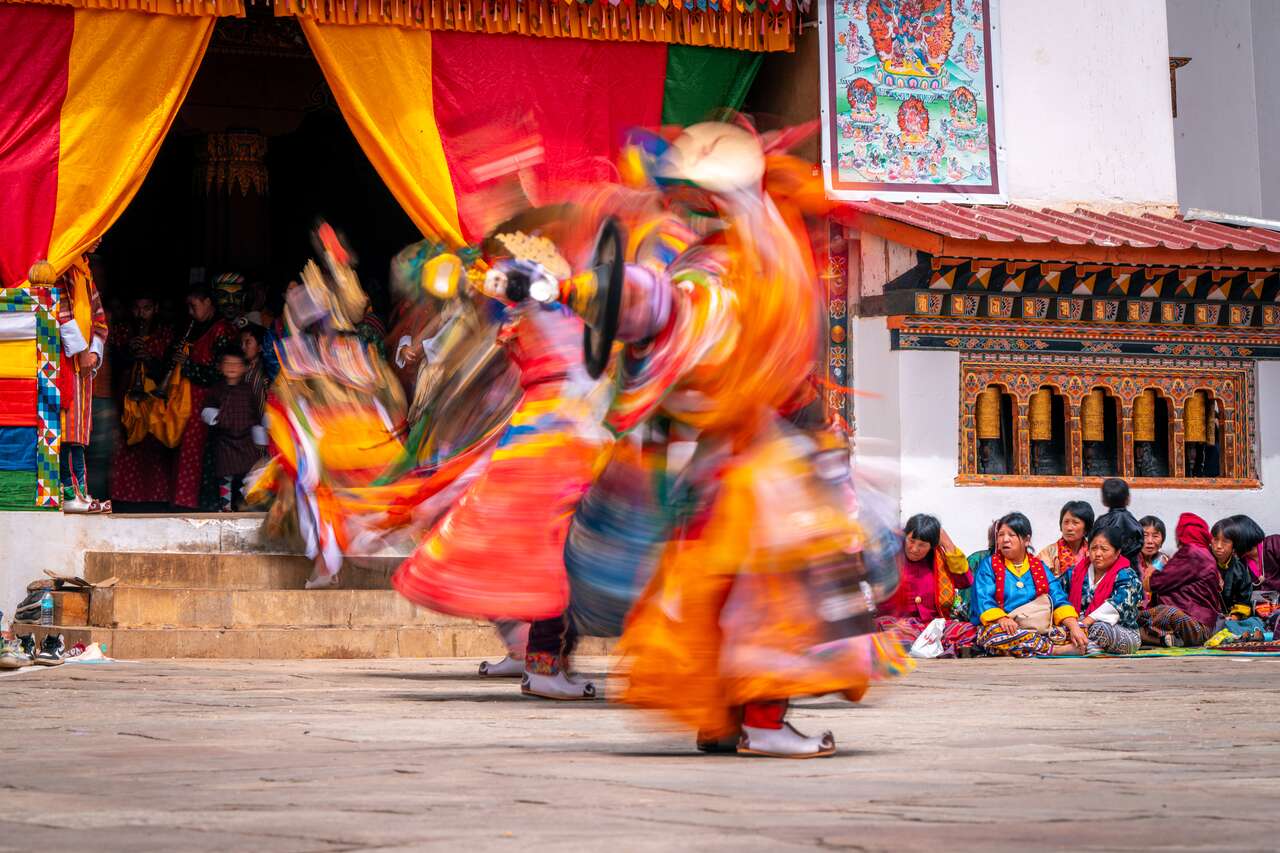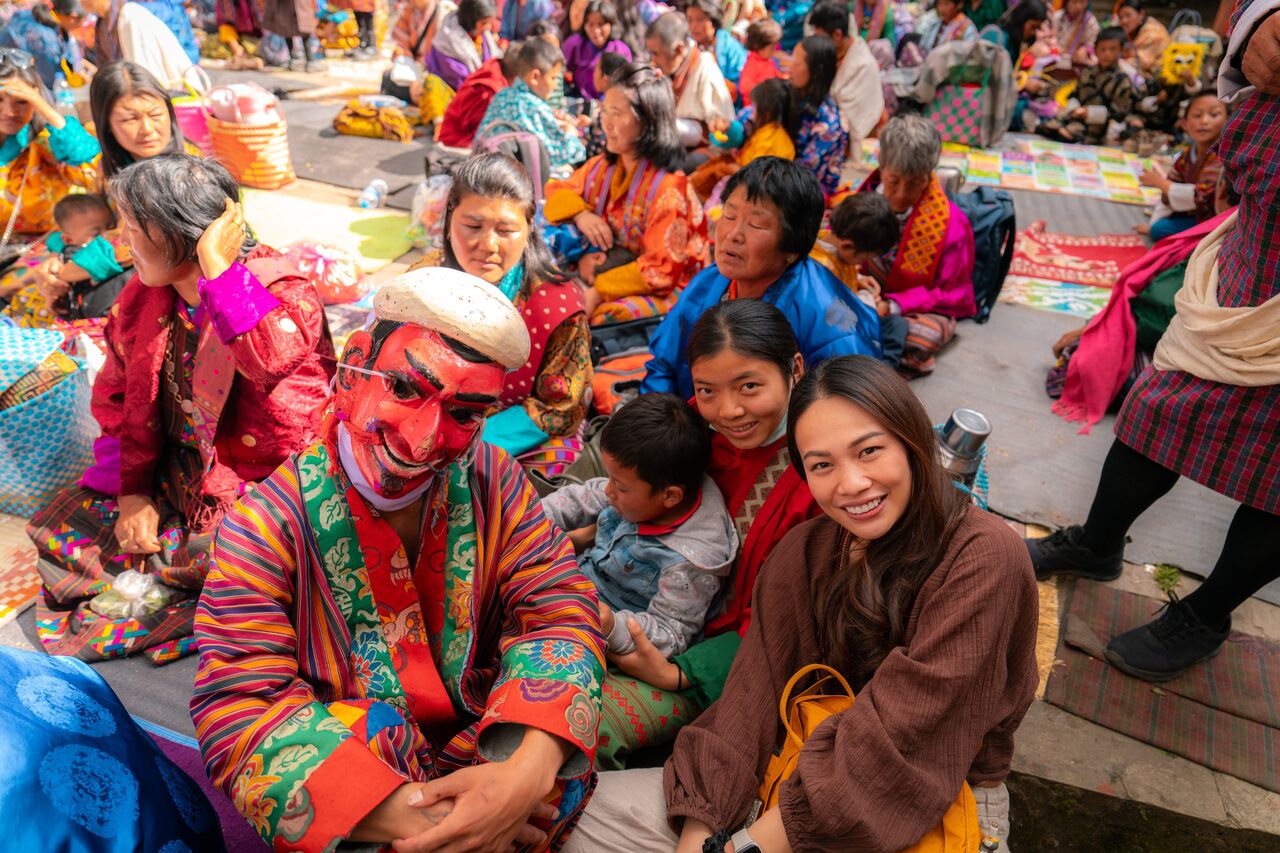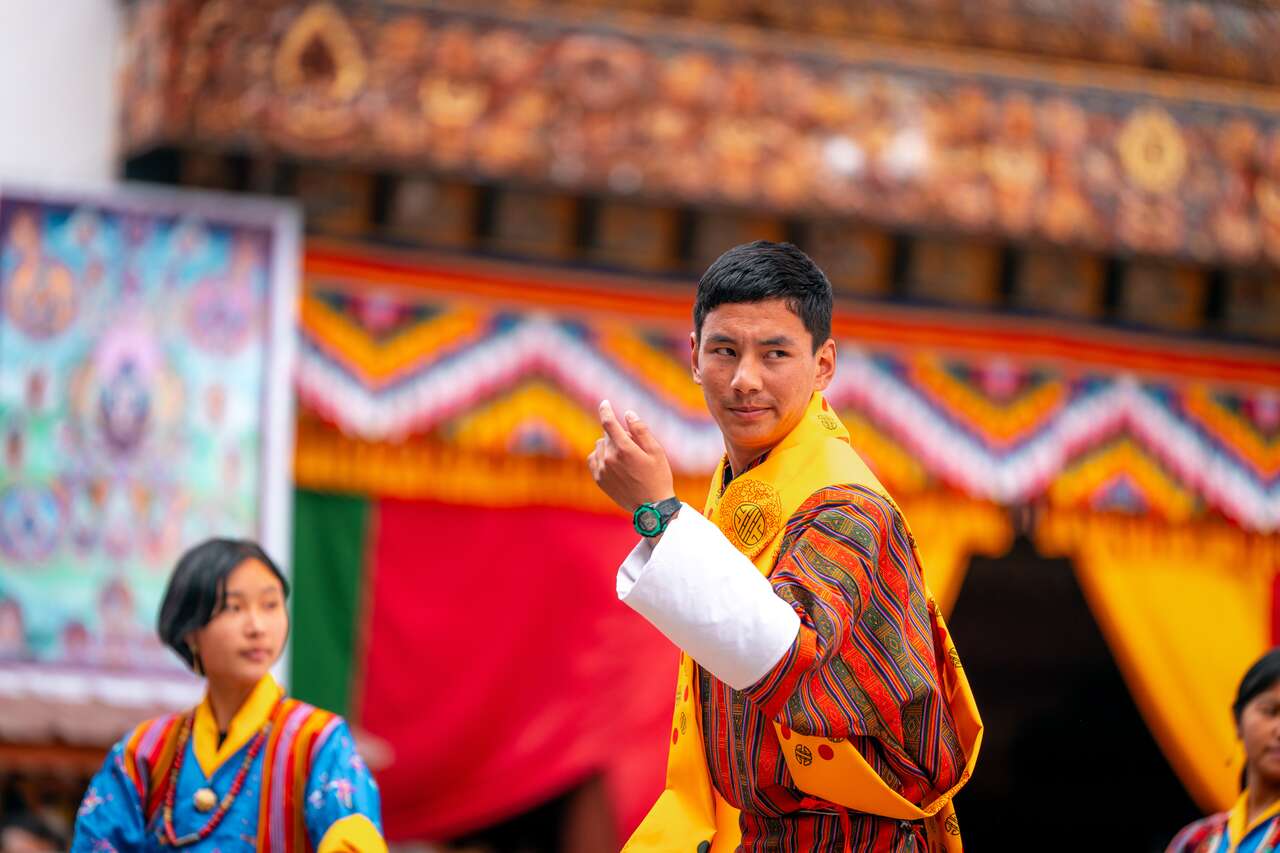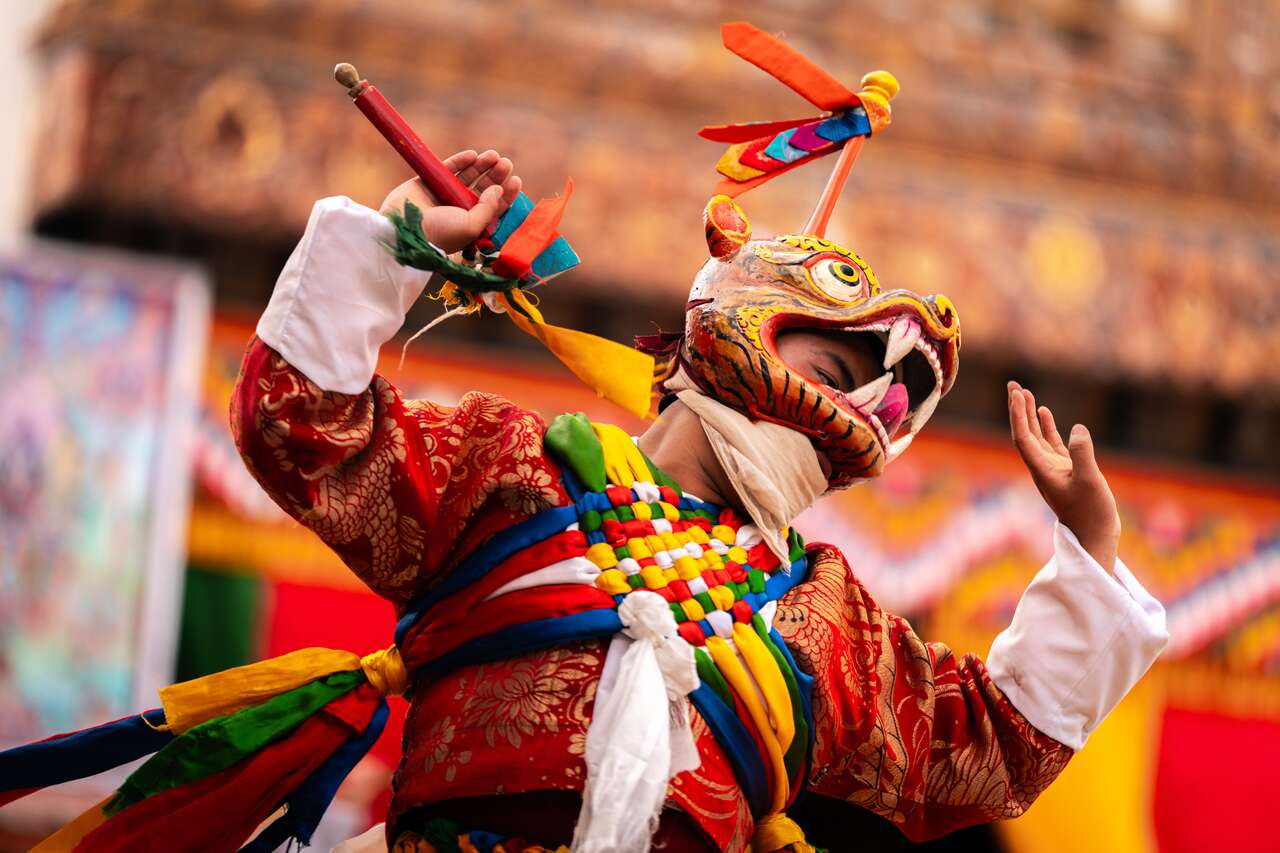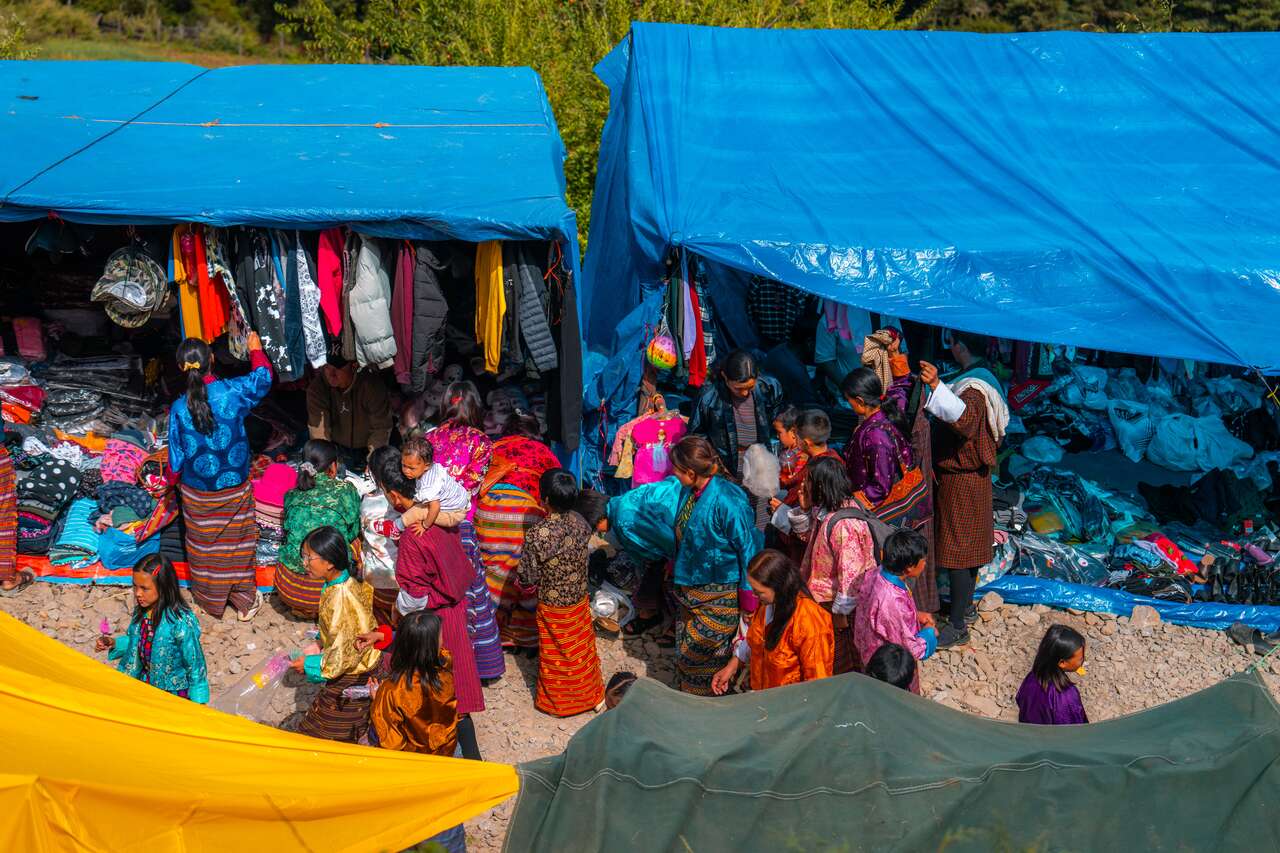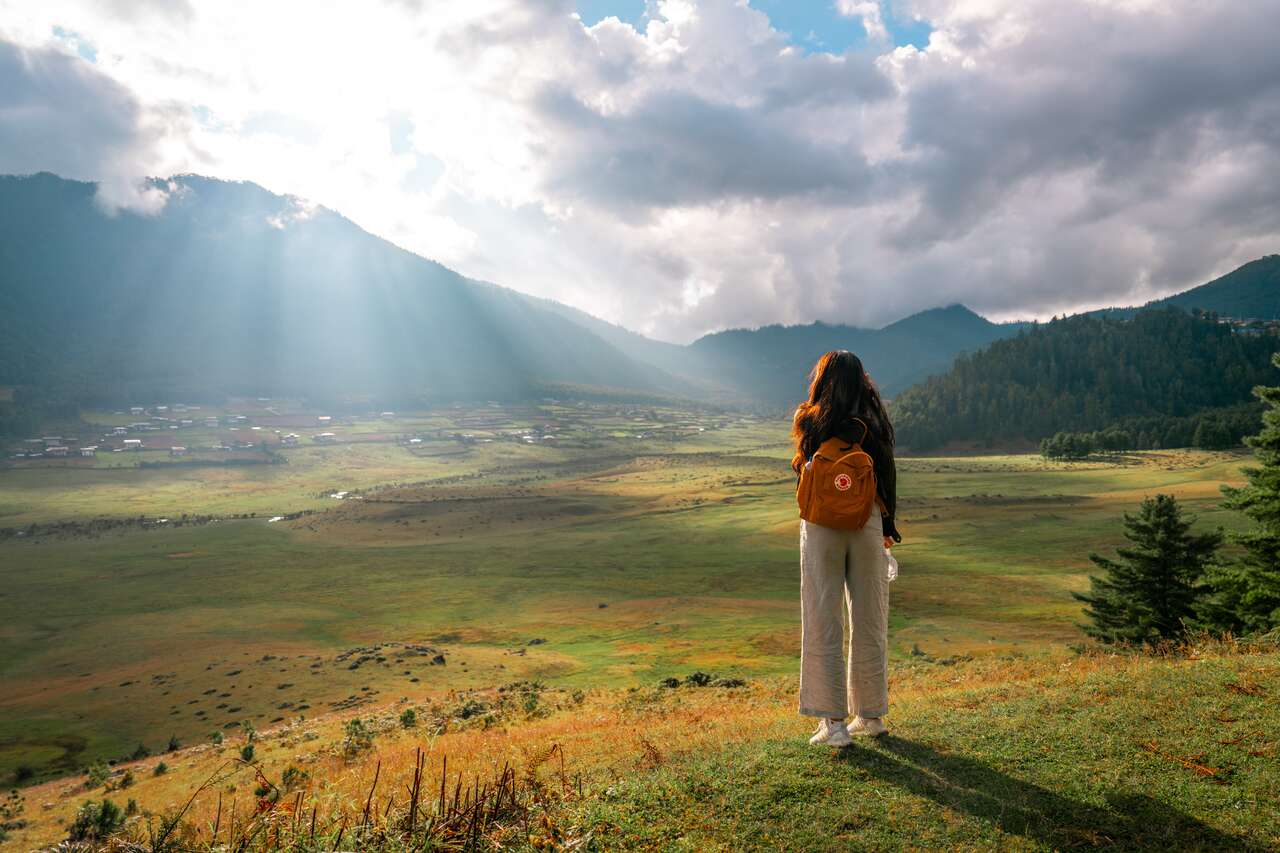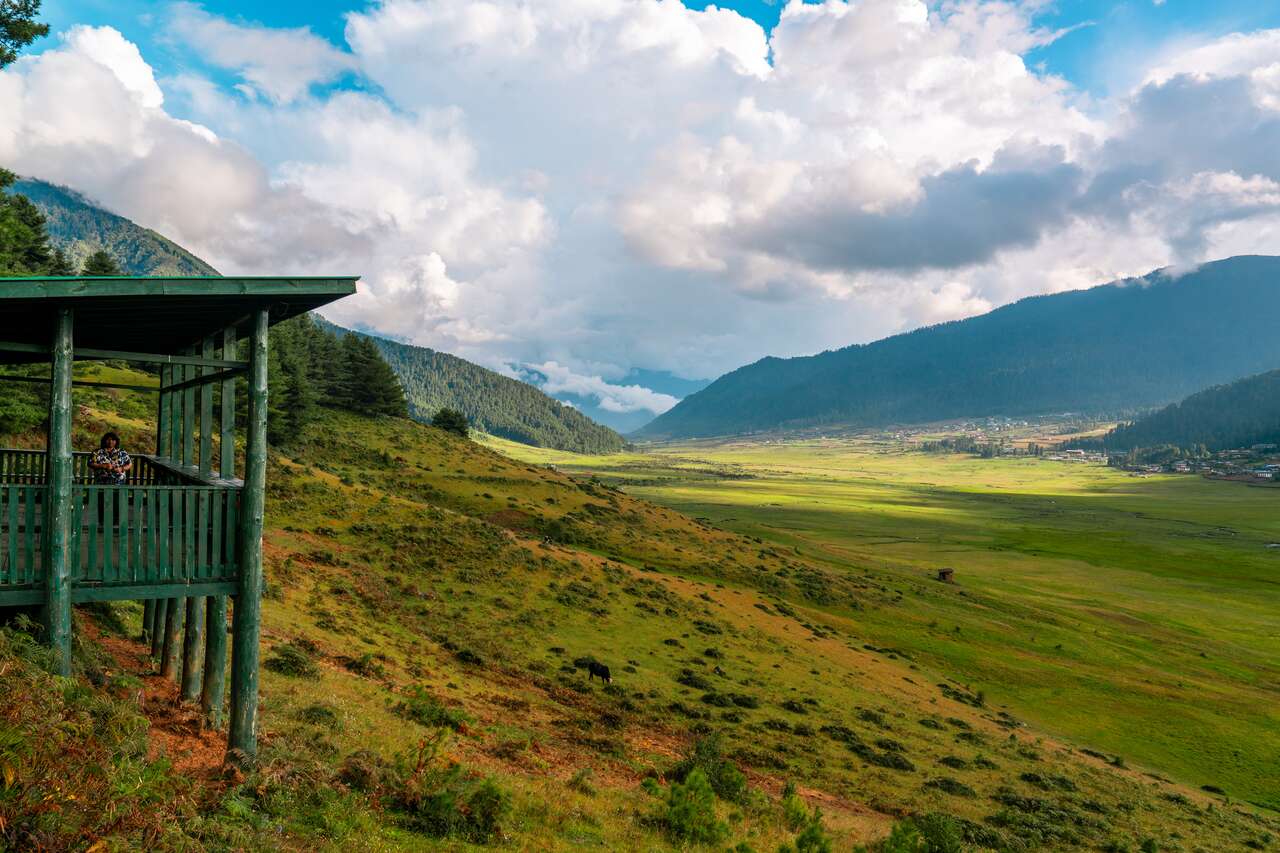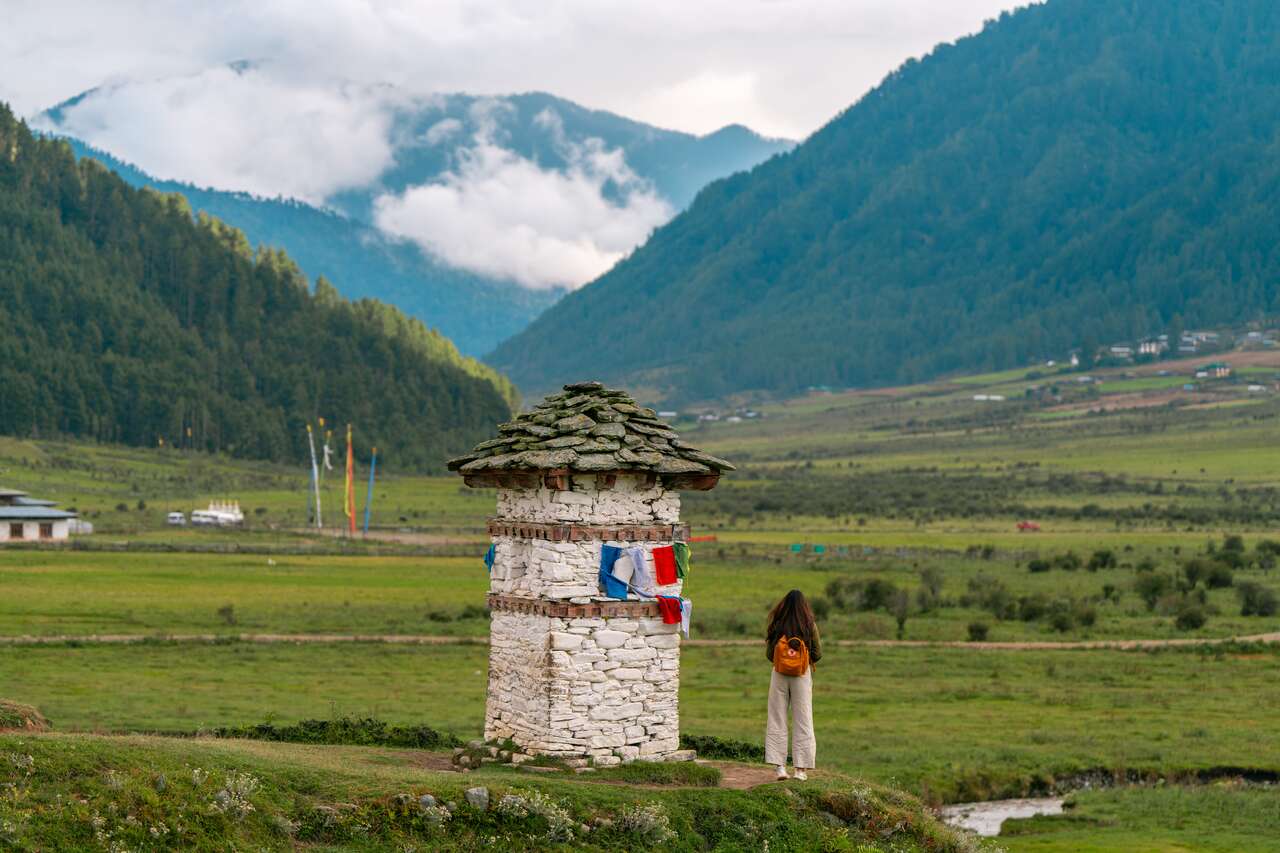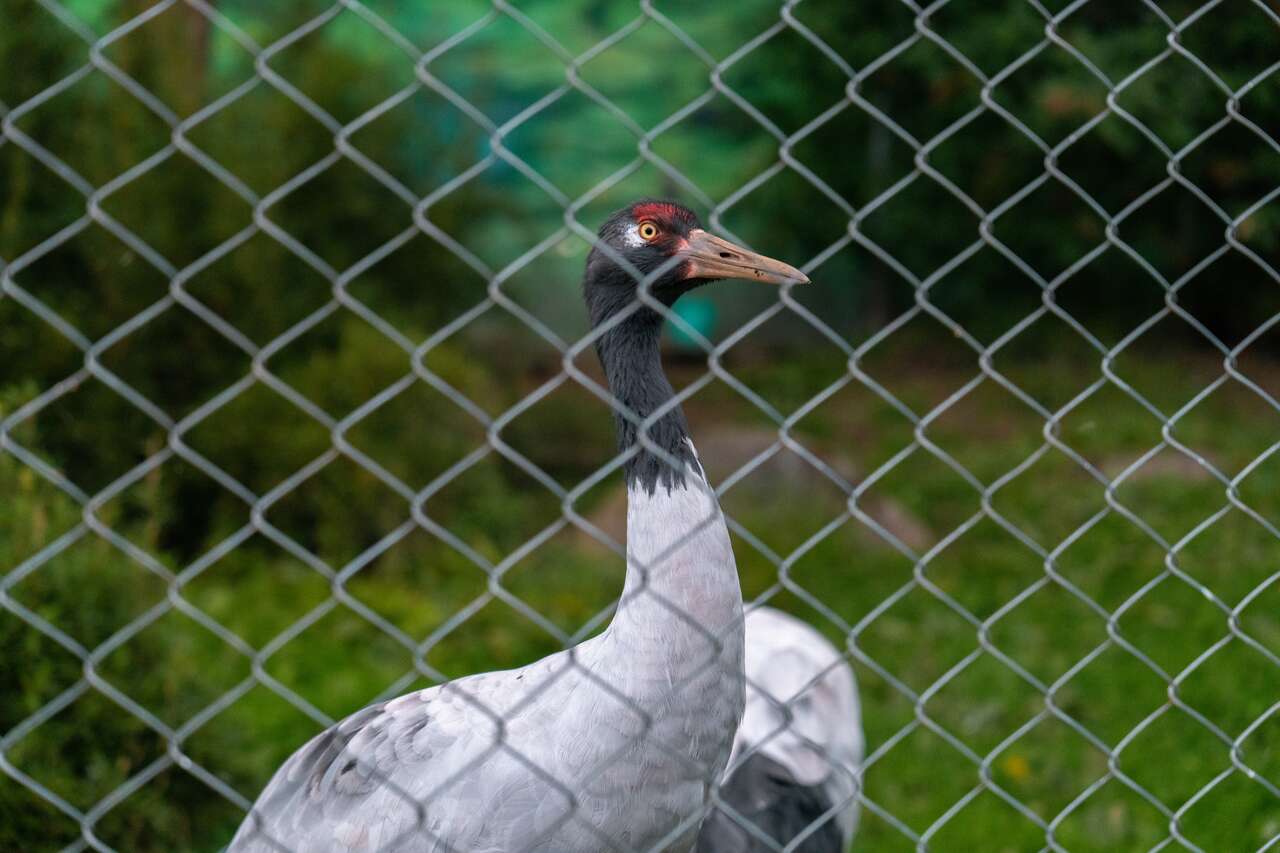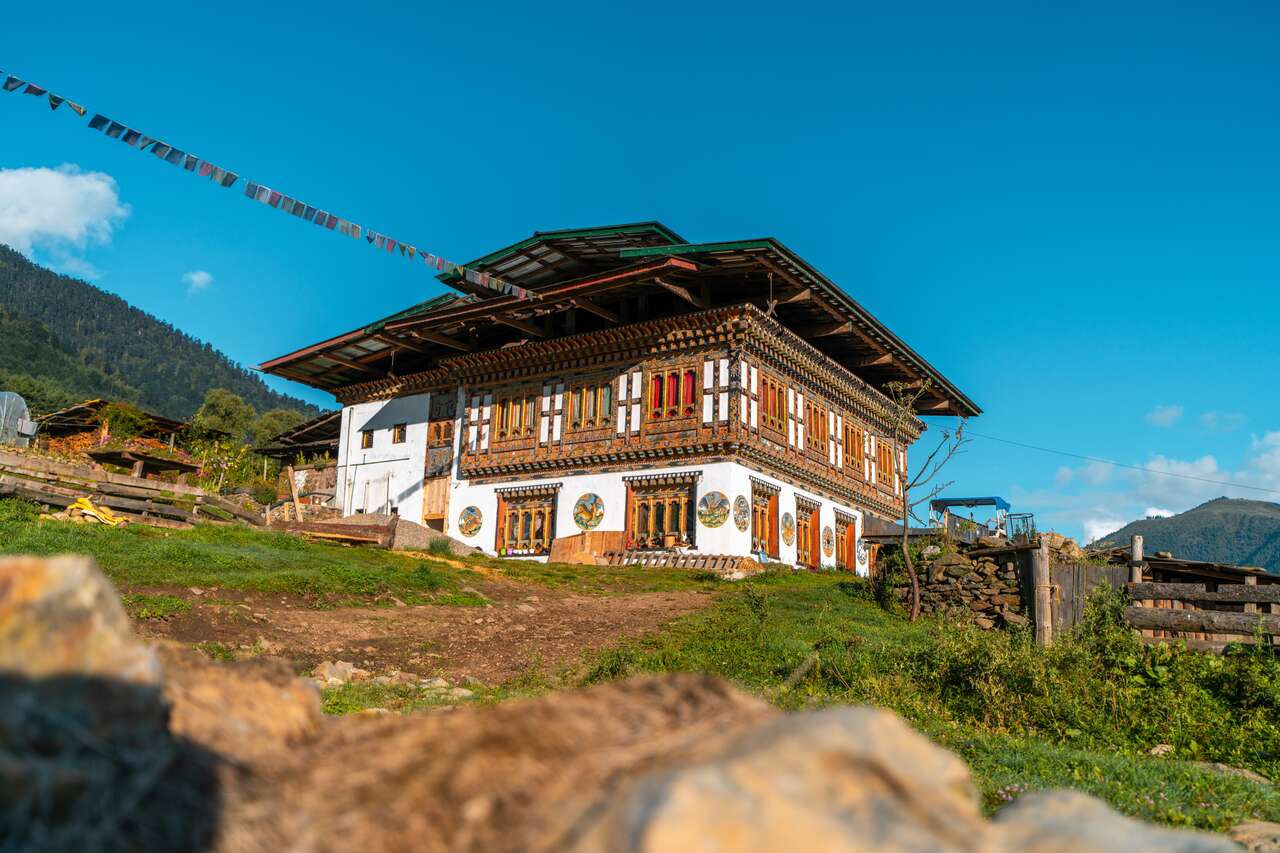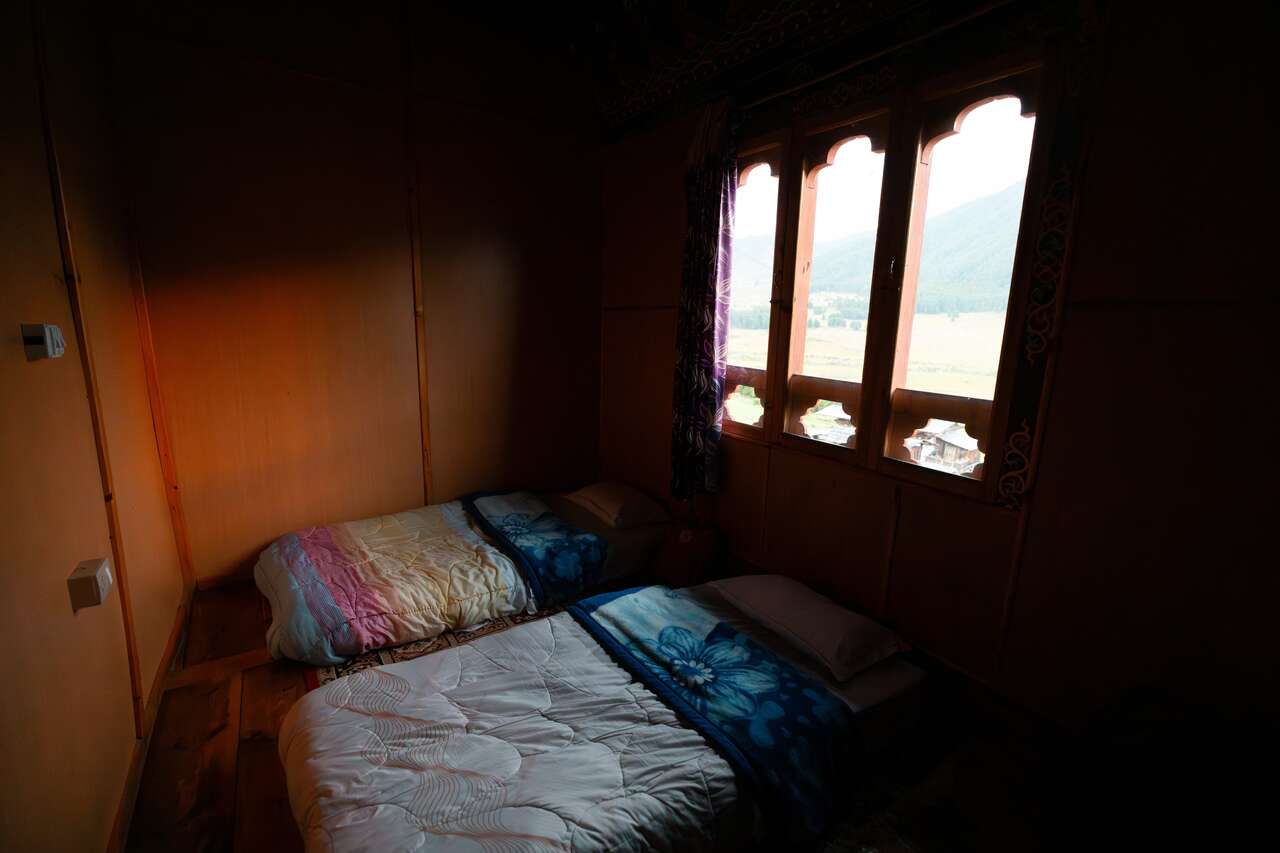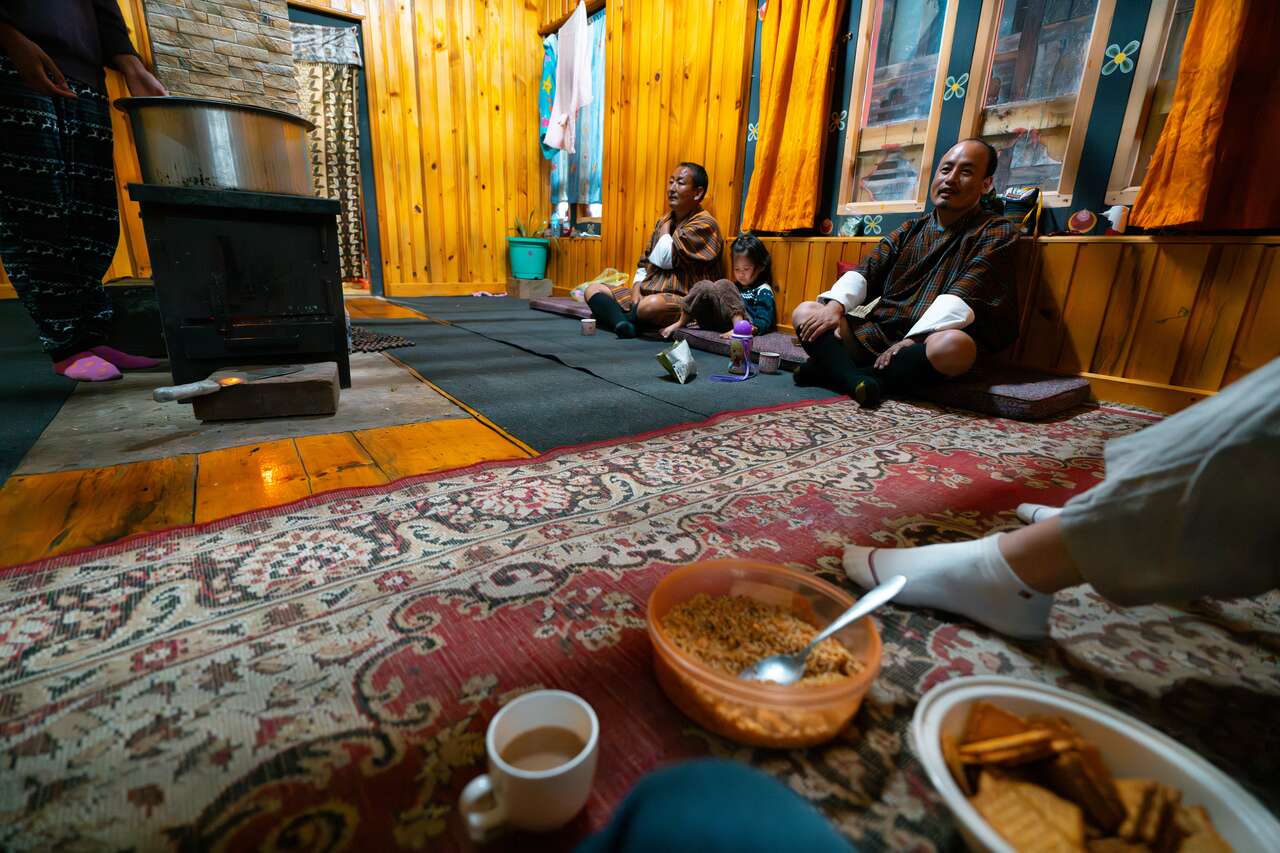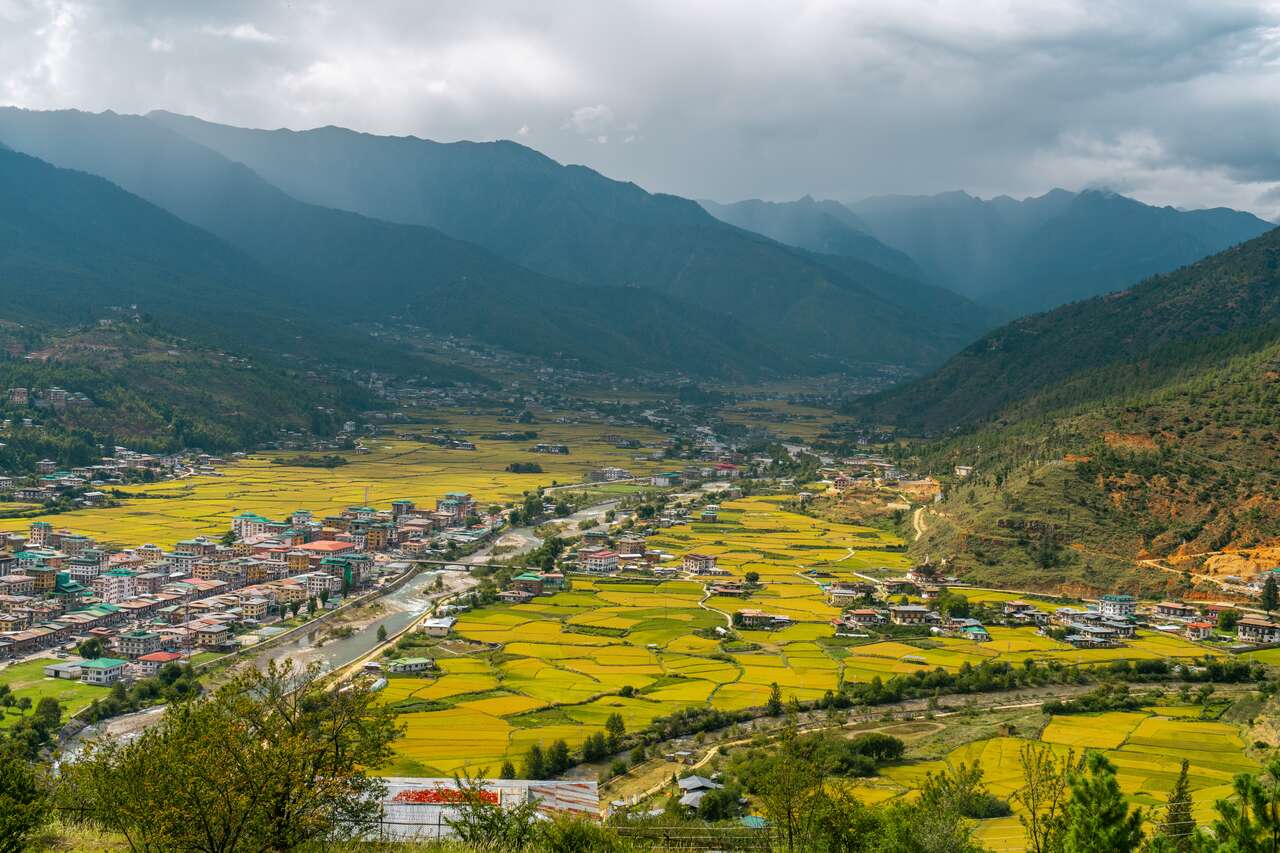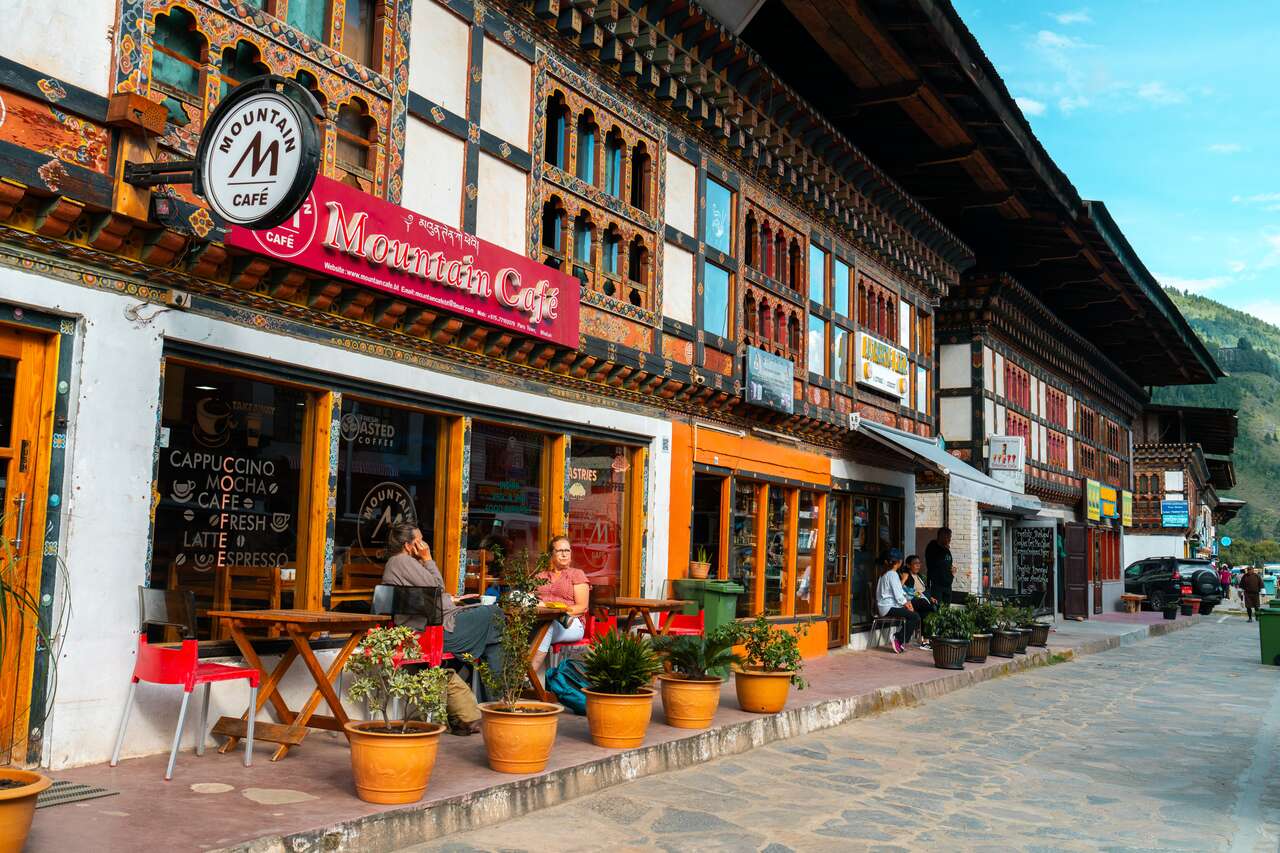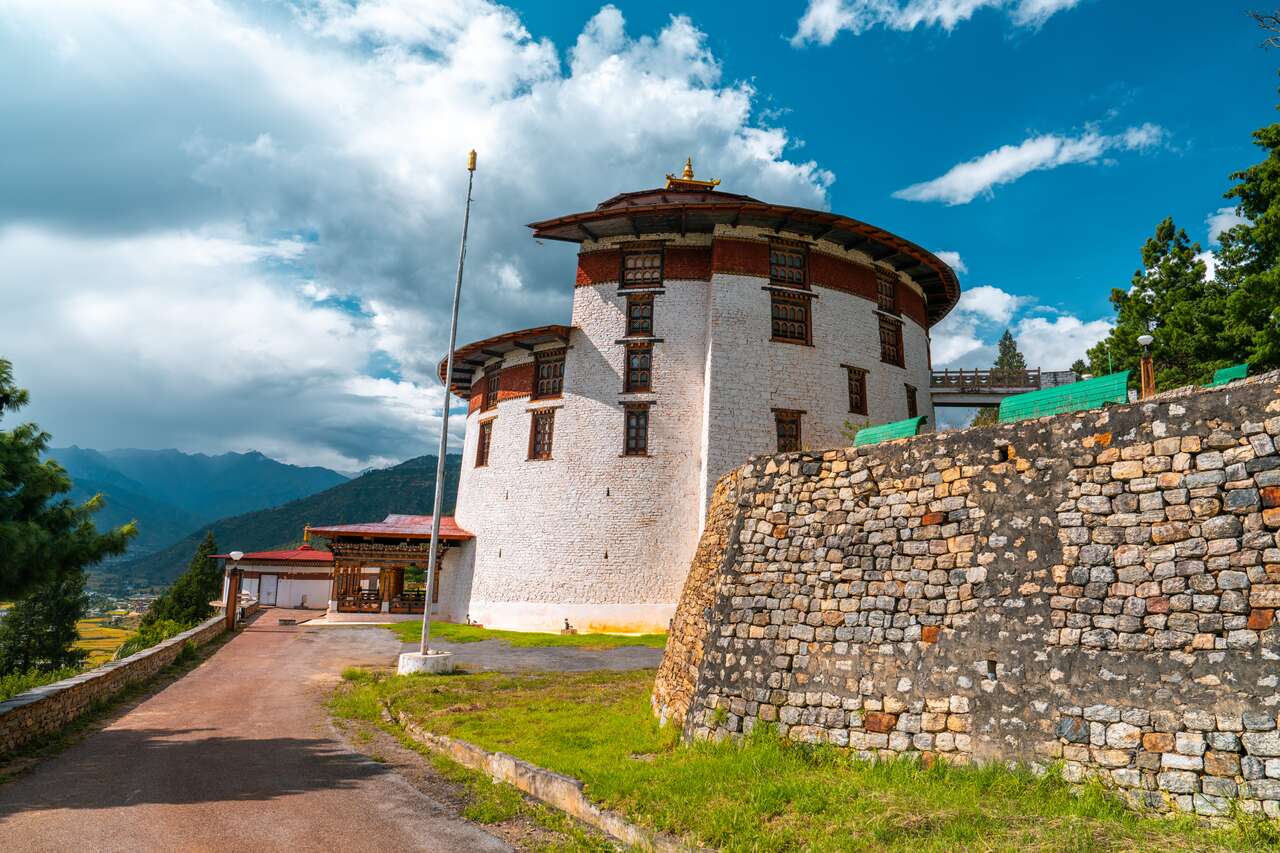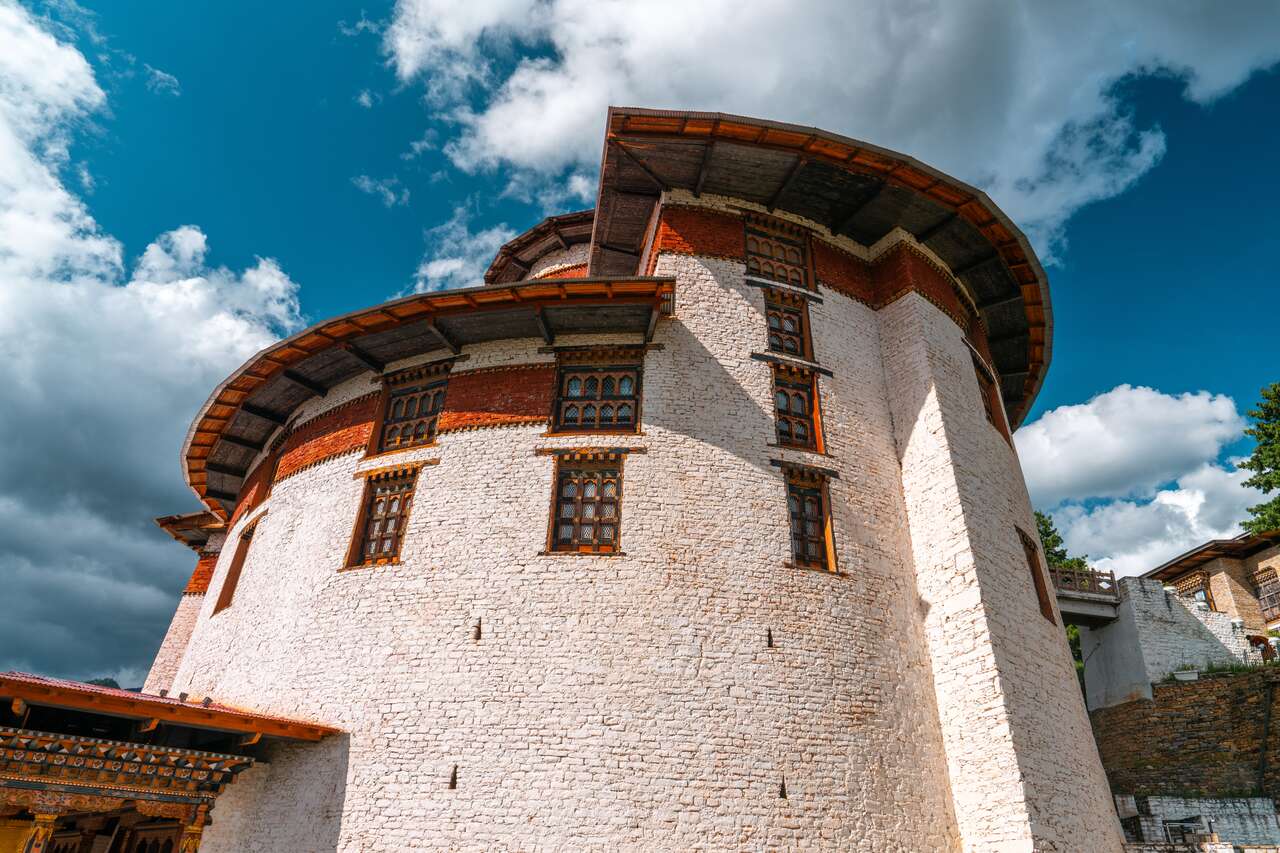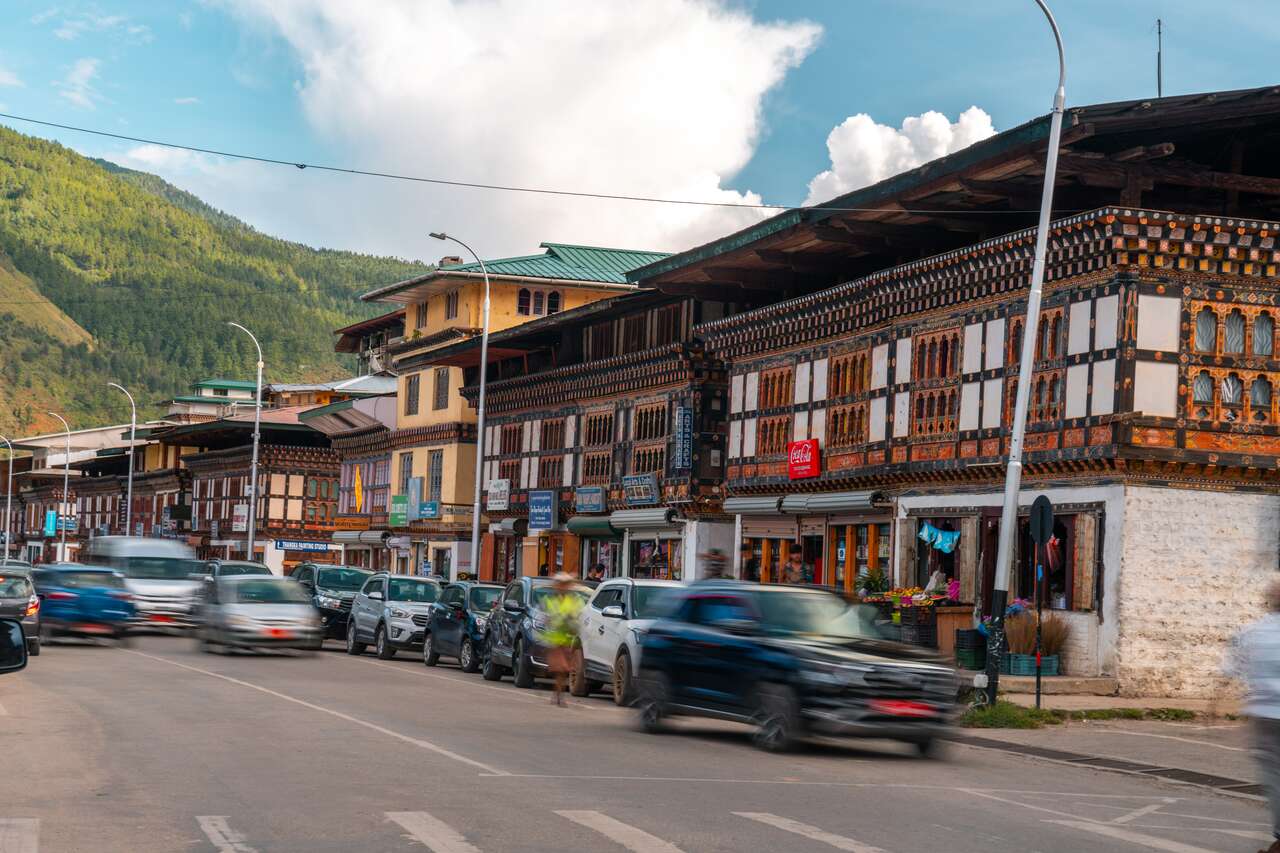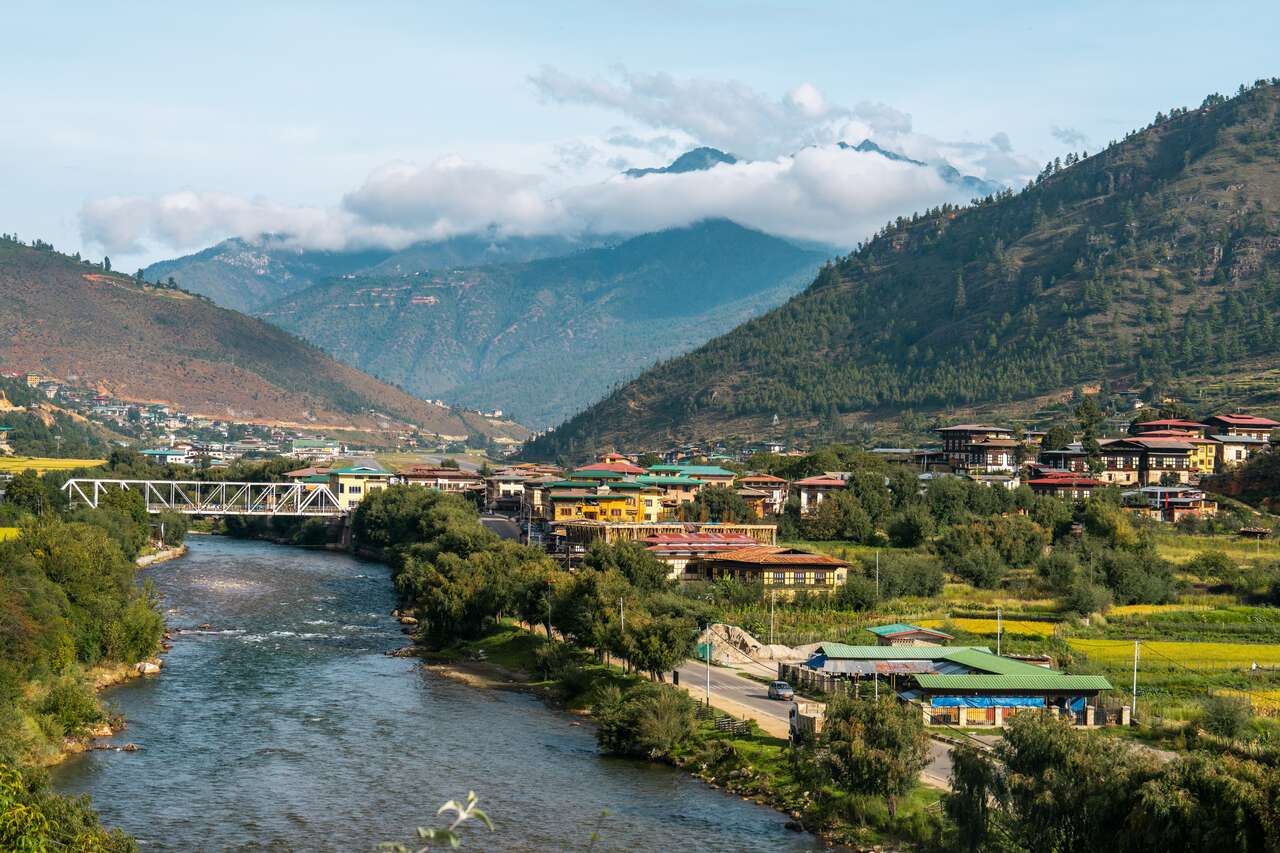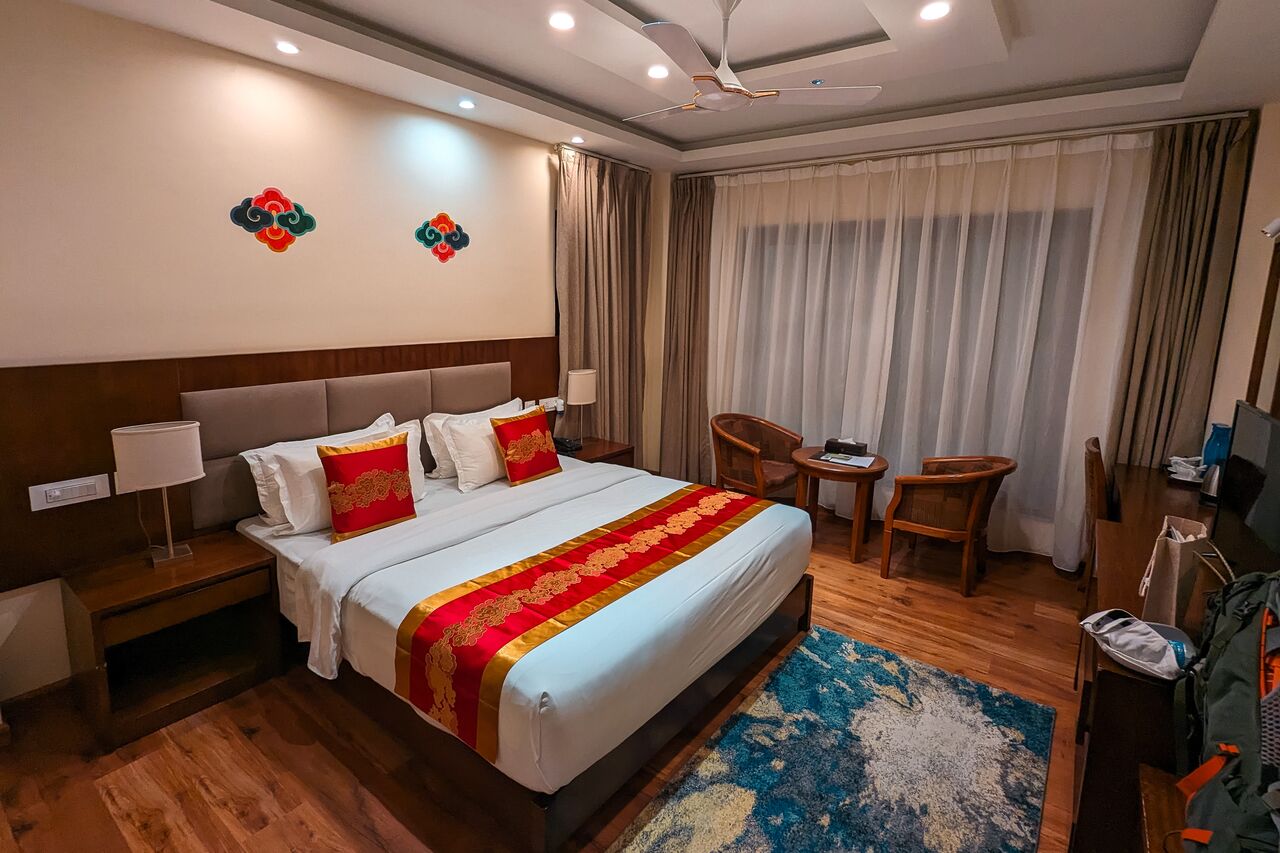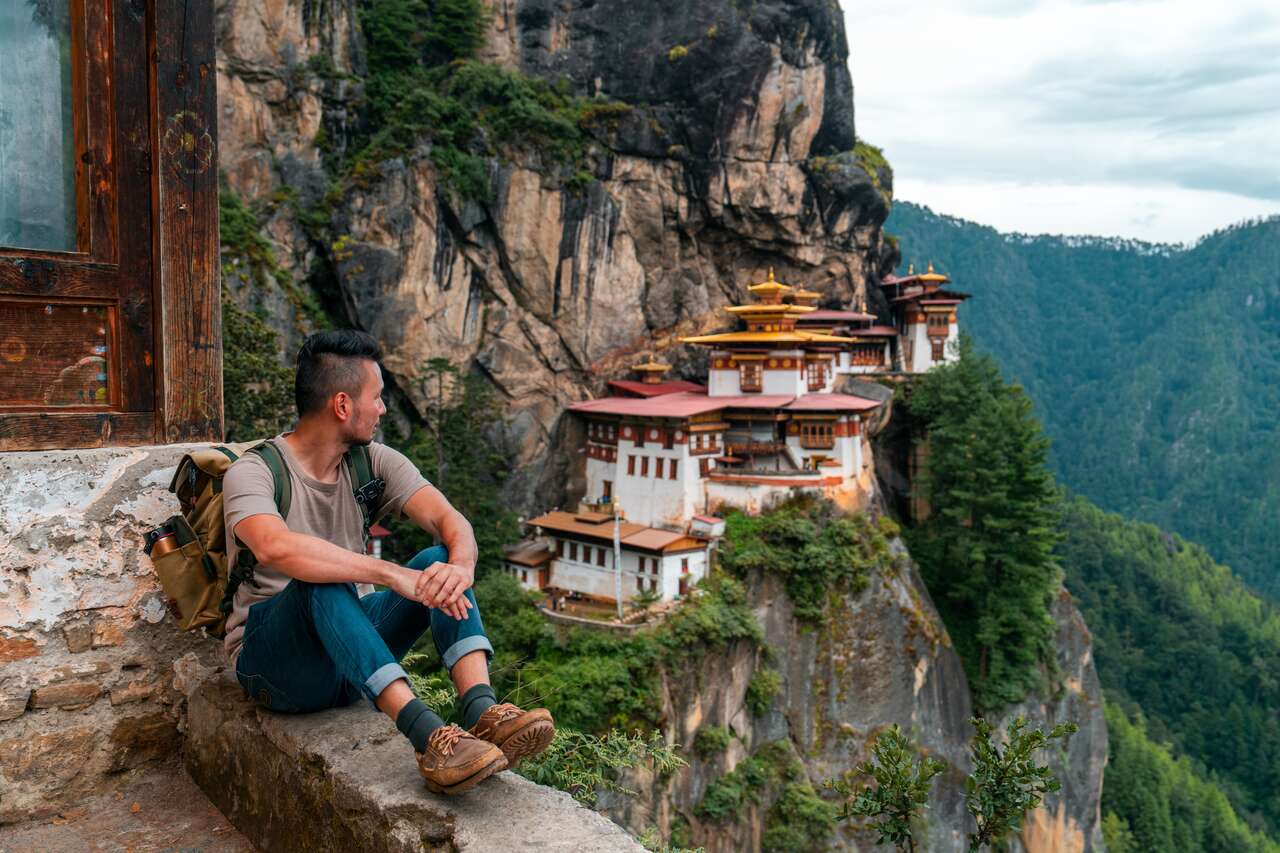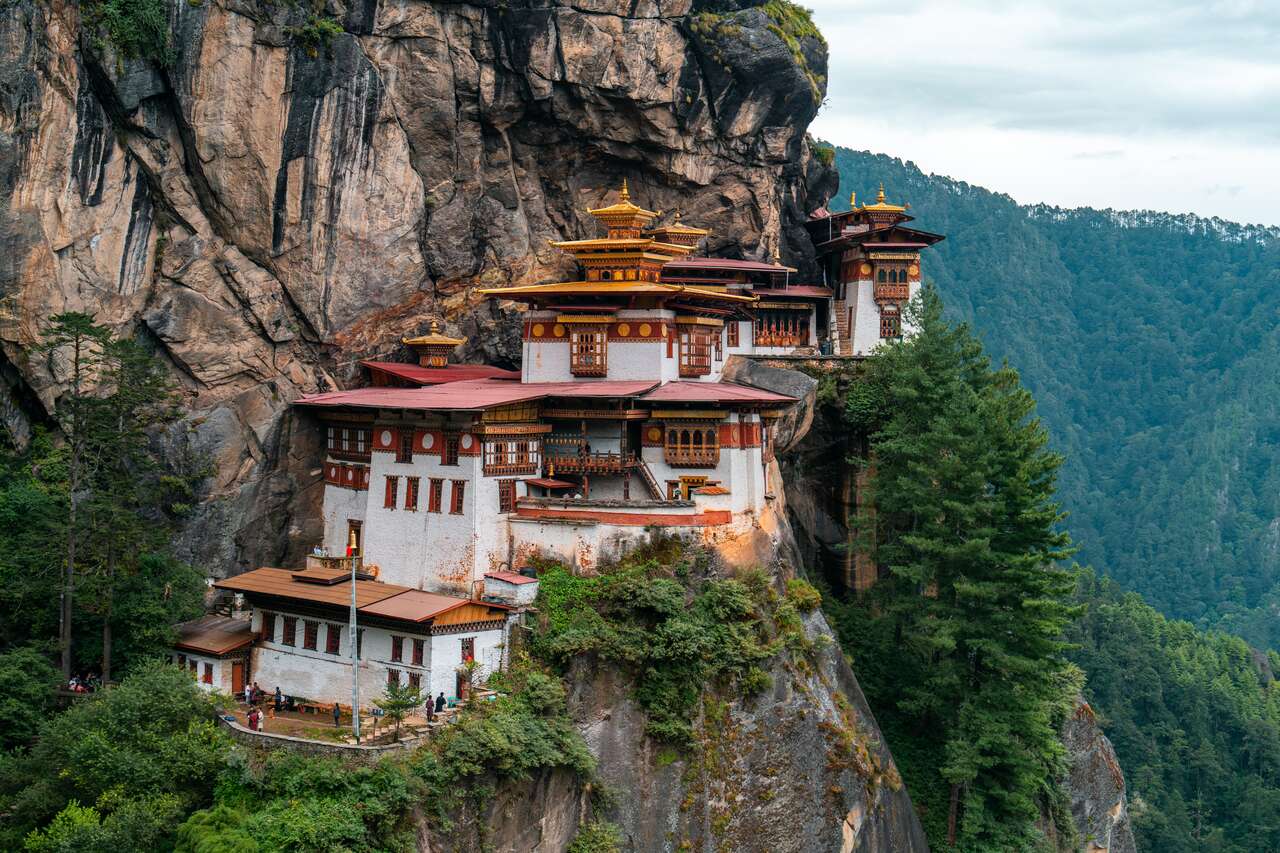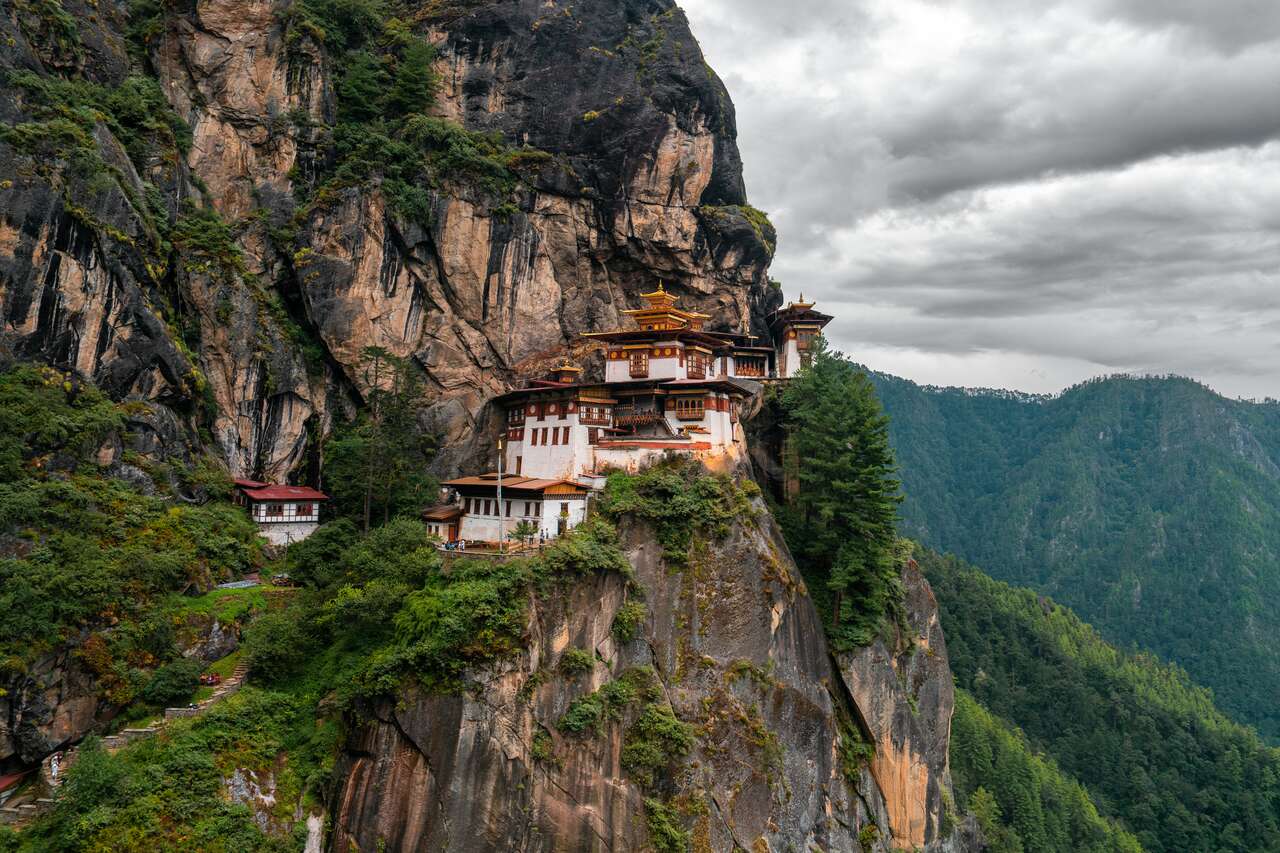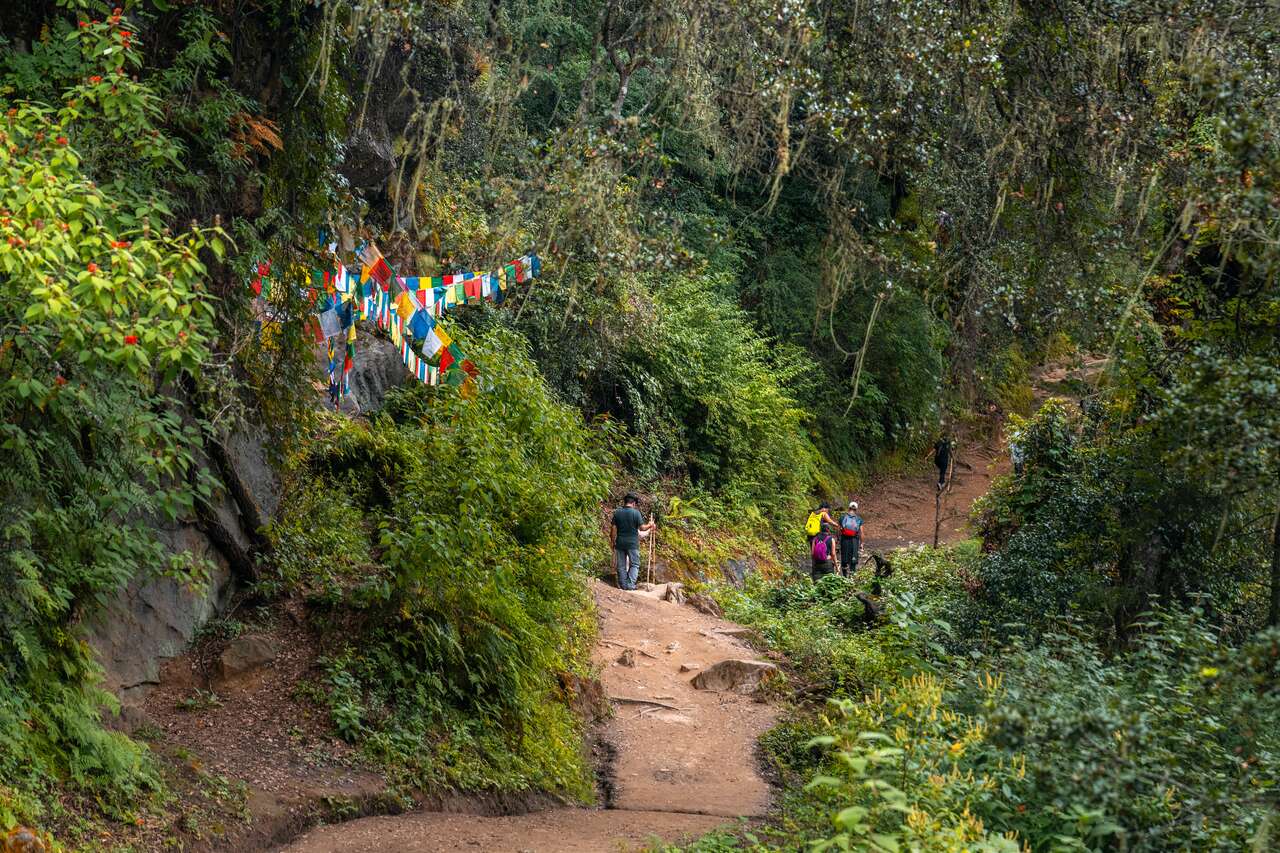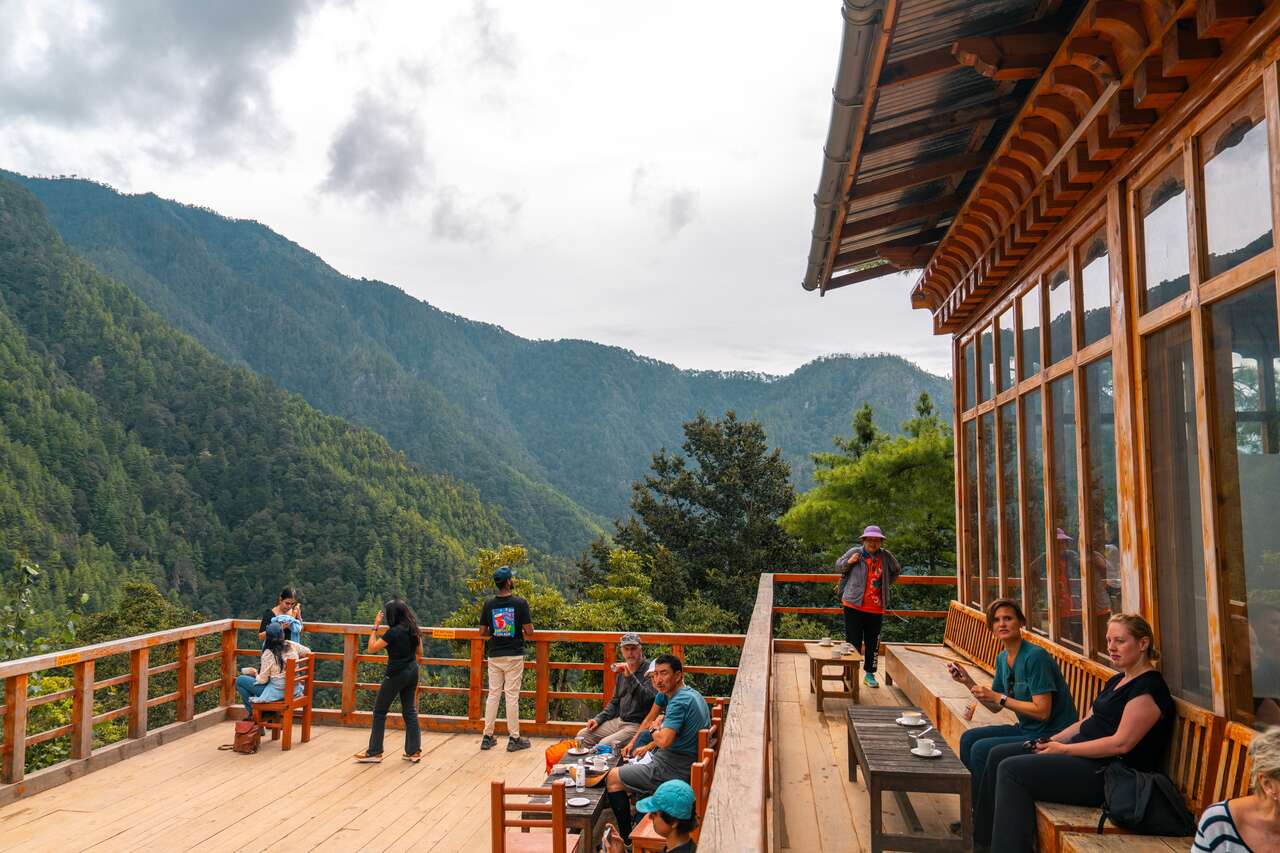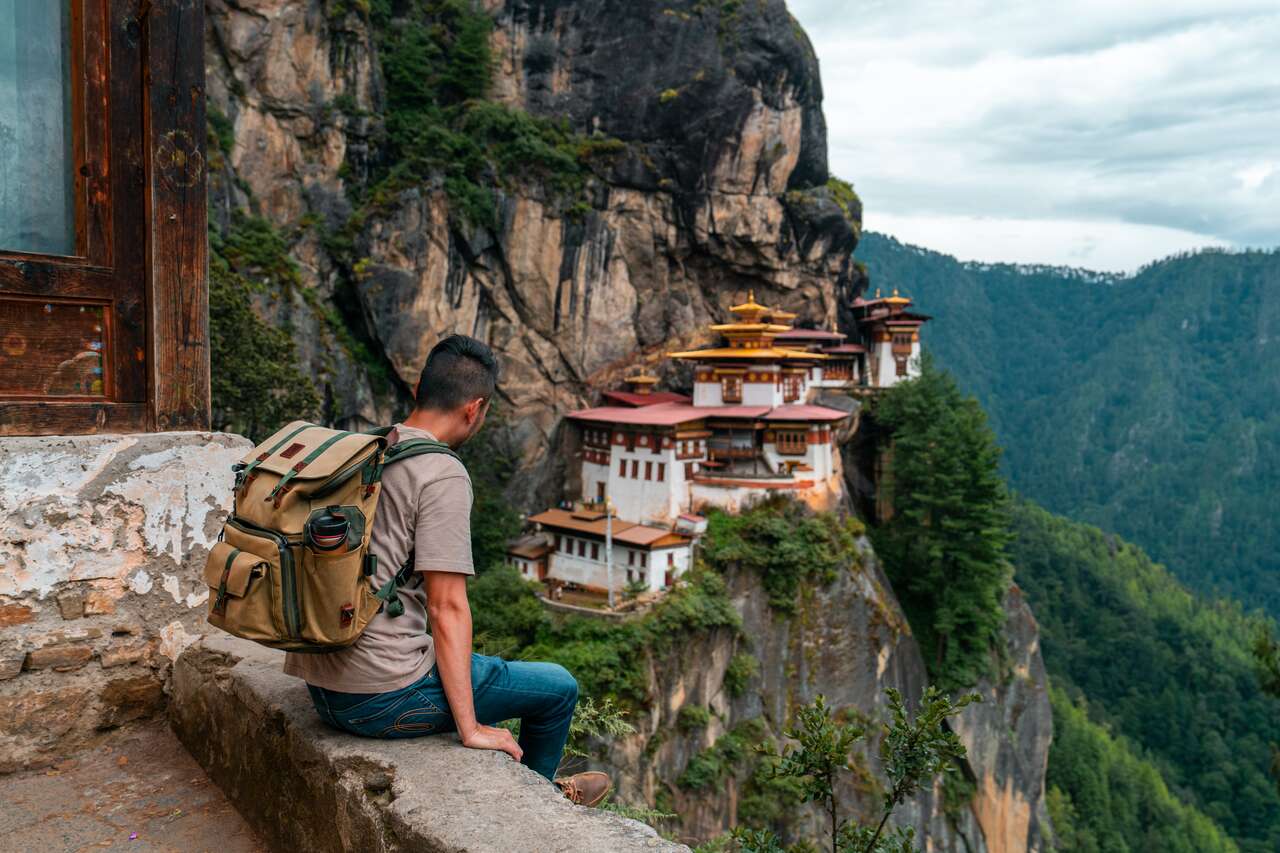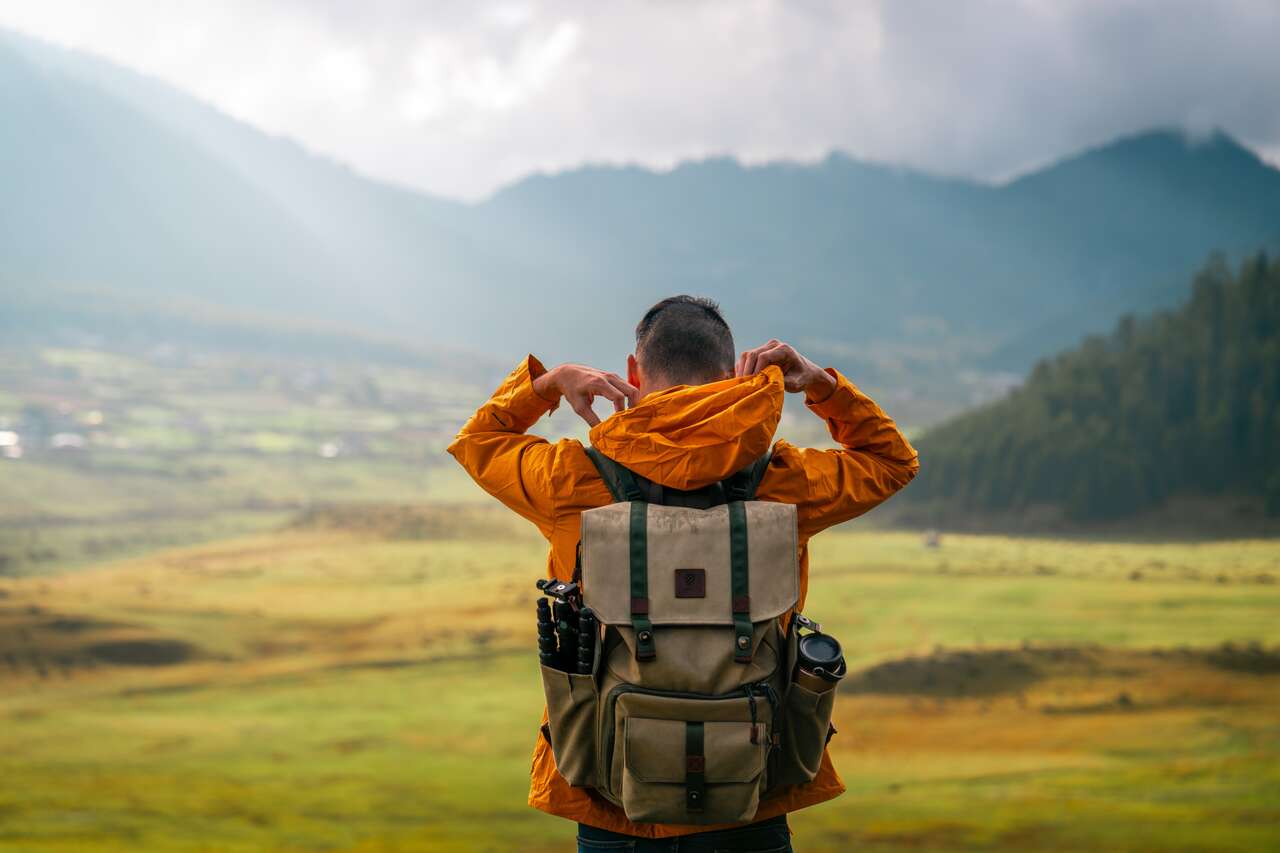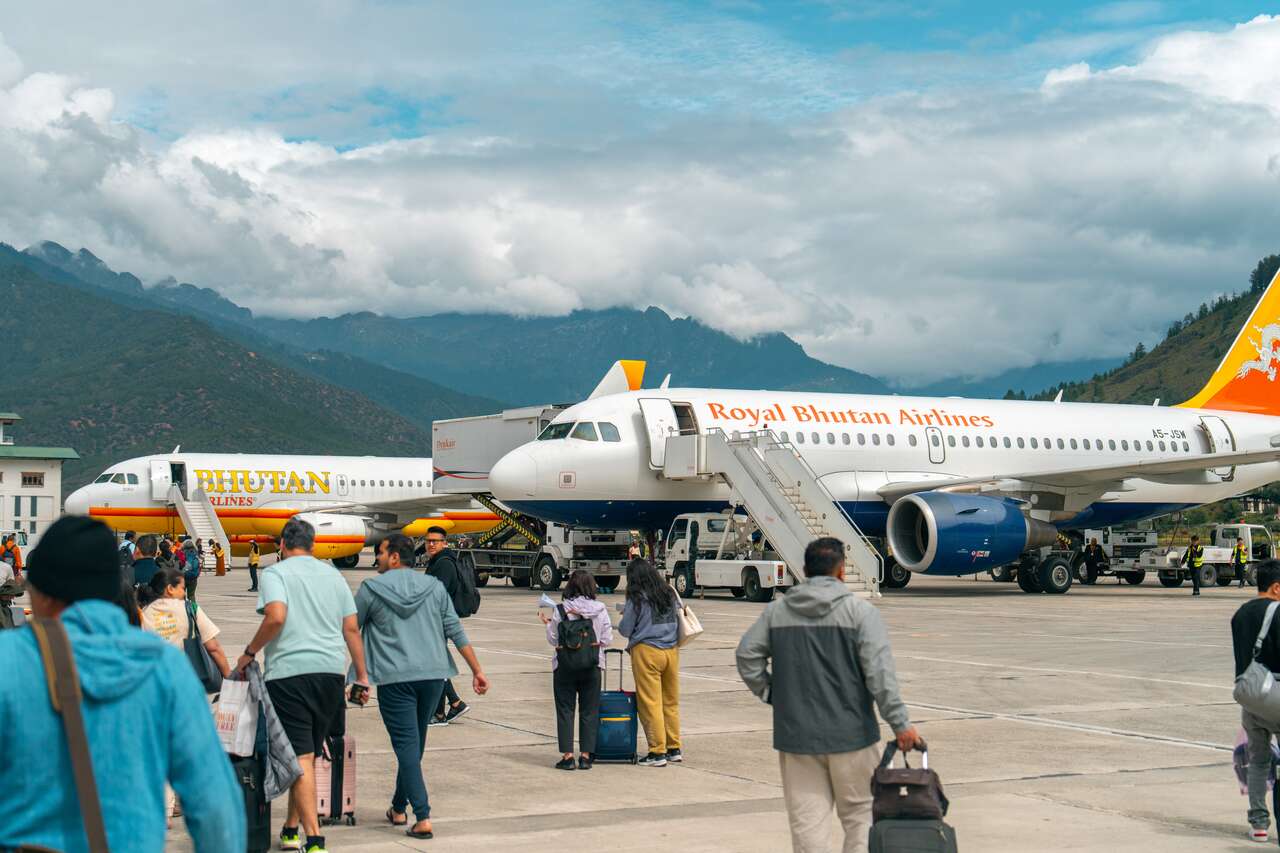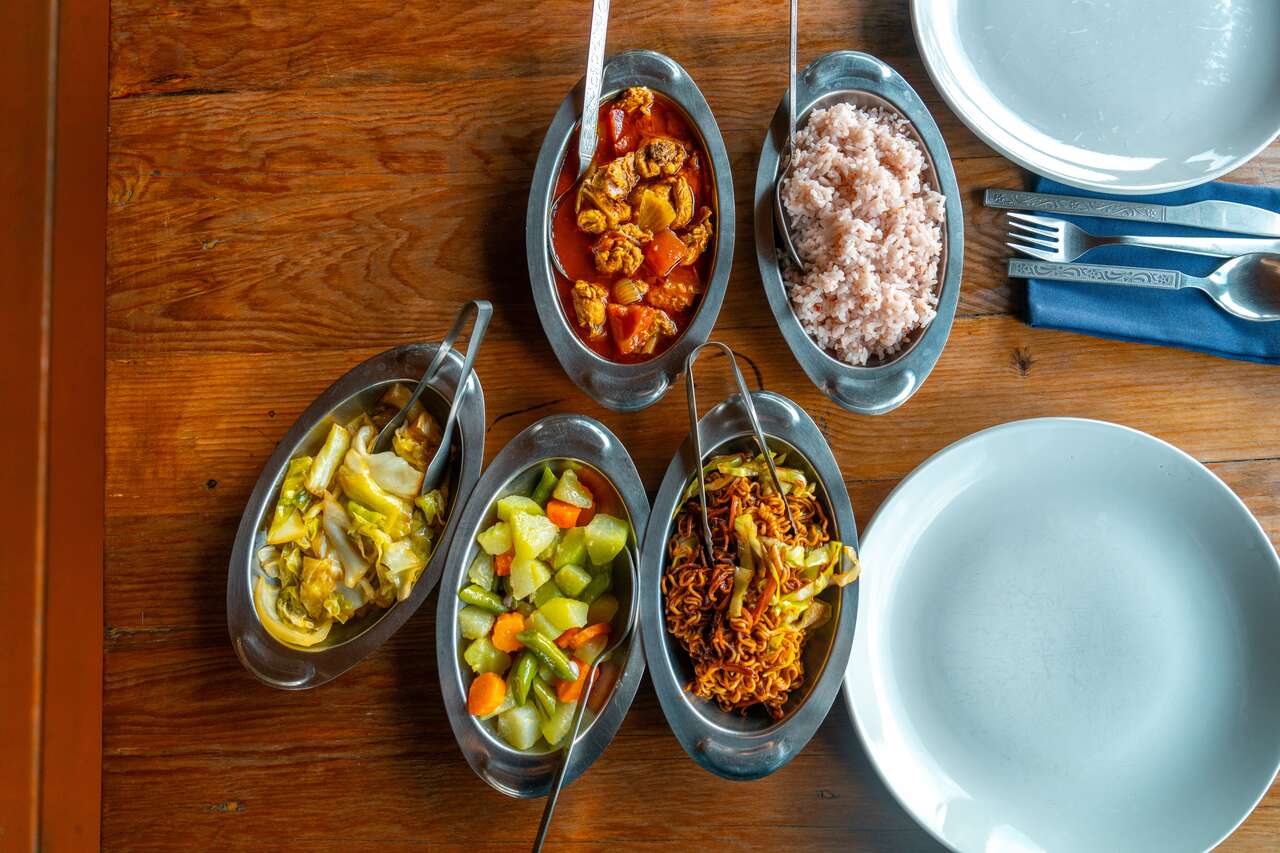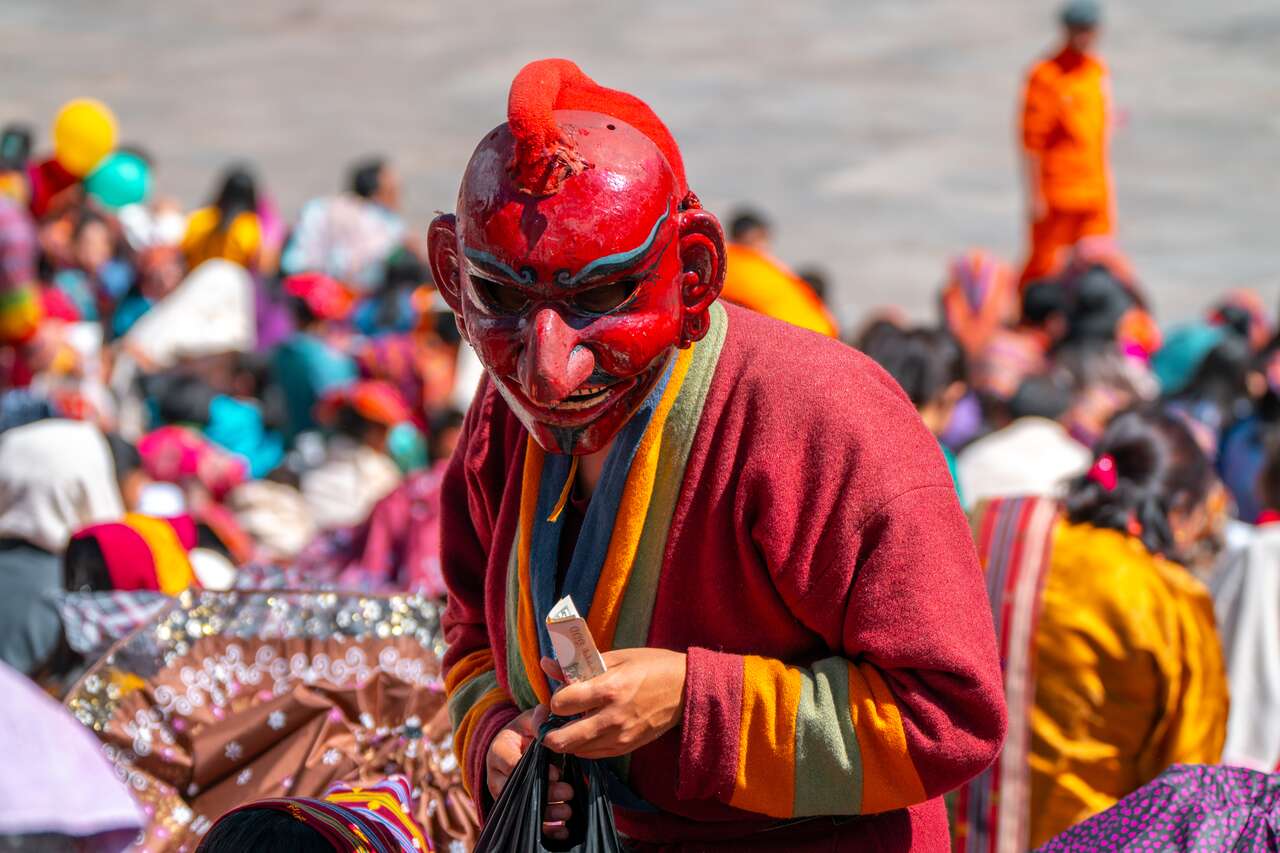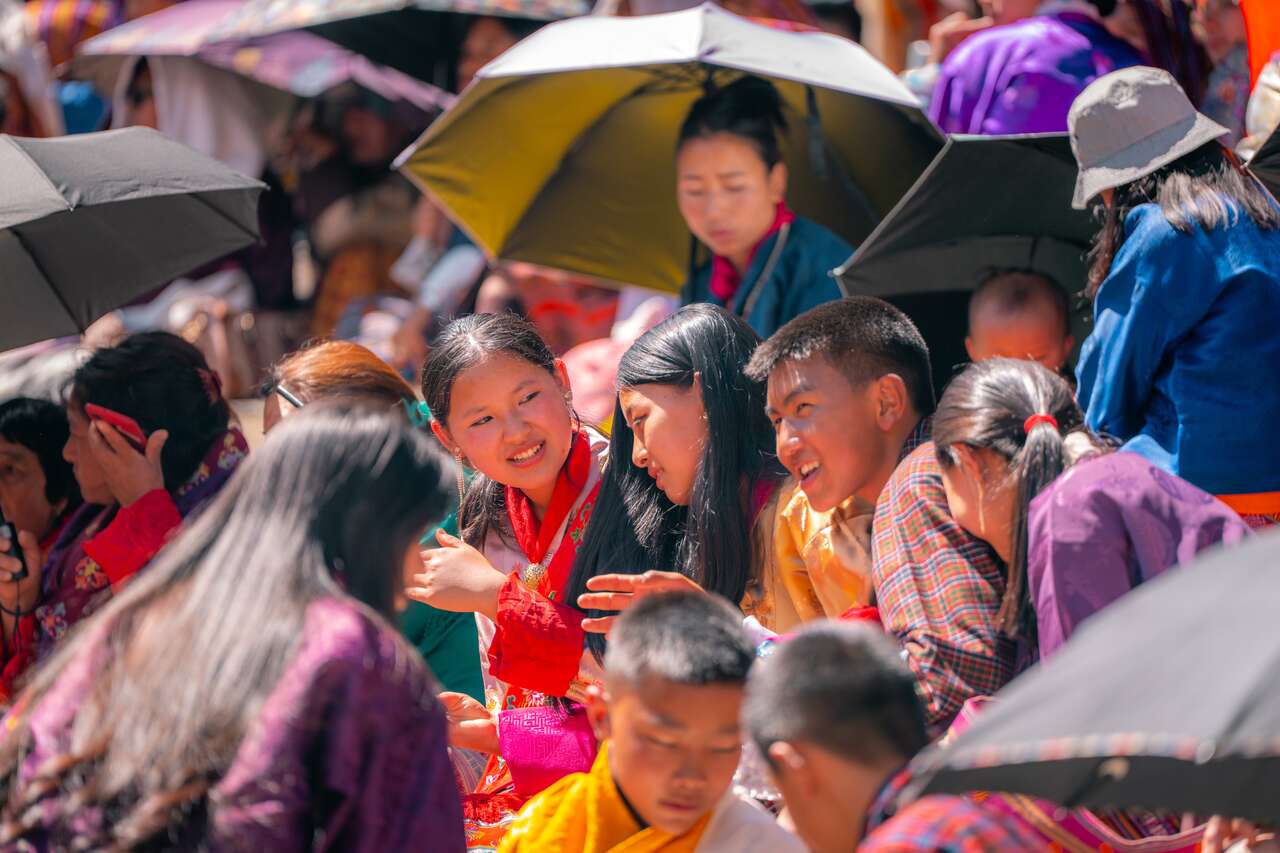It has always been a dream of mine to visit Bhutan and witness its incredible culture and traditions ever since I started this little journey of mine as a traveler, and now that I have the means to do it, I decided to go all in and visited the land of happiness during one of its most exciting times, during the Thimphu and Gangtey Tshechu festival in late September.
There are colors, dances, and performers dressed in full traditional attire, dancing their hearts out while surrounded by the beautiful rolling mountains of the Himalayas. It is more than what I could ever hope for in a trip to this hidden kingdom, and I'm here to help you make your dream trip to Bhutan come true.
Without further ado, here is the ultimate 7-day Bhutan Festival itinerary with all the information you need, from which itinerary to take, which tour operators to pick, and more. Let's begin by taking a look at the best 7-day Bhutan festival itinerary map below:
- Bhutan Itinerary Map
- 7 Days Bhutan Festival Itinerary
- Bhutan Travel Video
- When to Visit Bhutan?
- How to Get to Bhutan?
- How to Get Around Bhutan?
- How Much Money Do I Need for 7 days in Bhutan during the festival?
- Which Bhutan Tours to Pick?
- How to pay for Tours in Bhutan?
- Is it Safe in Bhutan?
- Internet in Bhutan?
- What to Pack for Bhutan?
- Further Reading for South Asia
Bhutan Itinerary Map
| ☀️ Day 1: | Thimphu |
| ☀️ Day 2: | Thimphu Festival |
| ☀️ Day 3: | Punakha and Wangdue |
| ☀️ Day 4: | Gangtey Festival and Phobjikha Valley |
| ☀️ Day 5: | Paro |
| ☀️ Day 6: | Tiger's Nest |
| ☀️ Day 7: | Flying Back Home |
7 Days Bhutan Festival Itinerary
Day 1: Thimphu (2 nights)
Our journey in Bhutan began as we arrived at one of the most dangerous airports in the world, Paro International Airport, the only international airport in Bhutan and one that will both excite and scare, all at the same time as you zip through the valley, surrounded by the Himalayan mountains and land on the single runway strip.
You will be warmly welcomed in Bhutan, first by the sight of the airport's stunning architecture and then by your tour guide as you go through the immigration and exit the terminal. If you wish to exchange your money, be sure to do so at the currency exchange before you exit the terminal. There is only one in the airport so you can not miss it.
- Explore the Hidden Kingdom of Bhutan (6 days)
- Bhutan: Druk Path Trek (12 days)
- Glimpse of Bhutan (5 days)
Once you are done, your guide will take you from Paro to Thimphu giving you a glimpse of the zig-zag mountain roads that you will be traveling on throughout your trip in Bhutan. The journey takes approximately one hour, and they should take you to your hotel to check in before exploring Bhutan's capital city.
No time to read?
Don't worry. You can save this page to Pinterest and come back later.
After settling in, you will then be taken to National Memorial Chhorten, one of the most iconic Buddhist temples featuring a glided spire, vase-shaped exterior, and some of the most impressive statues and sculptures inside that will give you a glimpse of Bhutan's unique take on Vajrayana Buddhism.
The Chorten was built in 1974 to honor the third Druk Gyalpo (Dragon King) of Bhutan, King Jigme Dorji Wangchuck, who is widely regarded as the "Father of Modern Bhutan" for his efforts to modernize the country and promote democracy.
Something you will learn right away about Bhutan is that they are extremely strict when it comes to temples, with a strict dress code, so be sure you wear long pants, a sleeved shirt, and a pair of shoes that you can easily take on and off as you will be doing this very often when visiting temples and sacred sights across the country.
Photography is also strictly prohibited inside temples in Bhutan, which is a shame as some of these temples' interiors are awe-inspiring sights you will see.
After the memorial, you will then be taken to Thimphu's Big Buddha, one of the largest Buddha statues in the world located on the top of a hill, with a great view of Thimphu and its surroundings from above.
Inside the statue, you will also find more than 120,000 Buddha images, housed along the multi-tiered shelves that cover the entire massive walls of its interior in all directions, as well as murals and statues highlighting the 3 most important figures in the country, Buddha, the second Buddha, and the founder of Bhutan.
Once you are done at the statue, you will then be taken to Changangkha Lhakhang, a small but sacred peaceful temple located on top of another hill with a great view of Thimphu from above.
It is one of the oldest temples in the city, dating back to the 12th century, and it was built by Lama Phajo Drugom Zhigpo, a Tibetan saint who introduced the Drukpa Kagyu tradition of Buddhism to Bhutan. The temple is highly revered, so you will see many locals here praying and asking for blessings as you stroll around its premises.
That should be it for your first day in Bhutan. You will be dropped off at your hotel and you have the evening to roam around and relax before your dinner time at 7 PM at your hotel. We stayed at Tara Phendeyling Hotel and they were great. Big rooms with balconies, a great buffet selection for dinner and breakfast, and a sauna and spa facility to keep you occupied the whole evening.
Day 2: Thimphu Festival
On the second day in Bhutan, we are going to attend the famous Thimphu Tshechu Festival, which is often held for 3 days at the end of October at Thimphu Dzong, one of the most important and iconic dzongs (fortresses) in Bhutan, and a perfect place to witness the colorful festivals Bhutan is famous for.
Thimphu Dzong is a tourist attraction in and of itself with its stunning Bhutanese architecture featuring a massive white-washed building worthy of being a fortress, adorned with golden roofs, traditional wooden windows, and decorative carvings while being surrounded by the floras and faunas of beautiful gardens.
The Thimphu Tshechu Festival begins at 9 AM and will continue until 4 PM, but we will only attend the morning session first, and then you can choose whether you want to attend the afternoon half or visit other tourist attractions in Thimphu.
At the festival, you will be bombarded with all the color spectrum you could imagine, from the wonderful traditional attire the locals wear as they attend the event and all the costumes the performers wear as they dance their hearts out.
The mask dance performance definitely takes the cake for me with its incredibly detailed costumes and mask designs, as well as their fast-paced and fluid dances that will captivate you for hours.
Some elaborate mask dances last a few minutes, and some last half an hour, but in between every big performance, there will be a smaller dance by the local kids and dancers performing to traditional music during the break.
The festival can be extremely packed with locals, so you might find it hard to secure a good seat. I recommend going all the way down to the front and asking the security there to assign you a seat right on the front row so you can see the performance up close.
That is how we did it, and I got some incredible shots of the dance right in the front row. If you are a photographer, be sure to pack a telephoto lens with around 200mm focal length to get even closer to the performers with your camera.
After 3 hours at the festival, you will then be taken to lunch in Thimphu and then you can either continue with the festival and visit other interesting attractions in the city like this small handmade paper factory where you get to learn how they make the traditional papers, step-by-step.
After about 20 minutes at the factory, you will then be dropped off at Bhutan Craft Market where you will be able to shop for souvenirs. The products here are actually cheaper than in Paro, so if you want to grab some souvenirs, you can do it here. Be sure to negotiate a bit for an even better deal.
After the Craft Market, you will then have some free time to freely explore Thimphu and its main street around the Clock Tower which gets extremely lively in the evening, especially during the festival as people come out in droves, wearing their traditional attire, and hanging out with one another around the square.
We spent about 2 hours here just exploring the town and enjoying a nice cup of coffee while people-watching before we were taken back to our hotel, had dinner at 7 PM, and completed our second day in Bhutan.
Day 3: Punakha and Wangdue
On our third day, we are going to drive east and visit Punakha, one of the most beautiful regions in the country with its incredible mountain villages, temples, and nature trails, as well as being home to the most impressive dzongs in the country, Punakha Dzong.
But first, we have to drive up the Dochula Mountain Pass which will take you about 1 hour before you arrive at the top, which is located around 3,100 meters (10,200 ft) above sea level.
At the pass, you will find 108 memorial stupas known as "Druk Wangyal Chortens", a beautiful tourist attraction with an excellent panoramic view of the Himalayan mountain range that straddled the northern part of Bhutan.
You will also find a cafe where you can take a toilet break, as well as a few nature trails you can stroll around and explore before we make our way down from the pass and to Punakha.
As you make your way down, you will also visit the Royal Botanical Park, a small park where you might be able to spot some rare animals like red pandas and monkeys as well as beautiful floras and faunas. However, if you visit Bhutan in September as I did, you won't see much here as the flowers are no longer blooming and the animals reside elsewhere.
Since it is a brief stop for me, it was great to stretch our legs before we continued our journey to Punakha, which is another hour away.
After 2 hours, you should arrive in Sopsokha, a small town in Punakha, where you will stop for lunch before going on a stroll around the rice fields of Teoprongchu, visit its small but charming village before making your way up to Chimi Lhakhang, the temple of fertility.
As you stroll around Teoprongchu, you will probably notice many male genitals being painted on the walls of people's homes to ward off evil spirits and bring good luck, as well as shops selling all kinds of phallic-shaped paintings and souvenirs that even the dirtiest of minds can't imagine. For example, we saw a shop selling an airplane model, but instead of an airplane, it was a male genital with wings instead 😂.
Since the town's main temple is Chimi Lhakhang, known as the temple of fertility, you will start to make sense as to why male genitals are being revered here.
The temple is a pilgrimage site for couples seeking blessings for fertility and childbirth. Many childless couples visit the temple to receive a special blessing from the monastery's monk, who uses a phallus (a symbol of fertility) during the blessing ceremony.
After an hour exploring Chimi Lhakhang, you will then be taken to Punakha Dzong, one of the most beautiful and photogenic dzongs in Bhutan, located on the bank of 2 rivers dubbed the Father and Mother Rivers as it merges into Puna Tsang Chhu River and flows into India.
Out of all the fortresses you see in Bhutan, Punakha Dzong is the most impressive of all, not just because of its photogenic location but also because of its sheer scale, which is impressive both from the outside and inside.
The dzong was constructed in 1637 by Zhabdrung Ngawang Namgyal, the founder of Bhutan, and it served as the capital of Bhutan until the capital was moved to Thimphu in the 1950s.
The fortress is a fine example of traditional Bhutanese architecture featuring whitewashed walls, wooden windows with intricate carvings, a central tower, and a beautiful cantilever bridge that leads to its entrance.
As you enter the palace, you will find yourself surrounded by stunning structures with incredibly detailed wood carvings and an imposing central tower as high as the eyes can see. I have never felt so humbled in my life as I walked around the Dzong's peaceful courtyard!
Inside the main assembly hall, you will also find massive statues of religious figures surrounded by intricate frescoes depicting scenes from Buddhist mythology, religious figures, and historical events. It is truly quite a sight to behold, but unfortunately, photography is strictly prohibited, so you are going to have to take my word for it.
After spending about an hour and a half at Punakha Dzong, you will then be guided to Punakha Suspension Bridge, one of the longest mountain suspension bridges in the country that connects both sides of the Mother River together.
The bridge is decorated with colorful prayer flags, and as you walk across its gently swayed wooden narrow walkway, you will rewarded with stunning views of the surrounding landscape, including the Mo Chhu River, the Punakha Dzong, and the lush green hills of the Punakha Valley.
After Punakha Suspension Bridge, you should be done with your third day in Bhutan, and you will be driven to Wangdue, where you will spend the night. We stayed at Wangdue Ecolodge, which is another awesome hotel located on the side of a mountain with an incredible view over Wangdue Dzong.
Each room has a balcony with a great view of Wangdue Dzong and the valley below, and the rooms are equipped with probably the most spacious toilets I have ever come across. Out of all the hotels in Bhutan, I found Wangdue Ecolodge to be the most impressive, and I can easily recommend this place if you want to have a great view of Wangdue and its surroundings.
Day 4: Gangtey Festival and Phobjikha Valley
On our fourth day, we are going to drive to Phobjikha Valley, another incredibly scenic region of Bhutan with vast marshland and lush valleys, full of wildlife from wild horses to the endangered black-necked cranes, the world's only alpine crane species.
From Wangdue to Phobjikha Valley, it should take about 1.5 hours before you arrive in Gangtey, the main town of the valley where you will be attending the Gangtey Festival, another impressive celebration of life just like in Thimphu, but way less crowded and even more stunning surroundings. Out of the 2 festivals, I prefer Gangtey Festival over Thimphu as I found the celebration here more compact and personal, which I love.
The performances are quite similar to Thimphu, but due to how close we can get to the performance in Gangtey compared to Thimphu, it felt way more personal, and I was able to capture some really incredible shots of these performers up close with my telephoto lens way more than in Thimphu.
The people in Gangtey are also a bit friendlier than in Thimphu, and we were able to mingle with the locals more here as we found a front-row seat at the festival. Again, if you want a great spot, go to the front row and ask security to assign you a seat.
The festival has a similar routine as the one in Thimphu, with small performances by the locals in between big elaborate mask dances, and at the end of the festival, the locals can line up and ask for blessings one by one by the monks in the monastery.
We enjoyed this festival so much that we decided to stay even longer after lunch and spent more than 3 hours here. It was a once-in-a-lifetime experience to witness the incredible festival in Bhutan, so you just got to make the best of it.
During the festival, you will also find a local flea market packed with locals from villages across the valley selling their goods, as well as setting up fun activities and small amusement rides for everyone to enjoy. It felt like the temple fairs in Thailand and Laos, which is awesome.
Once you are done at the temple, you will then be hiking along one of the shortest yet scenic nature trails in Bhutan, the Gangtey Nature Trail, a 1.5-hour long stroll down the valley across the lush green marshland where you will be rewarded with an incredible panoramic view of the valley in its entirety.
It is an easy stroll that anyone can do and the view you get from the viewpoint at the end is probably the most beautiful nature sight you will see here.
The trail will take you down the hill from Gangtey through a lush forest, passing small settlements, and you will be walking along the other side of the valley as the trail zig-zags around the pine trees before you arrive at an opening where you will be rewarded with an unobstructed view of the Phobjikha Valley.
After you are done with the hike, you will then be taken to the black-necked crane visitor center where you will be able to learn more about these magnificent creatures as well as see a few of them with your own eyes. You won't see them in the wild in September as they often migrate here from December onward, but it's great to at least see one alive at the visitor center.
For our fourth night, we are going to sleep in a farmhouse, which will give us a glimpse of what it is like to live in the countryside of Bhutan. Don't let the farmhouse label fool you, though.
They live extremely well here for a farmhouse with access to running water and electricity and warm water for showers, electrical sockets to charge our electronics, and more.
We spent the night at KD Village Homestay and we were warmly welcomed by the lovely local family running the place. Although we didn't get good sleep thanks to the dog's barking symphony being played throughout the night, we still appreciate being able to experience it, and if you have the chance to stay in a farmhouse in Bhutan, do not miss out!
Day 5: Paro
On our fifth day, we are going to spend the entire day driving back from Phobjikha Valley to Paro, which will take around 5 hours in total. Supposedly, we were going to go for another visit to the Gangtey Festival to witness the last-day ceremony, but it was postponed to the next day, so we decided to go straight to Paro and explore the city instead.
Paro is a beautiful valley town, home to lush green rice fields, a beautiful dzong, and it is often used as the base town for hiking the Tiger's Nest, which we will be doing the next day.
For today, we are going to explore Paro's main tourist strip where you can stroll around, buy some souvenirs, and enjoy a bit of a rest before your big day tomorrow. One of my favorite cafes in Paro is the Mountain Cafe which serves both local and international dishes as well as a wide selection of pastries and coffees, so be sure to check it out.
While in Paro, you will also be visiting the National Museum of Bhutan which is located in a 17th Century watchtower on top of a hill above Paro Dzong offering an incredible view of the valley and its surroundings.
Again, phones and cameras are not allowed inside the museum, so I could not get any photos for you to see inside the museum, but it was very well down with English explanations on all of its displays.
The museum's content covers all topics related to Bhutan, from religion to culture to warfare, and more so if you are interested in the history, I highly recommend you spend at least an hour inside the museum.
We were supposed to also visit Kyichu Lhakhang, one of the oldest temples in the region but it was closed due to official visits when we were there so we spent the rest of our days exploring Paro's main street instead.
For tonight as well as the next day, we are staying at Paro Grand which is one of my favorite hotels in Bhutan. The food they serve here is top-notch. You can choose Western or Indian-style dishes for both breakfast and dinner.
The room is nice and clean, the WIFI is probably the fastest and most reliable we had throughout the trip, and the view from the main courtyard is incredible. You can witness the plane landing right at the restaurant serving breakfast. If you can choose where to stay in Paro, make it this one.
Day 6: Tiger's Nest
And we leave the best for last. On our last full day in Bhutan, we are going to hike to the Tiger's Nest, one of the most recognizable and impressive landmarks in the country, thanks to its location, perching dramatically on the side of a steep cliff in the Paro Valley, at an altitude of approximately 3,120 meters (10,240 feet) above sea level.
The temple is one of Bhutan's holiest and most sacred sites. It is a place of pilgrimage and meditation for Buddhists and a significant cultural and religious symbol for the Bhutanese people.
The name "Tiger's Nest" is derived from a legend associated with Guru Rinpoche, the second Buddha we learned about in Thimphu many days ago. It is said that Guru Rinpoche flew to this location on the back of a tigress, where he meditated in a cave for several years to subdue local demons.
To get to the Tiger's Nest, you are going to have to hike up a steep trail that starts from the parking lot near Paro. It should take about 2 - 3 hours to get to the Tiger's Nest, depending on how fit you are. The hike is moderate, and any fit person can do it just fine.
You can also hire a horse, but it can only go so far, and you will have to hike the last half of the trail yourself anyway. I found horses to be even slower than hiking, so rent a horse only if needed.
Around halfway in, you will find a rest stop with a proper cafe selling drinks and food and providing clean toilets before you make the last push to the temple. The view of the Tiger's Nest from the cafe's balcony is already pretty nice, so be sure not to miss it.
As you approach the Tiger's Nest, you will arrive at a viewpoint where you can get that iconic shot of the temple perching from the steep cliff. The first viewpoint is alright but the second viewpoint is better. If you find people crowding the first viewpoint, I suggest you go straight to the second one and get that money shot before the crowds arrive.
After 2 - 3 hours, you should arrive at the Tiger's Nest, where you can stroll around, learn more about the importance of the Second Buddha and the founder of this temple, and rest before you make your way back down. Again, photography is strictly prohibited inside, but you can take as many photos as you like from the outside.
The whole hike should take about 5 hours, and you will be back down in time for lunch and the city. Then you can spend the rest of the day relaxing and resting either in Paro or at your hotel. You are going to need it after the hike!
Day 7: Flying Back Home
On your last day, your guide should pick you up in the morning, and you will then be taken to the airport to fly to Bangkok and back home. And that is it for the ultimate 7-day Bhutan festival itinerary. Congratulations!
When to Visit Bhutan?
One of the best times to visit Bhutan is during one of its incredible festivals, which happens many times throughout the year. The biggest ones are the Paro Festival in March and the Thimphu Festival in late September, where the locals, draped in their most colorful traditional attire, gather together to celebrate life and witness the incredible and mesmerizing colorful mask dances.
Witnessing the festival was indeed the highlight of the trip for me, so I highly recommend you try to align your visit to these festivals. For the latest festival calendar, be sure to check out: The complete list of festivals in Bhutan.
How to Get to Bhutan?
To fly into Bhutan, your best bet is to travel to Bangkok first, and from there, you can catch Bhutan's national airlines, Druk Air, and fly to Paro. Druk Air and Bhutan Airlines only fly to and from a handful of airports in countries like India, Singapore, Nepal, and Thailand, with the most daily flights flying from Bangkok.
To find a cheap flight to Bangkok, I would recommend you use Skyscanner or Expedia to look for the cheapest route and schedule so you can compare and pick the best one.
To book flights to Bhutan, you will have to rely on your tour operators to organize them for you. The flights, route, and schedule are fixed, quarter to quarter, so I recommend you organize it a month or 2 in advance. A roundtrip flight should cost about 895 USD per person, and the journey can take about 4 hours.
How to Get Around Bhutan?
By Tours: The only way to get around Bhutan as a foreigner is to go on an organized tour, so you don't have to worry about any of the logistics on this trip as the tour operator will organize it all for you.
Usually, the car you will get is either a 4WD or a minivan, all equipped with comfortable reclining seats with plenty of leg space for a comfortable journey across the country.
How Much Money Do I Need for 7 days in Bhutan during the festival?
From this 7-day itinerary visiting in September during the Thimphu Tshechu festival (peak season), we can calculate approximately how much money you will be spending here as follows:
Airfare: To get to Bhutan, you will first have to get to Bangkok, and from Bangkok, you can fly to Paro, Bhutan, on one of its national airlines. The round-trip flight should cost around 895 USD per person.
Sustainable Development Fee (SDF): If you want to visit Bhutan as a foreigner, you have to pay the government SDF for each day you spend in the country. The current going rate as of 2023 is around 100 USD per day, so 700 USD per person (you will get discounts if you are 2 or more). This fee will go directly to the community and help support all kinds of benefits like free healthcare and education in the country, which is pretty dope.
Tour Cost: For other costs like guides, transportation, hotels, 3 meals a day, and entrance fees to attractions around the country, you can expect to pay around 990 USD.
Visa Fee: The Visa fee is 40 USD per person.
Bank Service Charge: When you are wire transferring the cost, you will be charged around 25 USD.
Extras (souvenirs, snacks, drinks, etc.): If you want to buy some souvenirs, drinks, or snacks along the way, I highly recommend you carry at least 100+ USD on hand which should be enough for 7 days since most expenses are already included in the tour price. Be sure to exchange it to ngultrum at the airport before you exit the terminal.
Total Budget for 7 days in Bhutan: 2650 USD for one, 5300 USD for 2 persons.
Which Bhutan Tours to Pick?
I'd requested more than 10 quotes from several tour operators, and it took me more than a month before I finally decided on the tour for my trip. I looked at the number of reviews on TripAdvisor and requested itineraries that would maximize my experience in Bhutan with a mix of festivities, comfort, and adventure, and I compared the prices of each one and weighed them all to find the perfect tour.
In the end, I picked Authentic Bhutan Tours as they have a trustworthy amount of reviews on TripAdvisor (100+ reviews), their provided 7-day itinerary included Gangtey Festival and Phobjikha Valley, which not many tours do, and they somehow managed to be the cheapest out of all the 10+ quotes I got from other companies, which is icing on the cake.
They are quite responsive with email communication, and after spending 7 days with them in Bhutan, I have absolutely no regret choosing them as my tour operator. The itinerary was awesome, with plenty of time for us to enjoy the Thimphu and Gangtey Festivals while also having enough time to visit all the highlights of Bhutan, like Tiger's Nest, Punakha Dzong, and more.
The itinerary is a mix of comfort and adventure with short and long hiking excursions throughout the week while spending most nights in 3-star hotels with incredible views and one night in a local farmhouse, which is fantastic. Out of all the 10 quotes I got, Authentic Bhutan Tours' itinerary is the only one that includes staying in a traditional farmhouse, which is another reason why I chose them.
We met the CEO at the end of our tour and had a great conversation with him about all things Bhutan, and then he gave us a traditional scarf to thank us for choosing his company. The whole trip was great, and I couldn't recommend Authentic Bhutan Tours more. If you are currently looking for a tour operator in Bhutan, be sure to check them out.
How to pay for Tours in Bhutan?
Now that you have decided which tours to pick for your Bhutan trip, it is time to pay for the tour, and it often goes like this: Once the itinerary is agreed upon, your tour operator will send you an invoice and a step-by-step procedure to conduct a wire transfer.
You might be alarmed to know that to reserve the tour, you have to wire transfer the total amount to a Standard Charter bank account (or some other international banks) in the US with a beneficiary account in Bhutan, but don't worry this is a standard procedure, as the government will not approve your entry Visa until the total amount is transferred.
Documents required are your passport copy, a passport-sized photo, a travel insurance (from any company) copy, and other important information like residential address, contact number, and occupation. Once these are sent, you will receive a confirmed flight detail, and you will receive the invoice.
Wire the money to their US account, send your tour operator a copy, and you should receive your entry visa and confirmed flight tickets in about a week or 2. Be sure to print the Visa and flight confirmation out before your departure so you can show them at the check-in desk as well as the immigration.
And that is it. Pretty straightforward. If you have any questions regarding my experience wire transferring the money to Bhutan, you can ask me in the comments below.
Is it Safe in Bhutan?
Bhutanese people are some of the friendliest in the world, and you will have absolutely no trouble traveling to Bhutan, especially since you will be accompanied and looked after by your guide for much of your trip around the country. I would say Bhutan is, hands down, one of the safest countries in the world to visit.
Internet in Bhutan?
Believe it or not, the Internet and TV in Bhutan were legalized and readily available to the masses only in 1999, and even though it has been a few decades since then, many places still are not equipped with reliable WIFI.
Only in hotels would you find free WIFI that is reliable enough to surf the web, and even then, it can slow down significantly during prime times, so keep your expectations low when it comes to Internet connection in Bhutan..
If you have a smartphone that supports esims, you can also take a look at Bhutan esim although they only have one plan available and you will only be able to connect within the city and along the main highway roads.
The setup is fast and instant, and you can buy it before your trip so you don't have to scramble to get one at the airport after a long flight. The data speed is pretty reliable in most cases with LTE speed in big cities, although it can struggle sometimes the further away in remote areas you travel.
For more information on esims in Bhutan, click here: Check Bhutan's Available eSim.
What to Pack for Bhutan?
As you may already know, I am an advocate of light traveling, and indeed, packing light for a journey like this is a unique art form. Here are some packing tips for your upcoming trip to Bhutan:
- Walking/Hiking Shoes: With all the walking and possible hiking during your travel, a comfortable pair of shoes is a must. I recommend the Timberland 3-Eye Classic Boat Shoes that are my go-to pair for long strolls and hikes.
- Breathable Shirts: Given the potential for hot weather, pack a few breathable shirts for your outdoor adventures.
- Shorts/Jeans: Anticipate lots of walking during your travels? Be sure to pack some breathable shorts and a pair of Levi's jeans for when the weather cools. For women, leggings are excellent for both hot and cold climates, so consider packing some as well.
- Outer Shell Jacket: An outer shell jacket is great for windy or rainy conditions. I highly recommend the Columbia Watertight Jacket (for women). It's lightweight, breathable, and even comes in a cool orange color.
- Microfiber Towel: A Microfiber towel is the ideal backpacker's towel due to its lightness, quick drying, and compressibility.
- Camera: You should also pack a good camera for your trip so that you can capture all the beautiful experiences you might have. I recommend the Sony a7R V camera together with the Sony 24-70mm f2.8 GM II lens, which is probably the highest-performance camera and lens combination you can get right now.
- Power Bank: Keep your electronics charged on the go with a 20,000+ mAh Power Bank.
- Water Bottle: The Hydro Flask Trail Water Bottle is a great insulated water bottle to have with you in cities or on hiking trails. It is lightweight and can keep your water cold or warm for more than 12 hours. It's a total game-changer.
- Universal Adapter: You'll need just one universal adapter to plug in your electronics in any country you visit.
- Packing Cubes: Packing Cubes will help you save space in your backpack and keep all your belongings organized.
- Daypack: The Langly Alpha Globetrotter is my go-to everyday camera backpack. It's large enough to carry all my travel gear, and it comes with plenty of slots and pouches. Plus, it's stylish as hell!
- Large Backpack: You will need a large backpack to carry all of your stuff. I recommend the Osprey Atmos AG 65L backpack. With excellent weight distribution and a lifetime guarantee, you can't go wrong with Osprey.
For more information on what I pack in my backpack for this trip, check out: My Packing List: 60 Travel Essentials.
That is it for the 7 Days Bhutan Festival Itinerary. Have we missed anything? Have you found the guide useful? Let us know in the comments below!
Now that we have all the information we need, it's time to plan your trip to Bhutan! Here are some resources to help you get your trip going:
Are you planning to travel to Bhutan independently? Be sure to check out my guide on How To Plan A Backpacking Trip here.
Further Reading for South Asia
Looking for more information about your trip to South Asia? Here are a collection of articles about Myanmar that might help you plan your trip.
- Here are a few important things you should know before visiting Bhutan: 11 Important Things to Know Before Visiting Bhutan.
- Pakistan is rich in culture, history, and stunning landscapes. It is, after all, the place where the Himalayas, the Hindu Kush, and the Karakoram mountain ranges meet. Here's the ultimate guide and one-month itinerary for backpacking in Pakistan.
- One of the best road trips you can do in the world is to traverse the Karakoram Highway in Pakistan, which connects the country with China. Here's the ultimate guide to traveling the Karakoram Highway.
- Looking to do some trekking in Nepal? Check out my Complete Guide To Trekking Everest Base Camp Independently with a 15-day itinerary.
- Looking for a complete packing guide for the Everest Base Camp trek? Check out: What To Pack For Everest Base Camp Hike - A Complete Packing List.
- There are also some short treks in Nepal for you to do, such as the Annapurna Base Camp. Here's a complete guide on how to hike the Annapurna Base Camp in 7 days solo.
- Annapurna Base Camp is a 7-day hike, and there is quite a lot you will have to pack for the hike. Here is What To Pack For Everest Base Camp Hike - A Complete Packing List.
- Sri Lanka is another great country to visit in South Asia with its stunning landscapes, vibrant cultures, and great beaches. Here is a complete 2 Weeks Backpacking Sri Lanka Itinerary.
- I have also written a bit about my trip to India. Here are the 2-part photo essays of my journey: Incredible India Part 1 and Incredible India Part 2.
- You can also watch my travel videos about South Asia here: Sri Lanka travel video, Nepal travel video, and Pakistan travel video.
- Want to know where to go after Sri Lanka? How about exploring the Golden Triangle in India, doing some trekking in Nepal, or going off-the-beaten-path and backpacking through Pakistan?
- For all articles about Sri Lanka, visit the Sri Lanka Travel Guide page.
- You can see all of my South Asia-related articles on my South Asia Travel Guide page.
- For more of my travel guides like this, visit my Destinations page.


